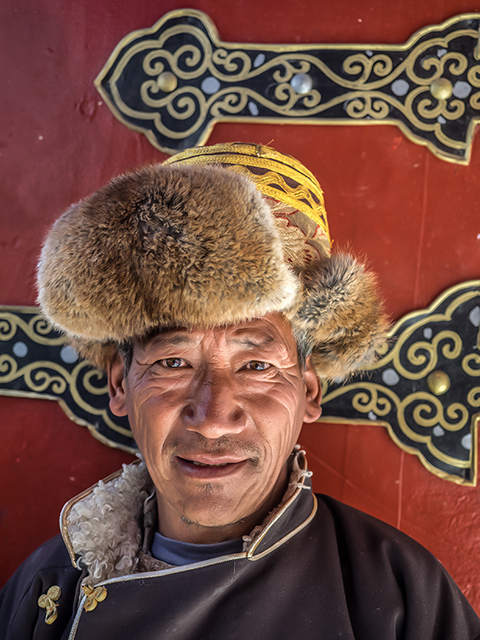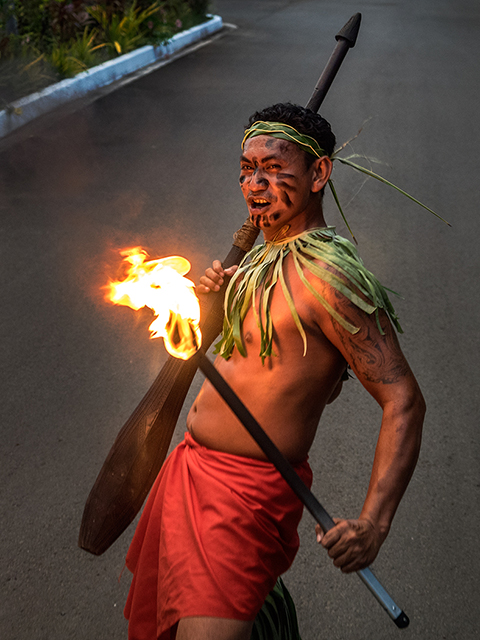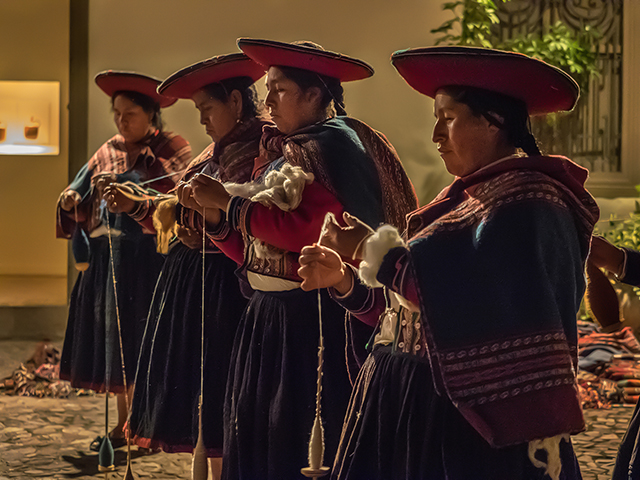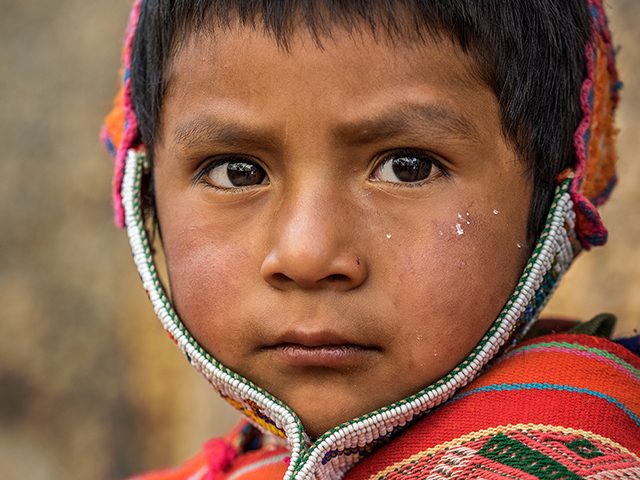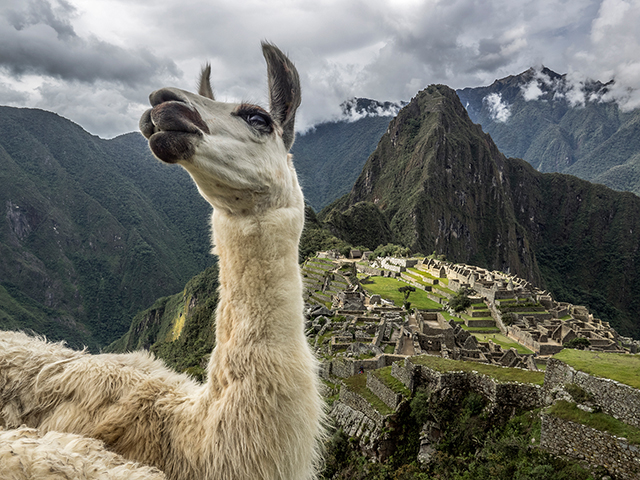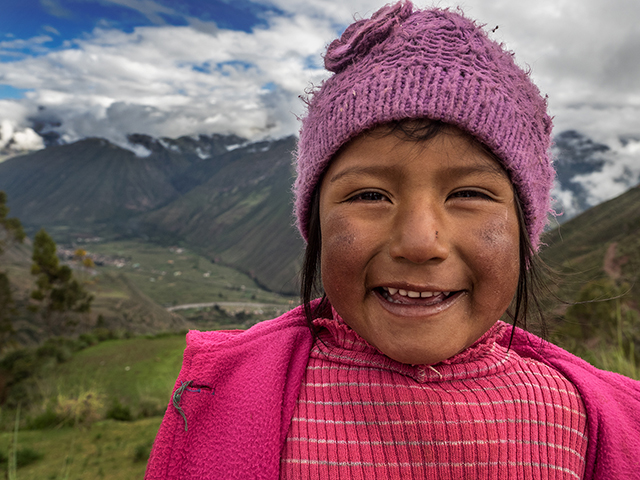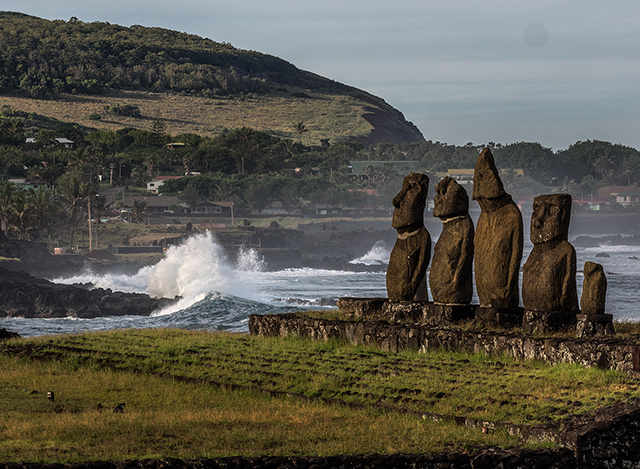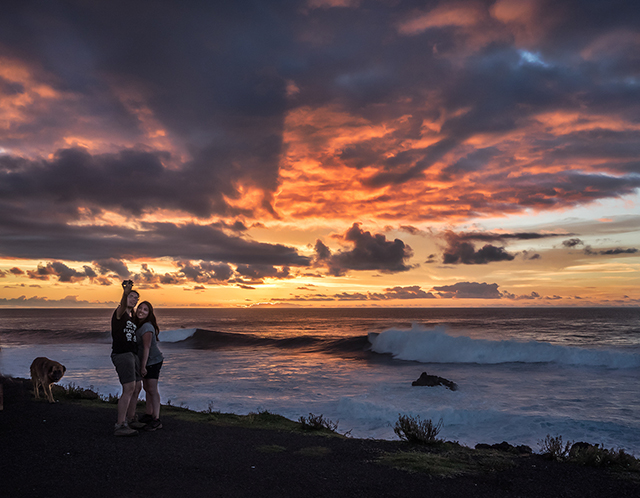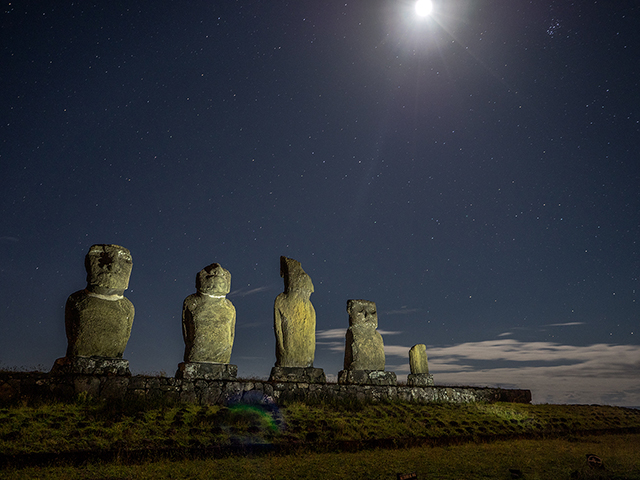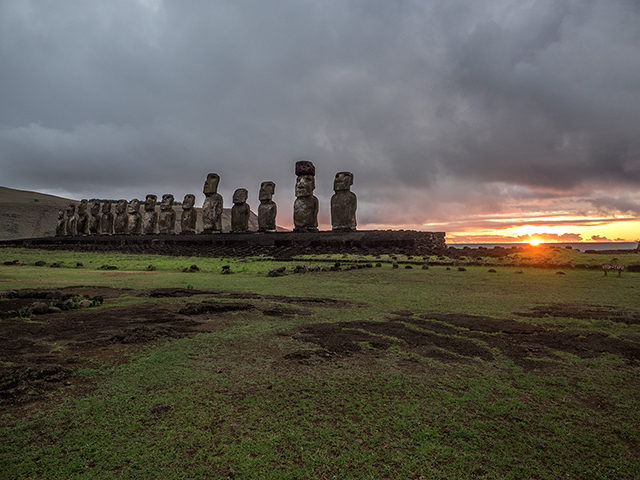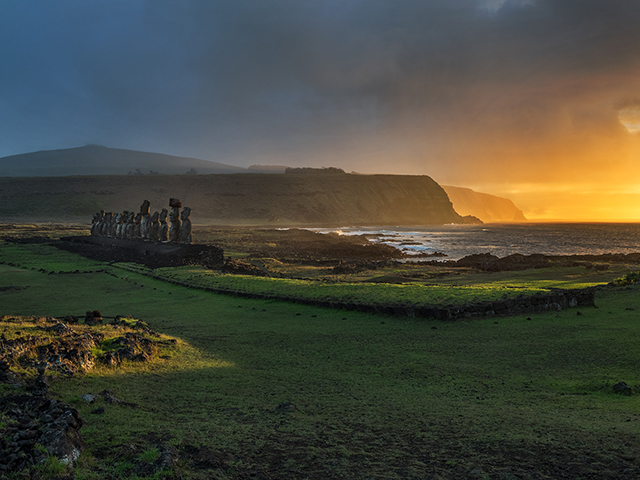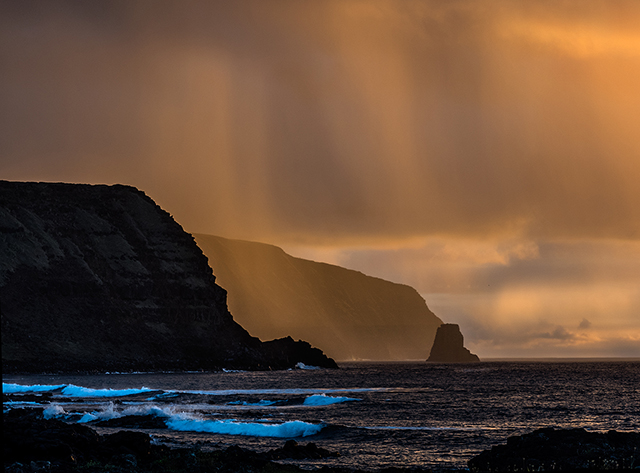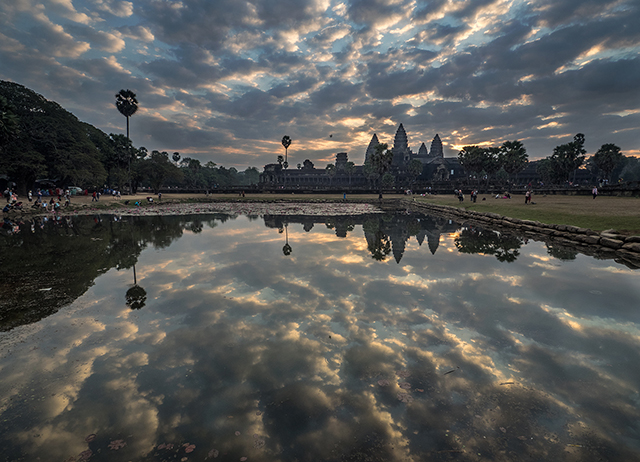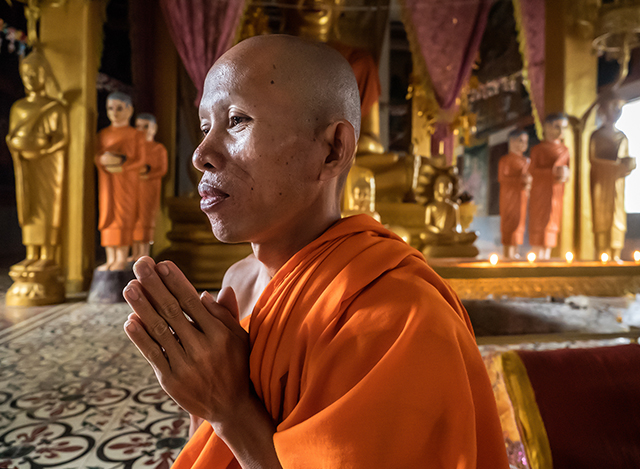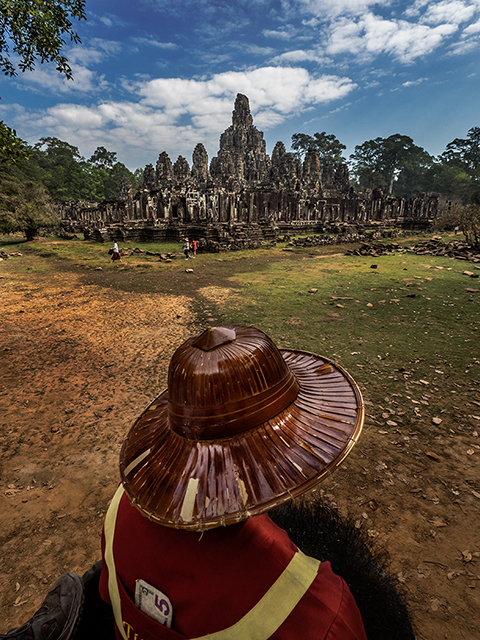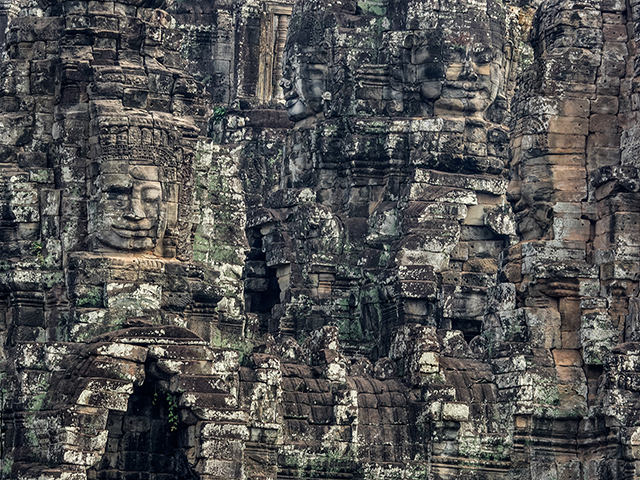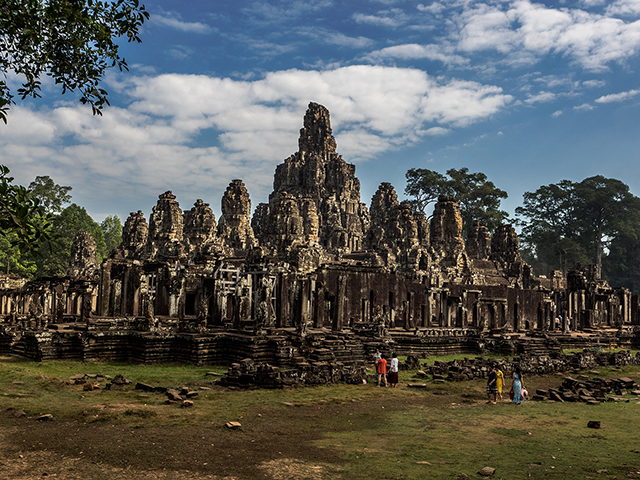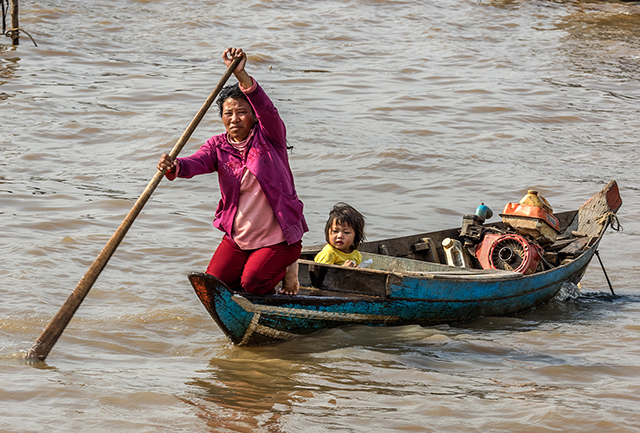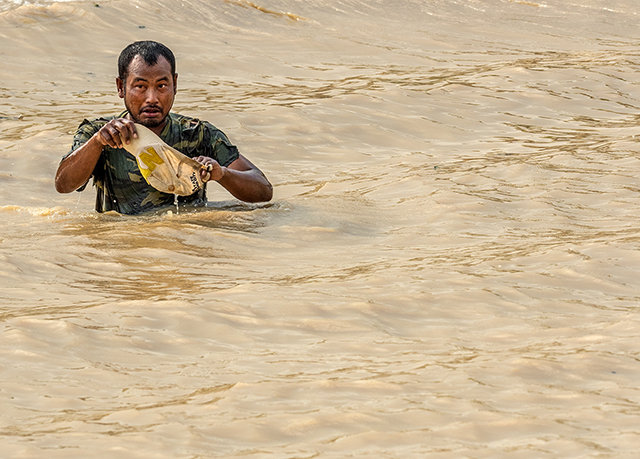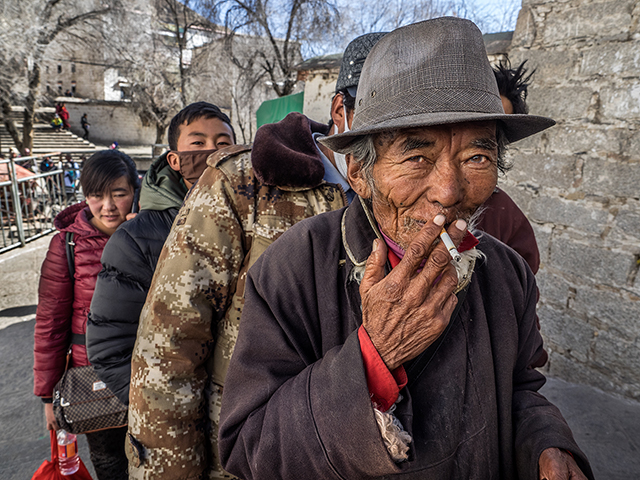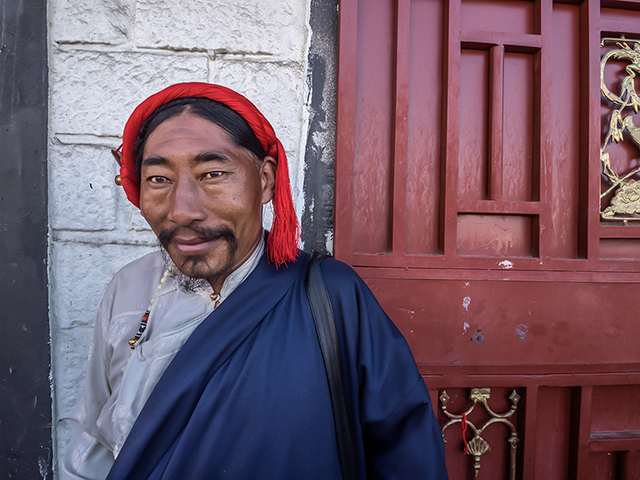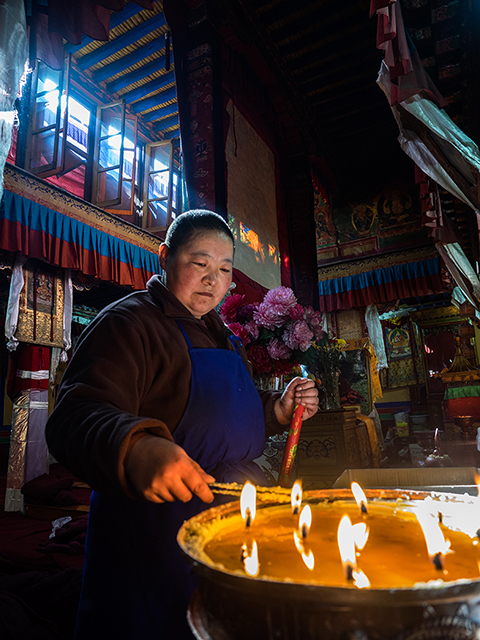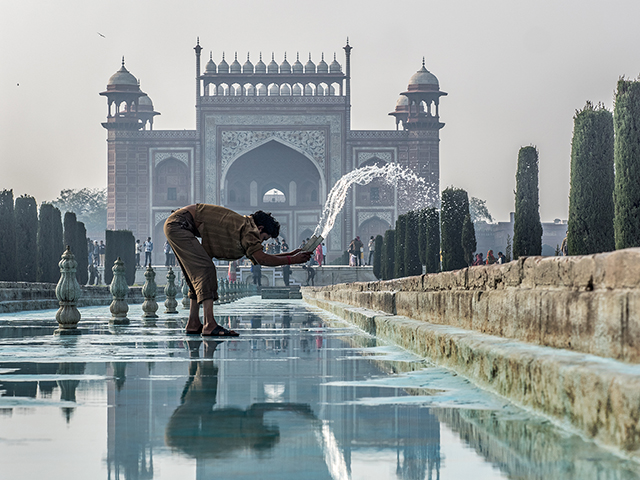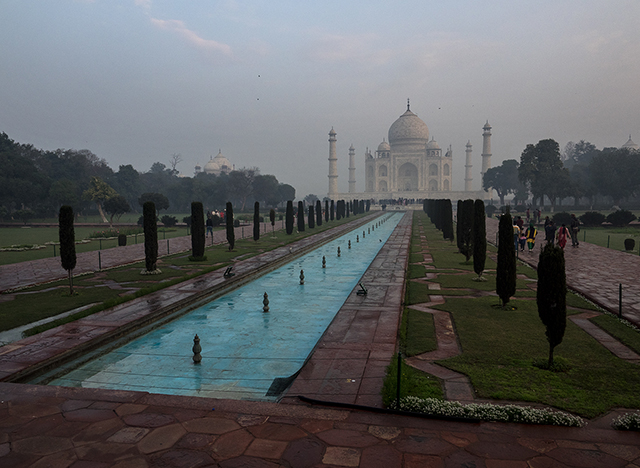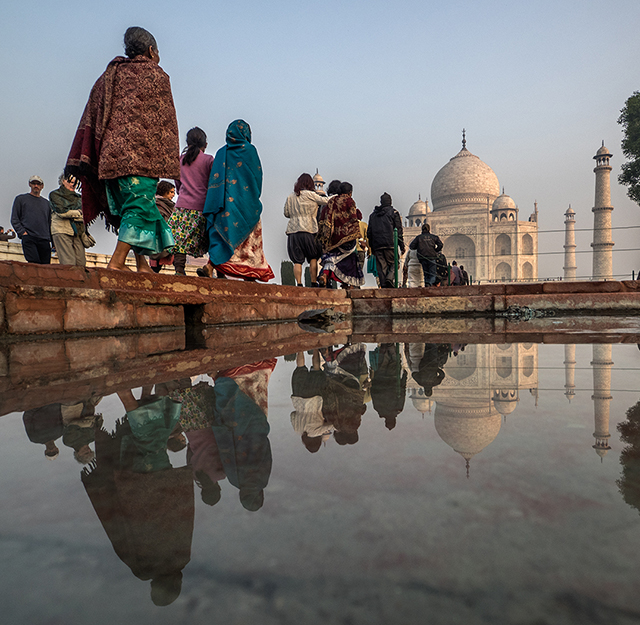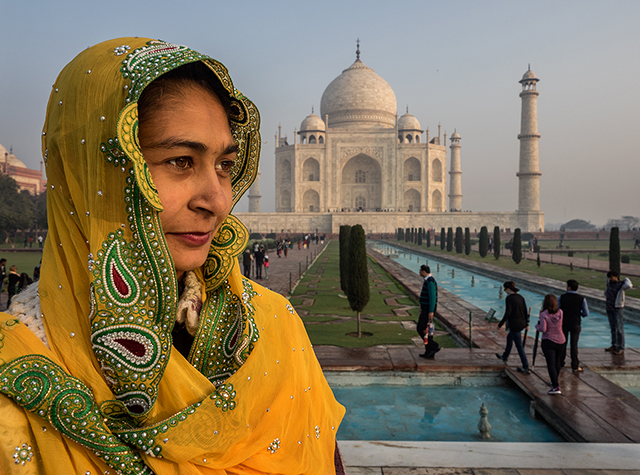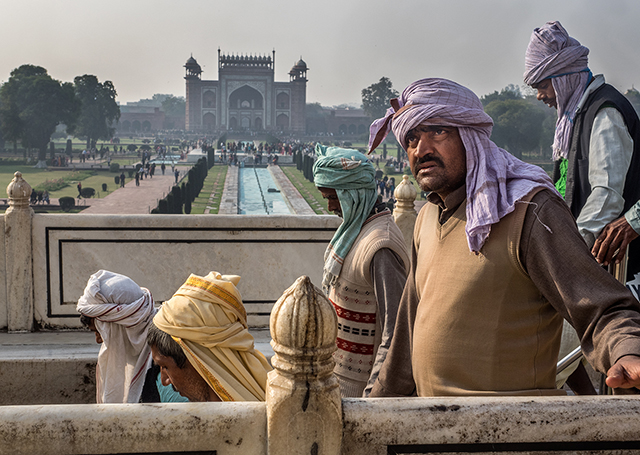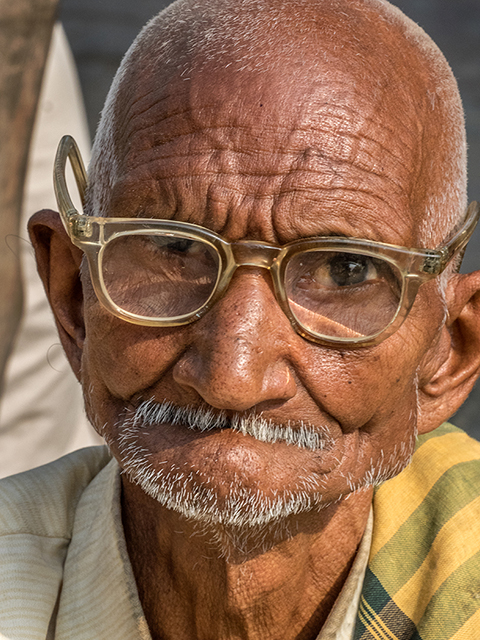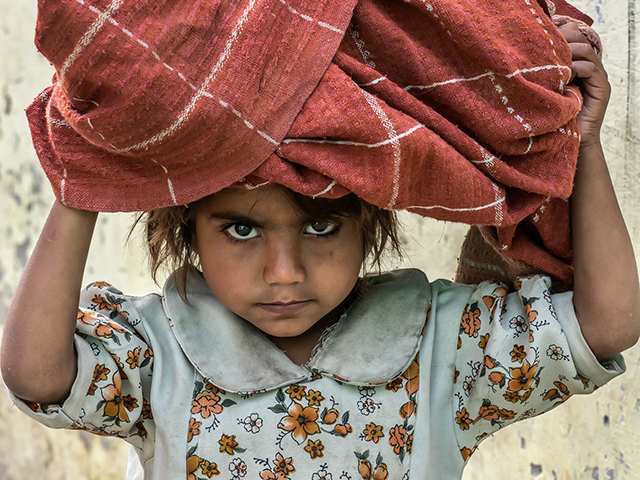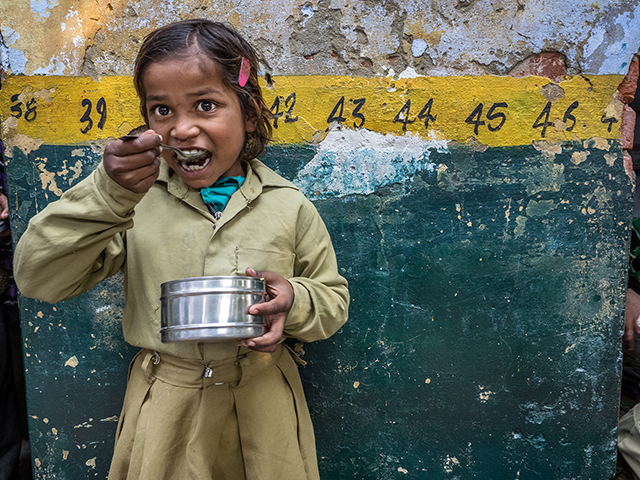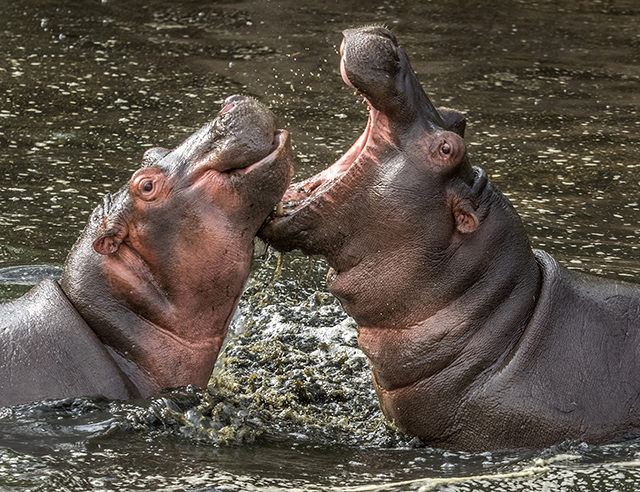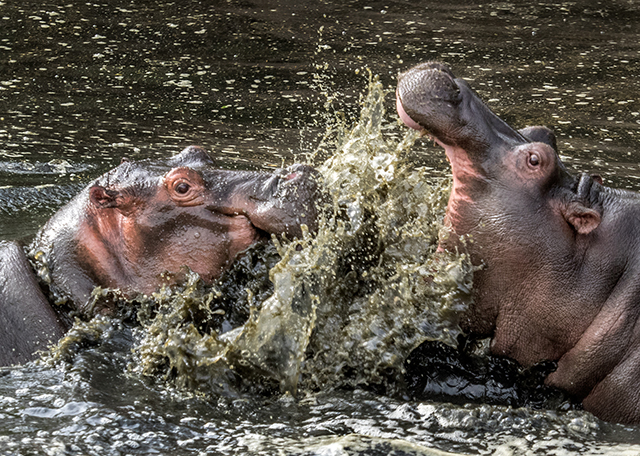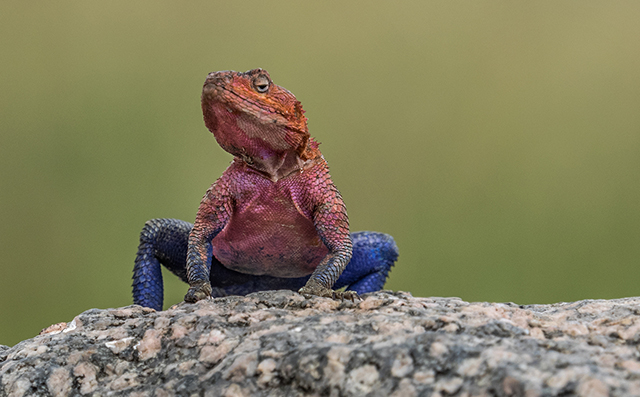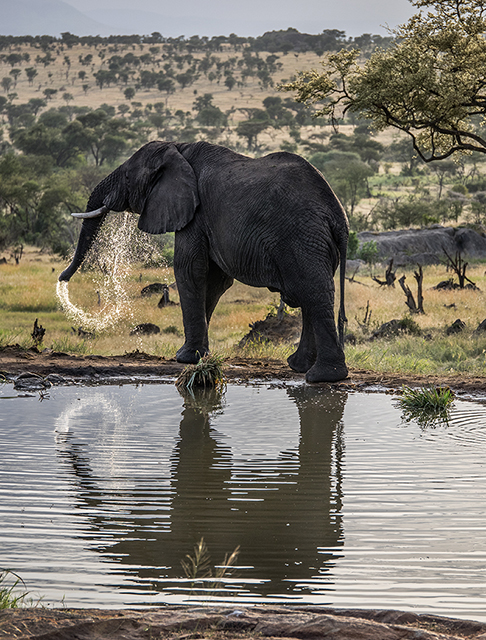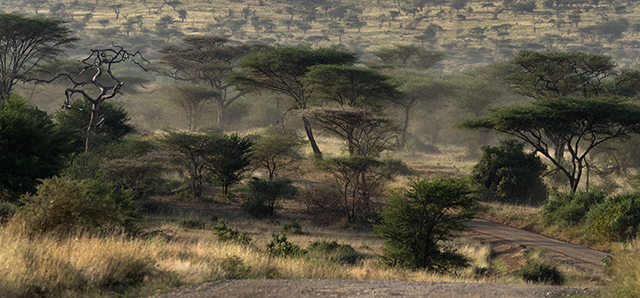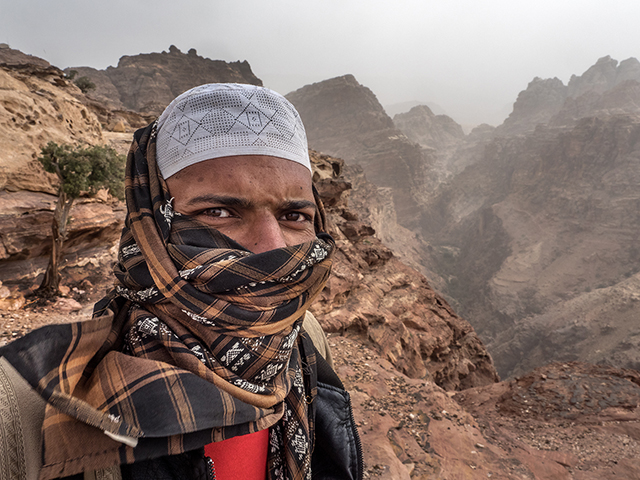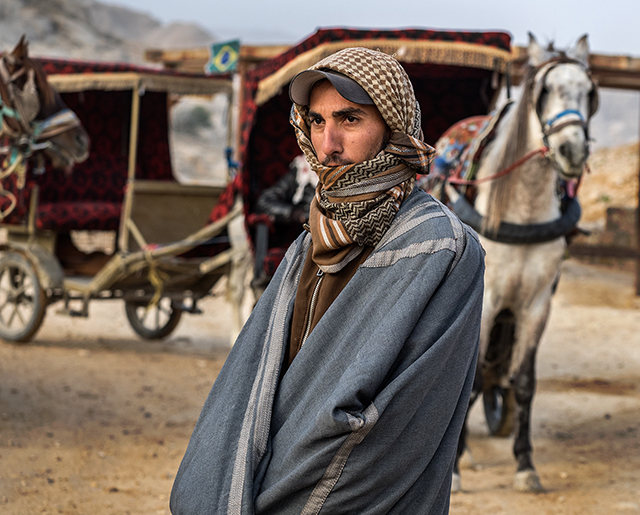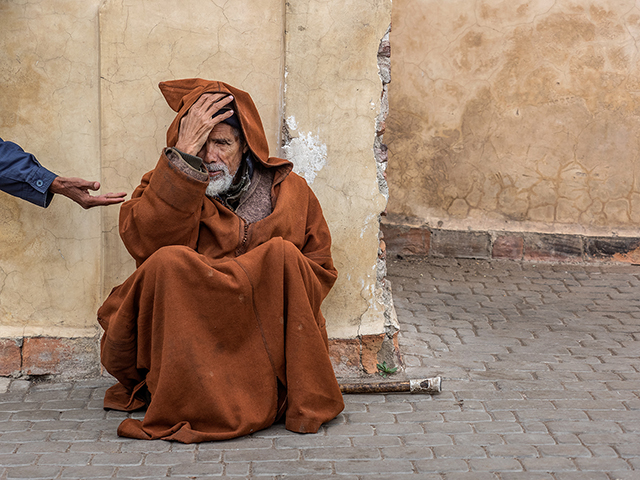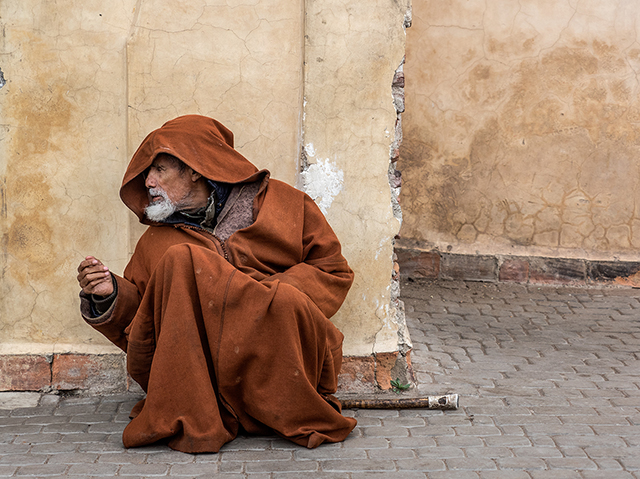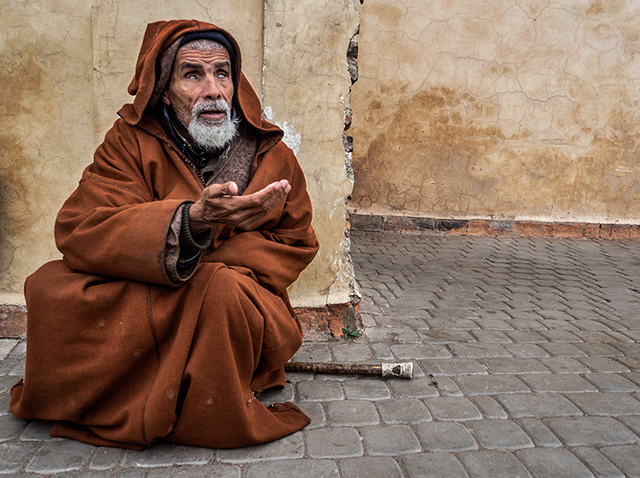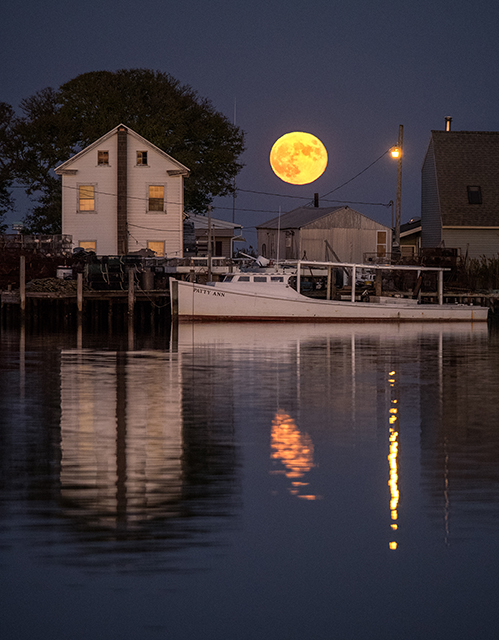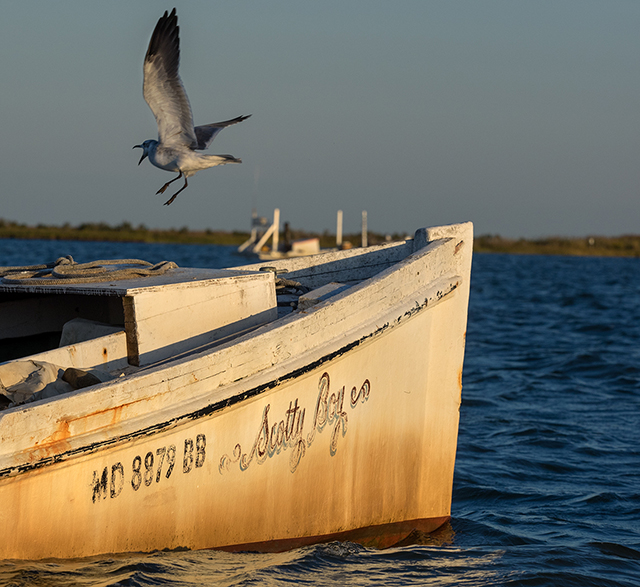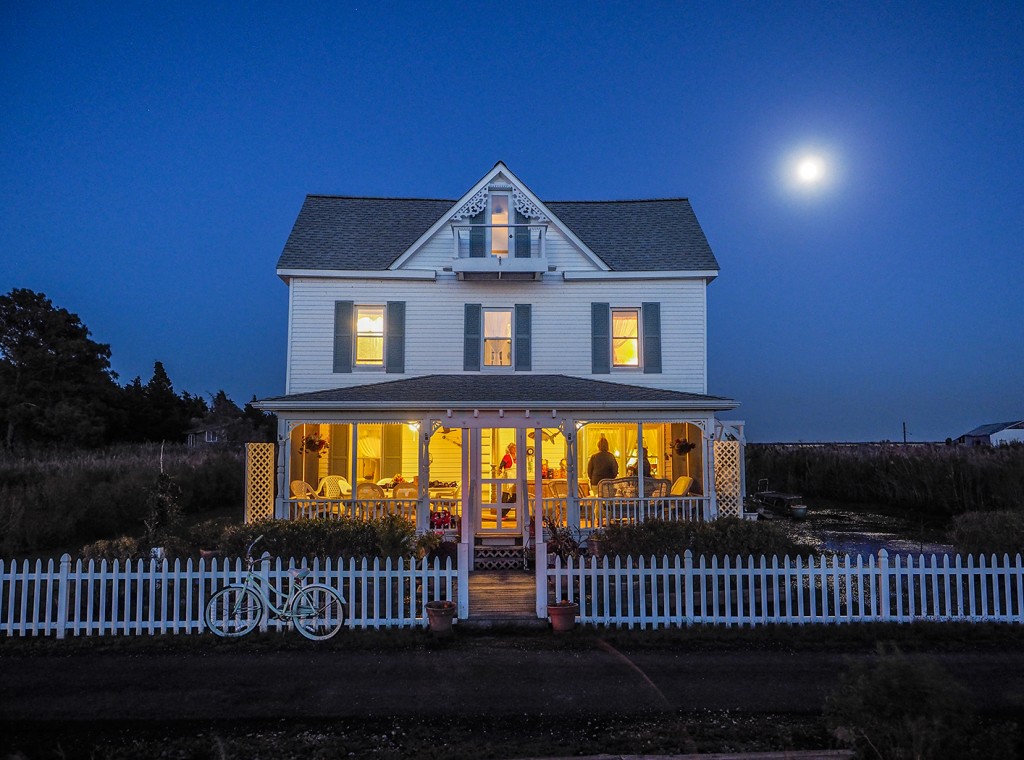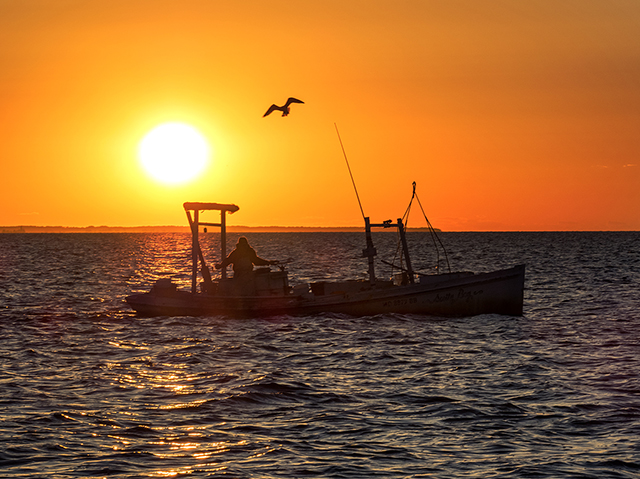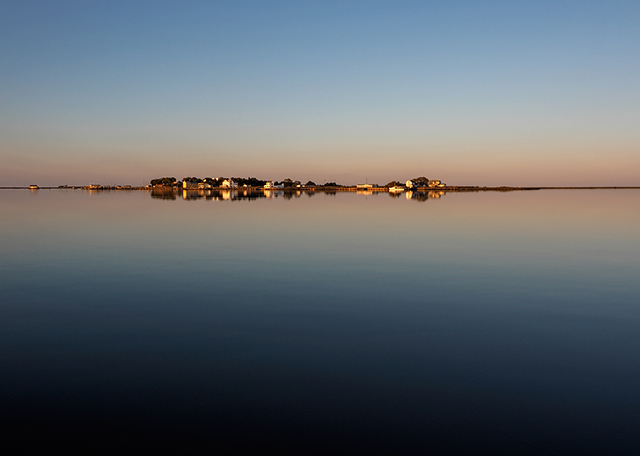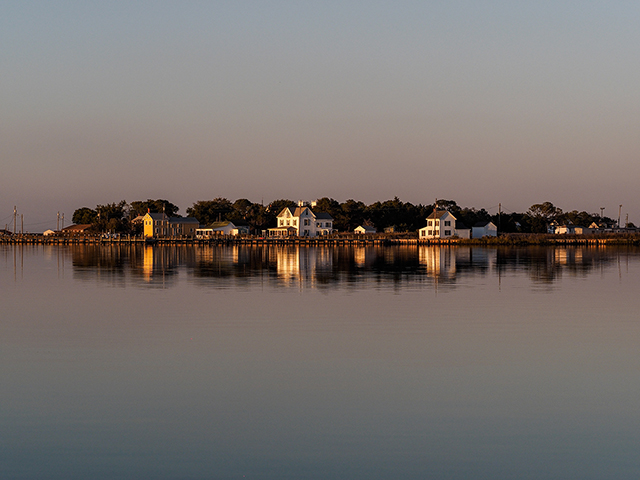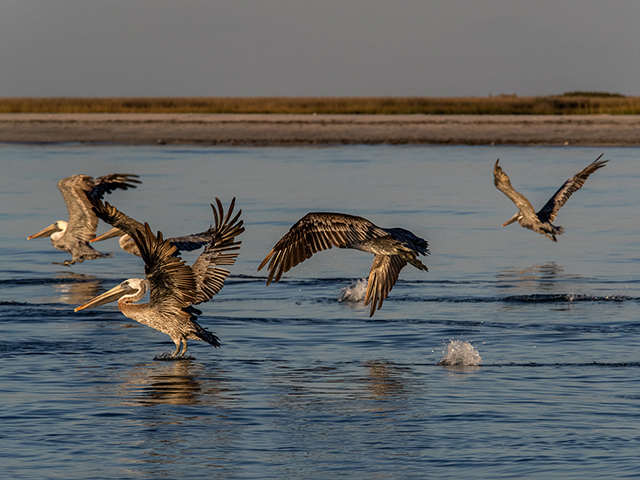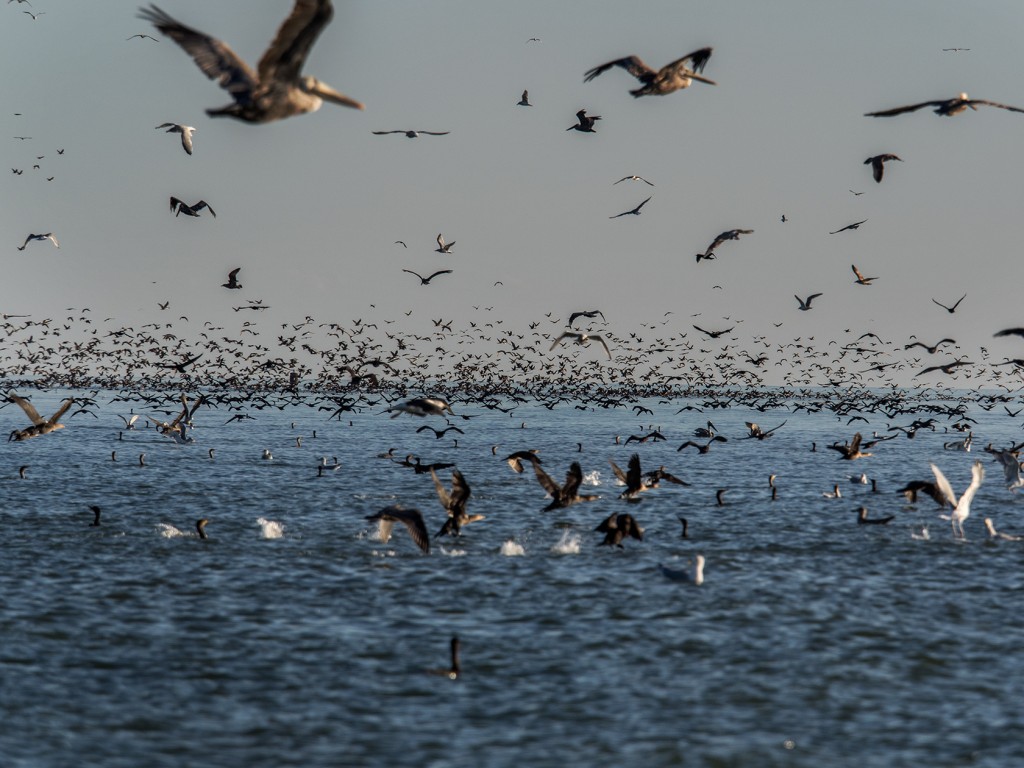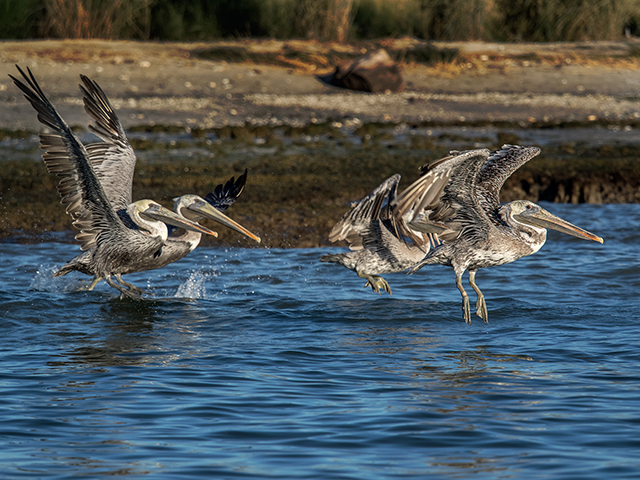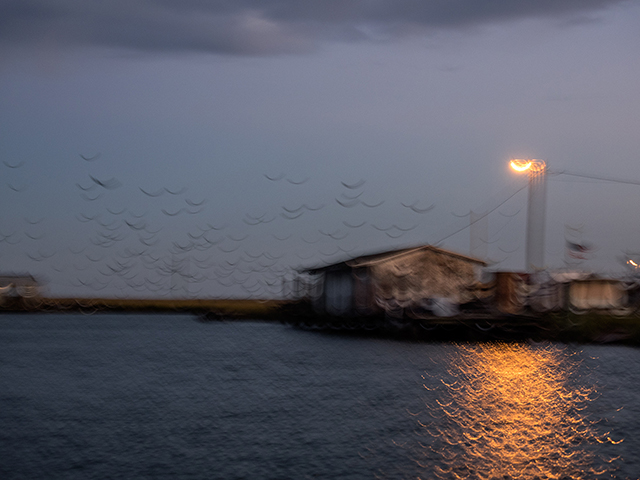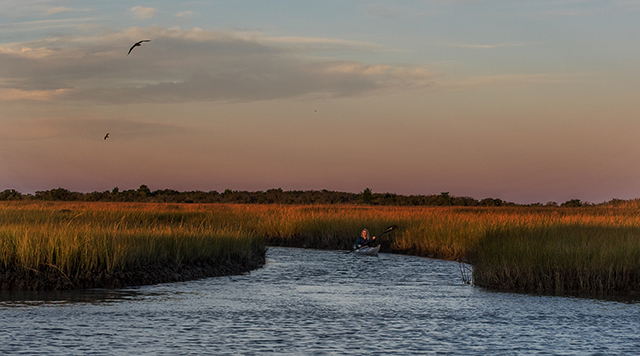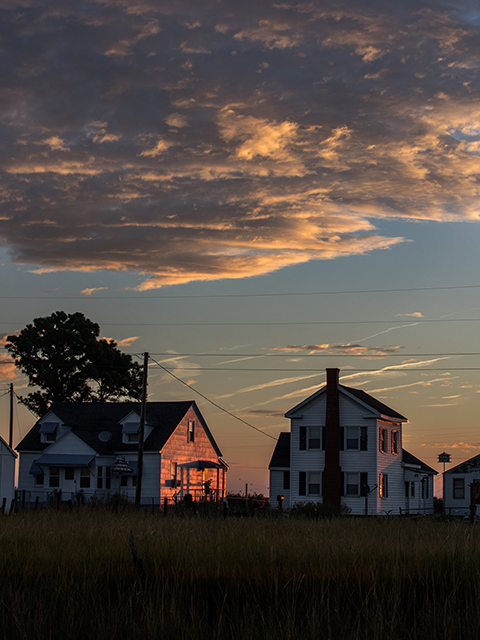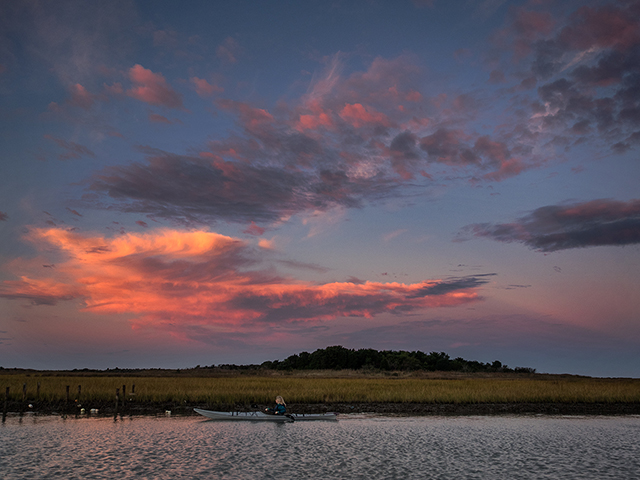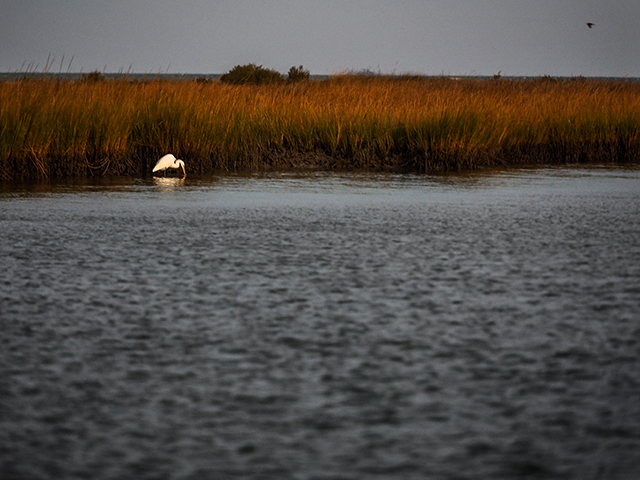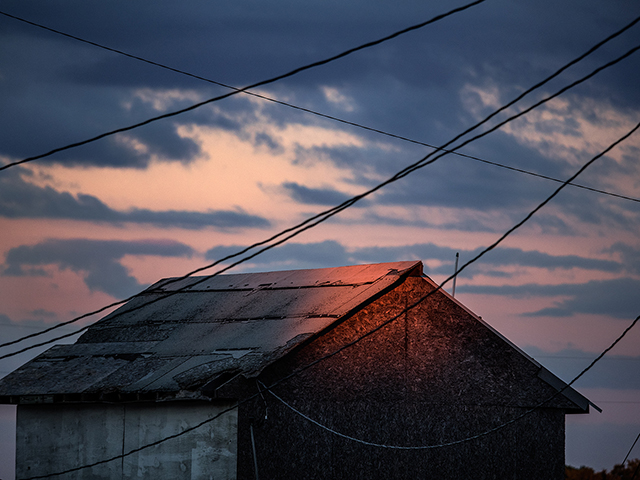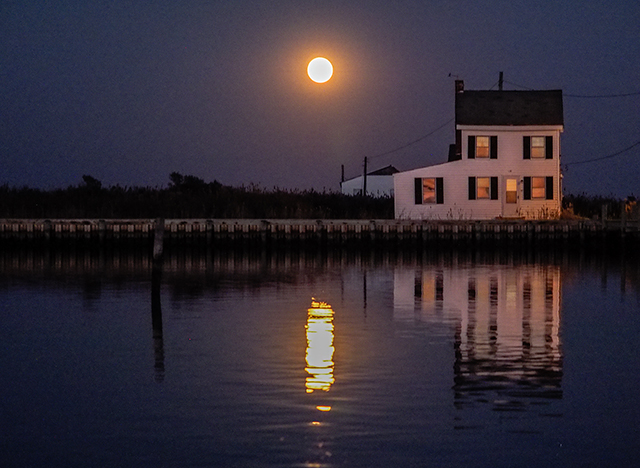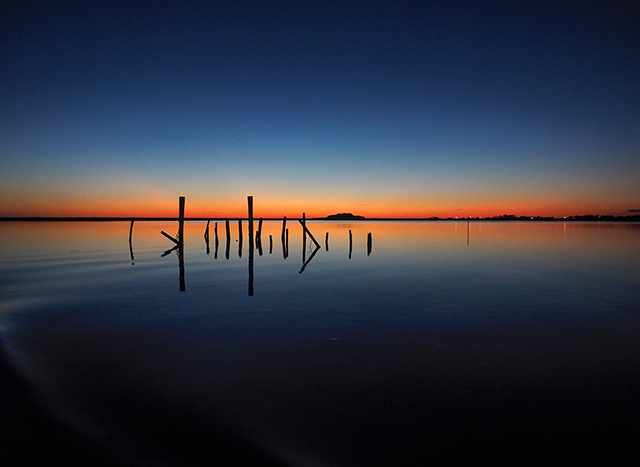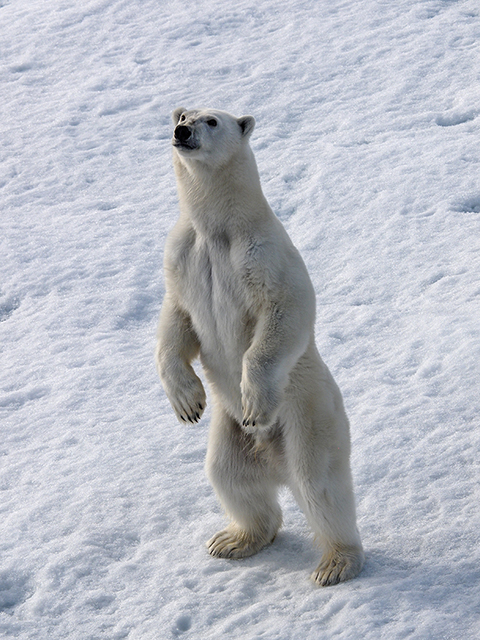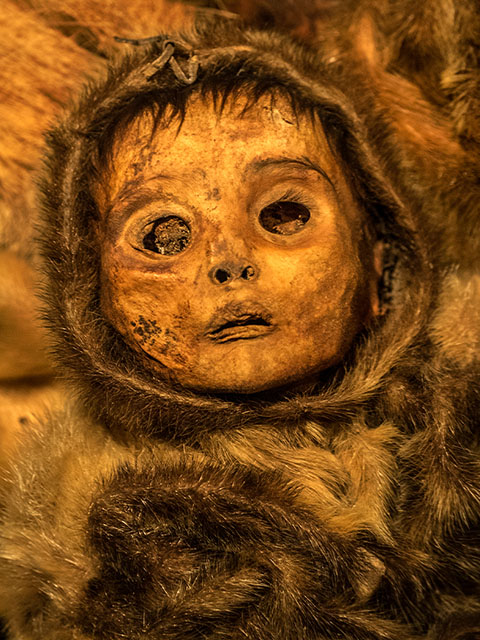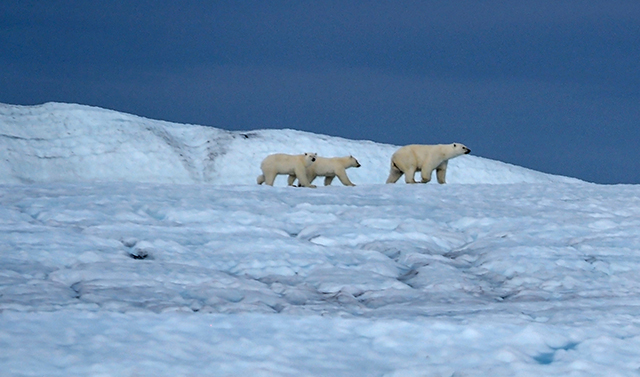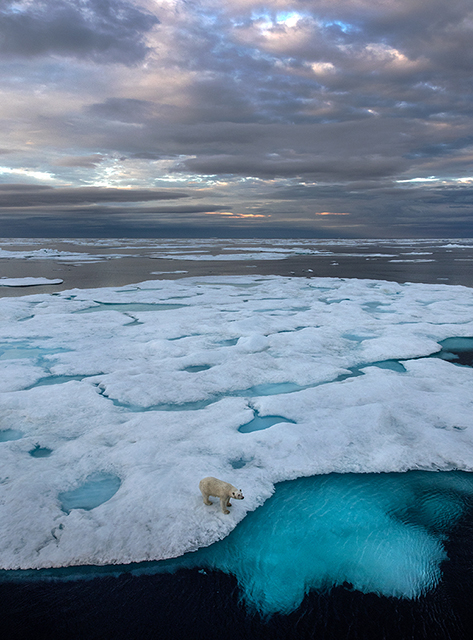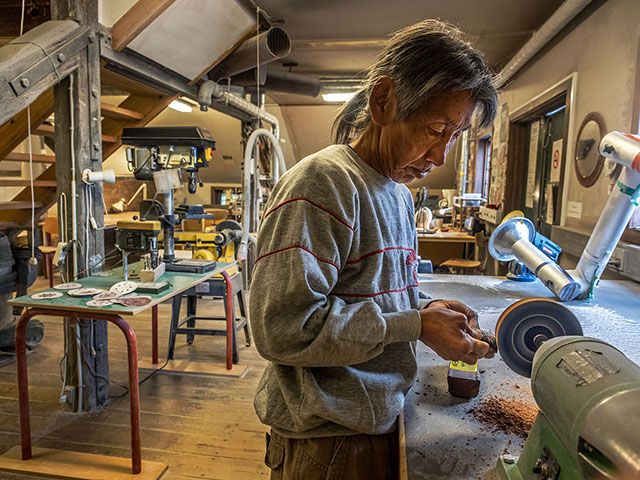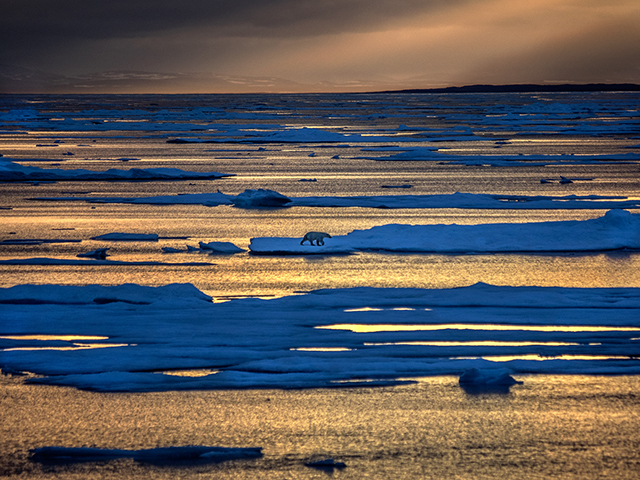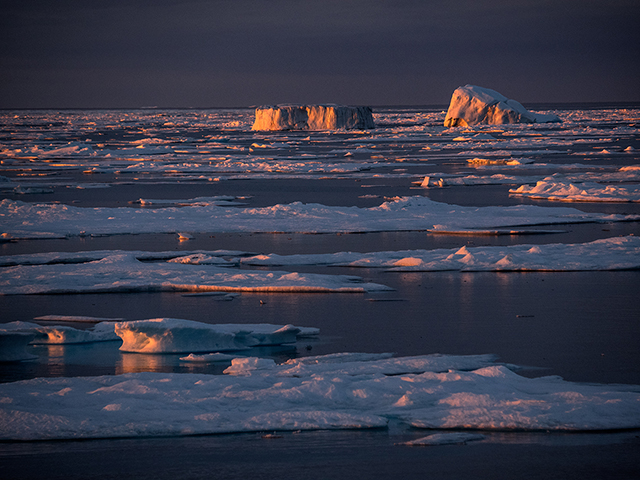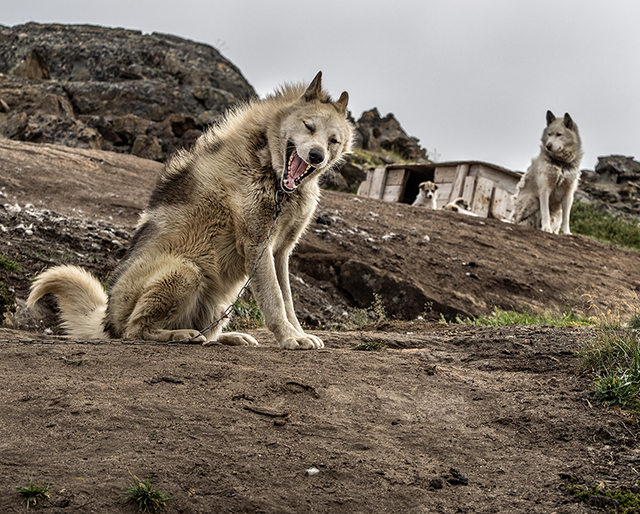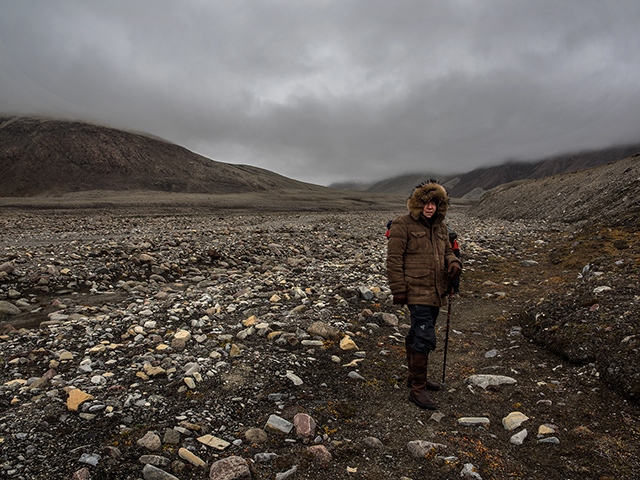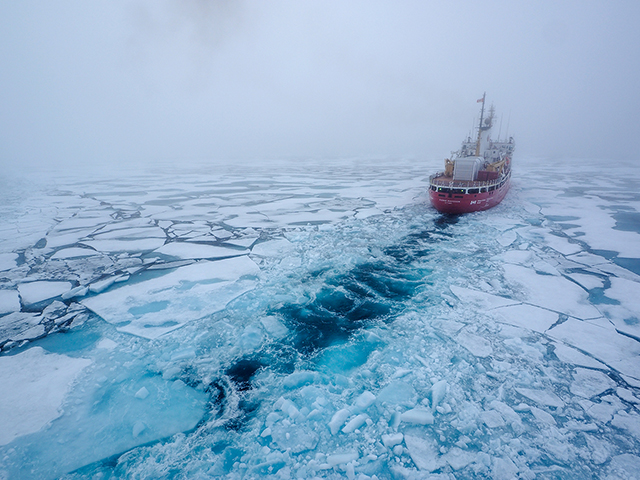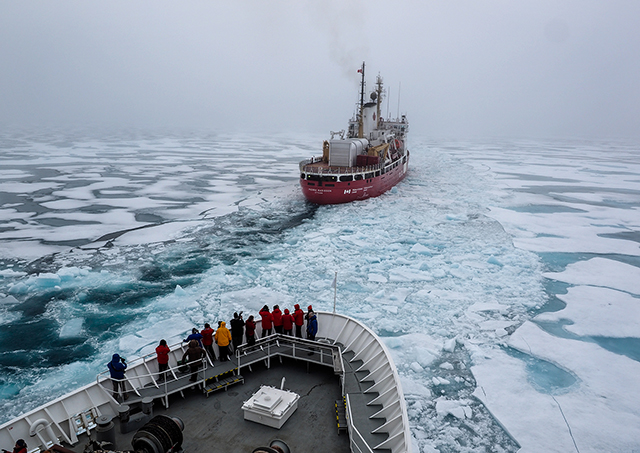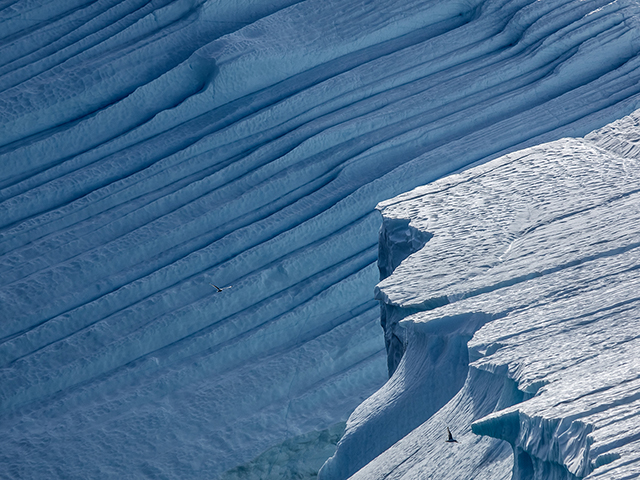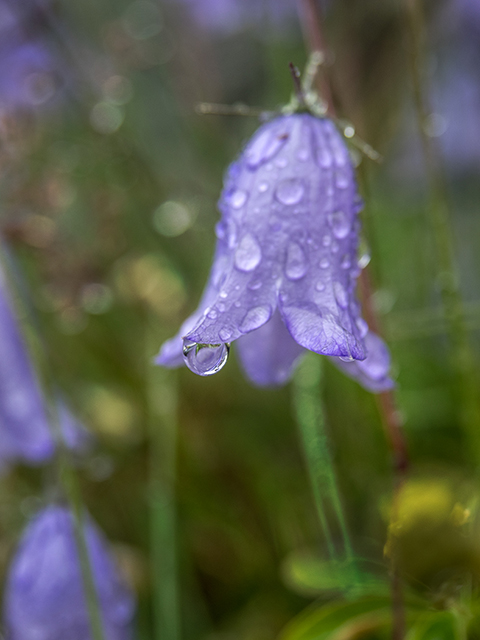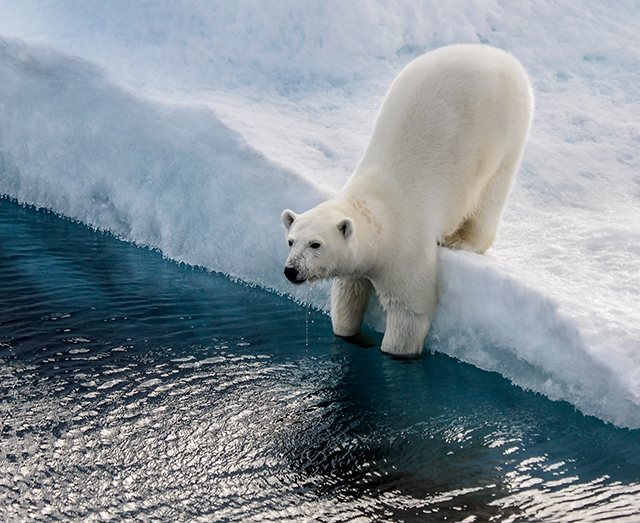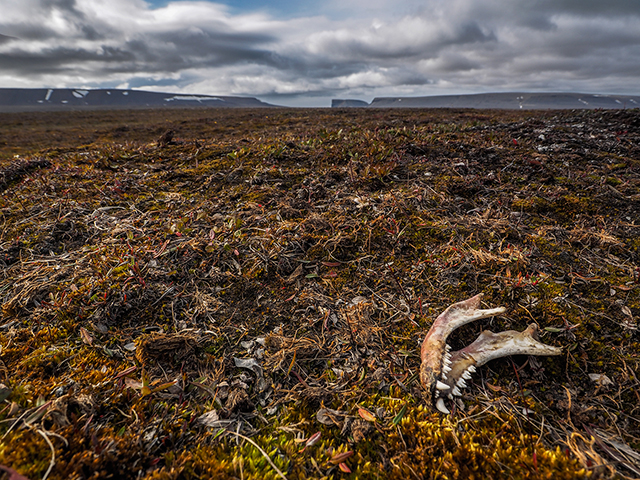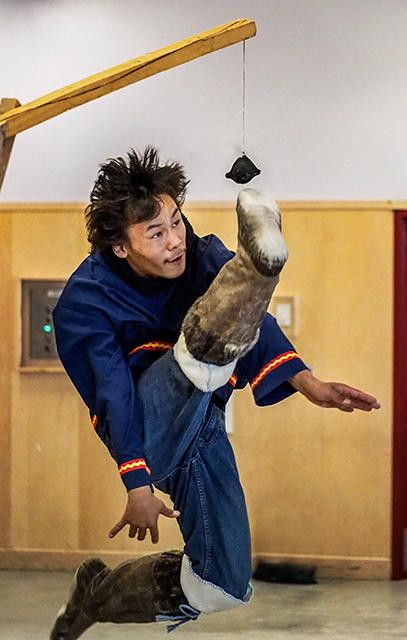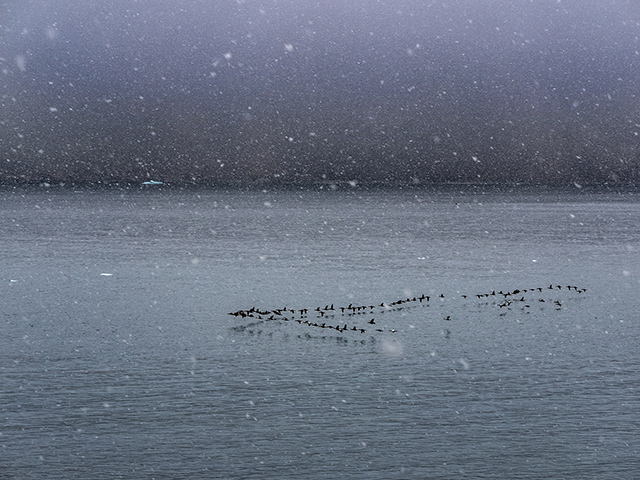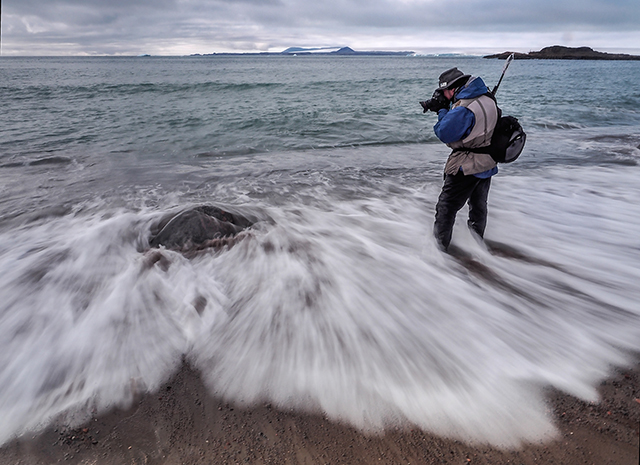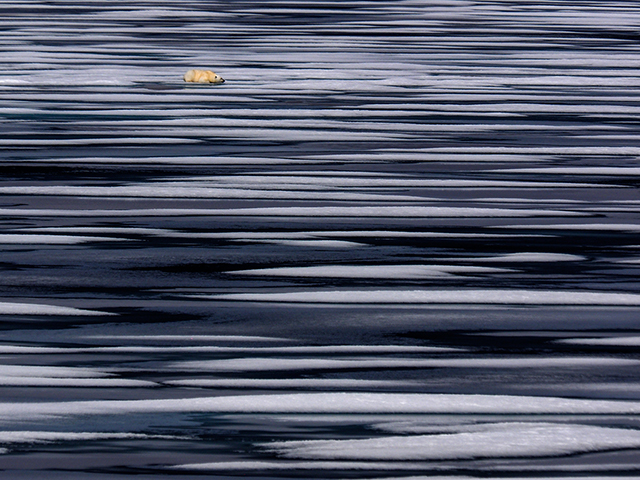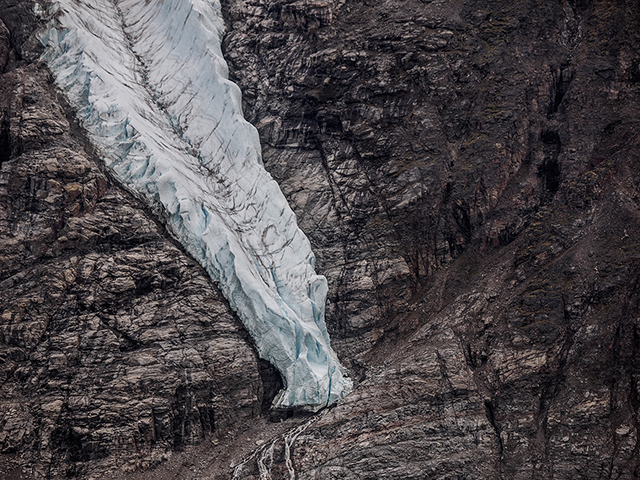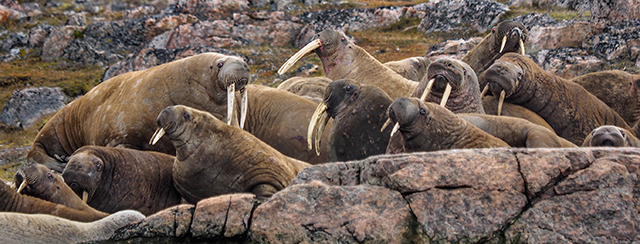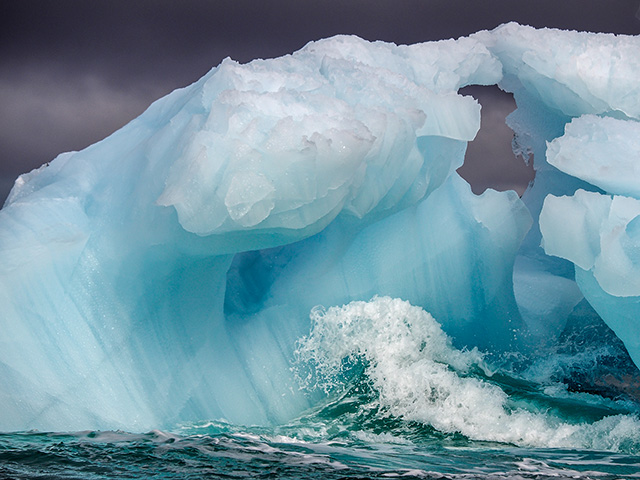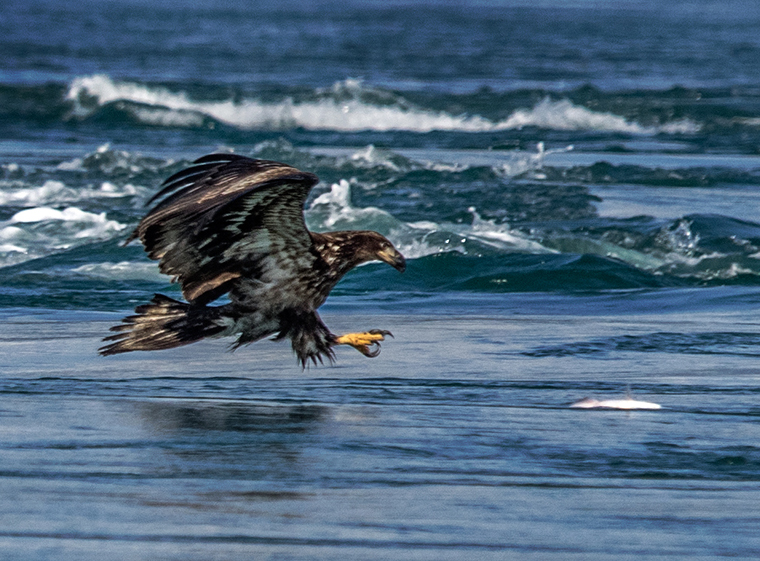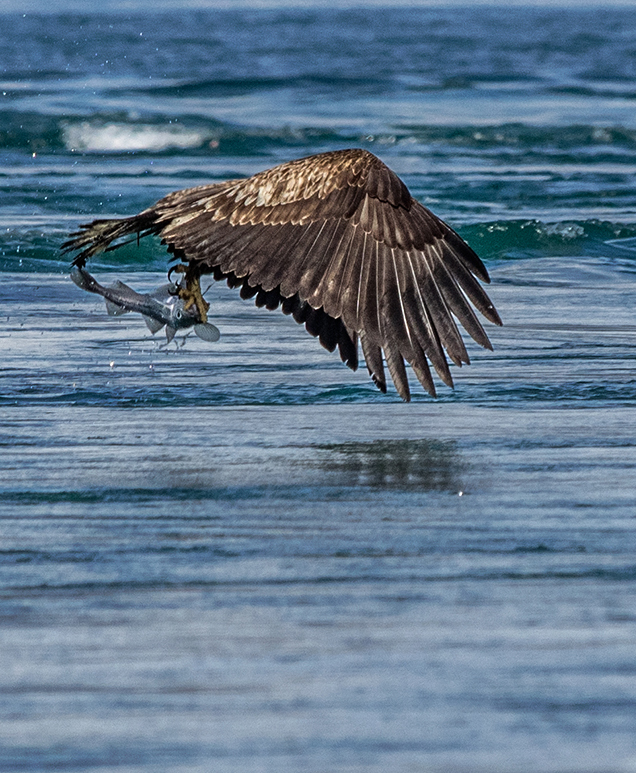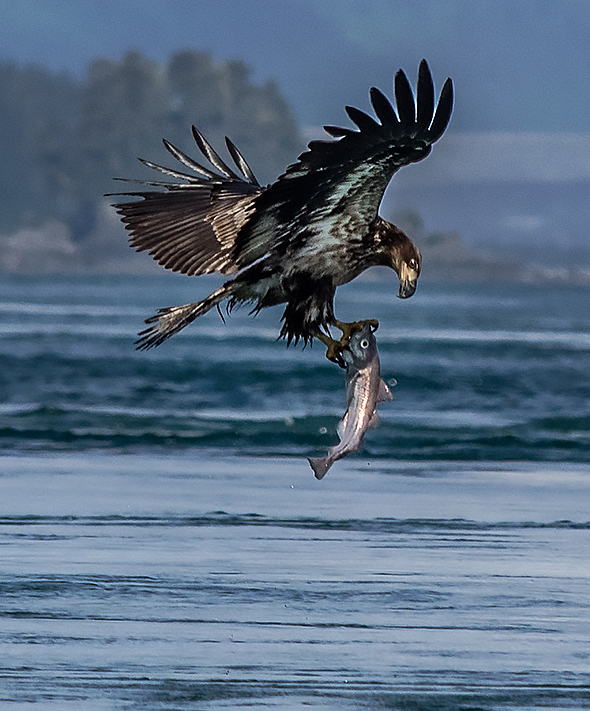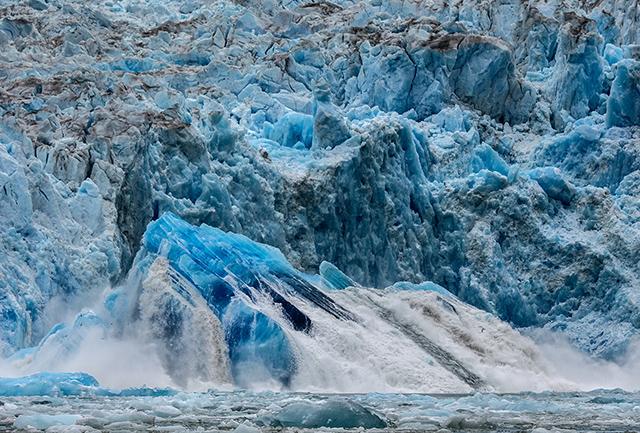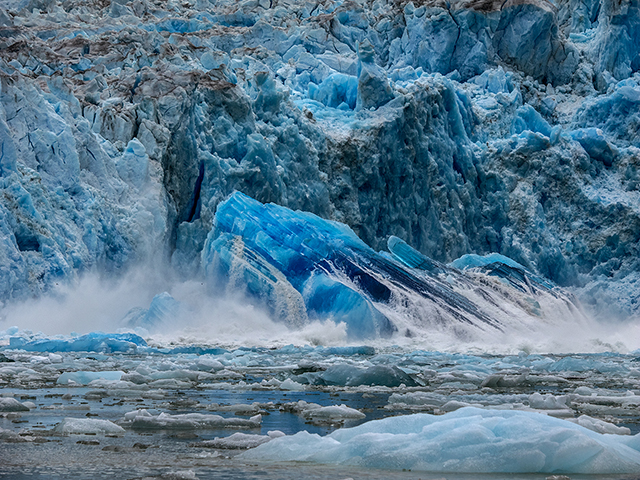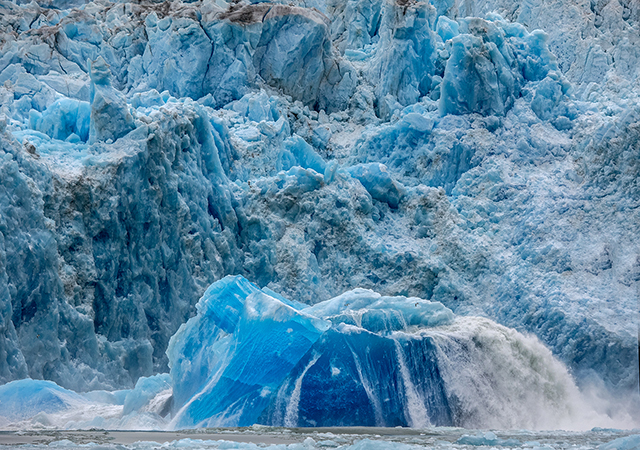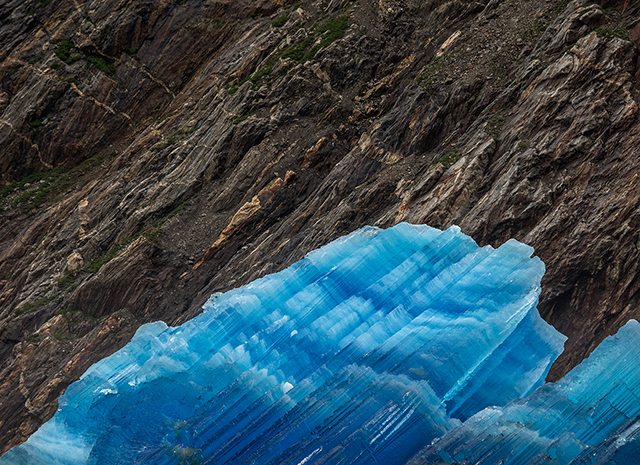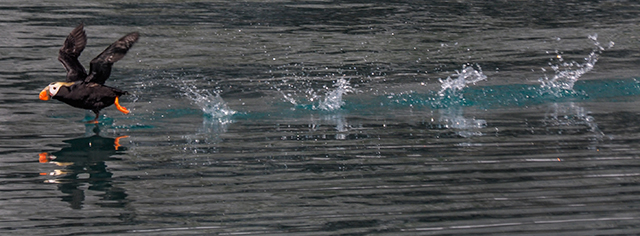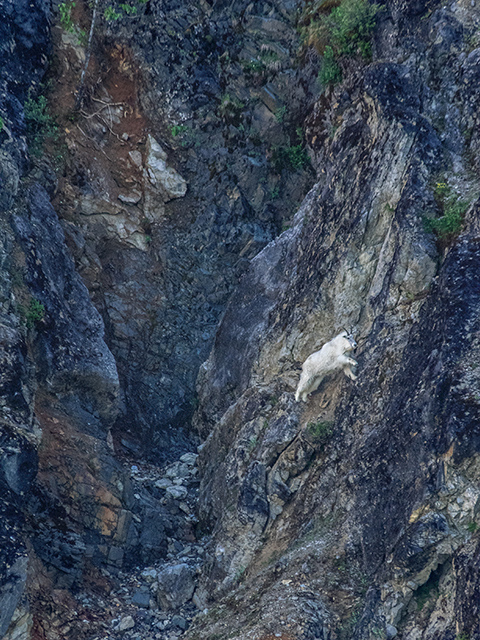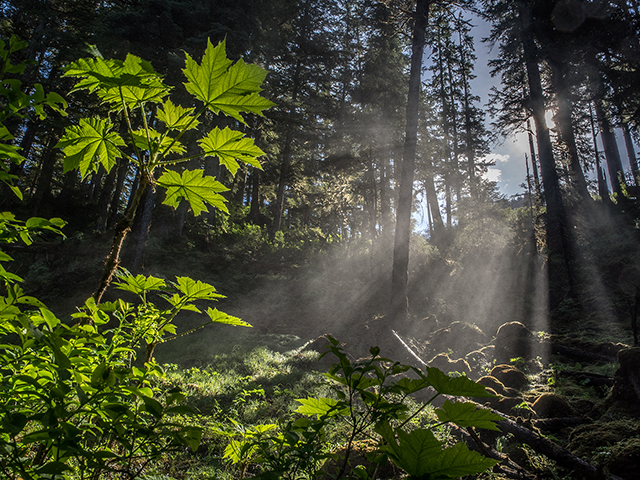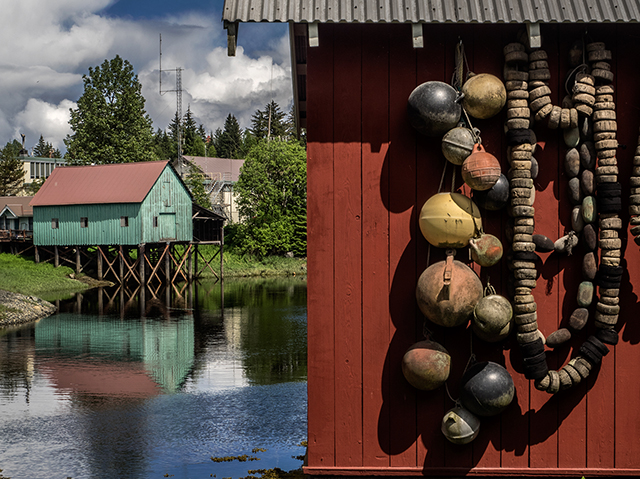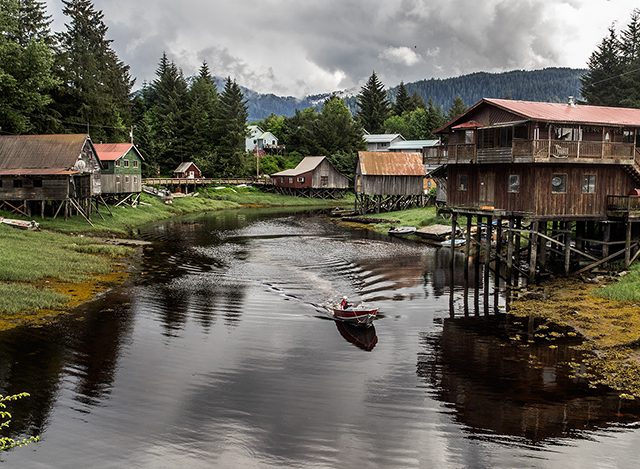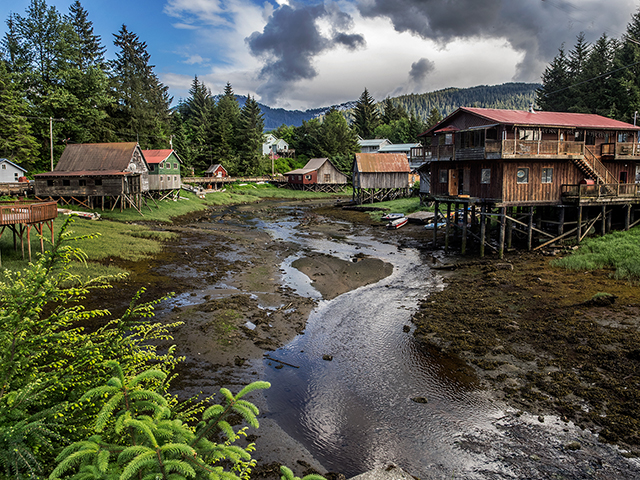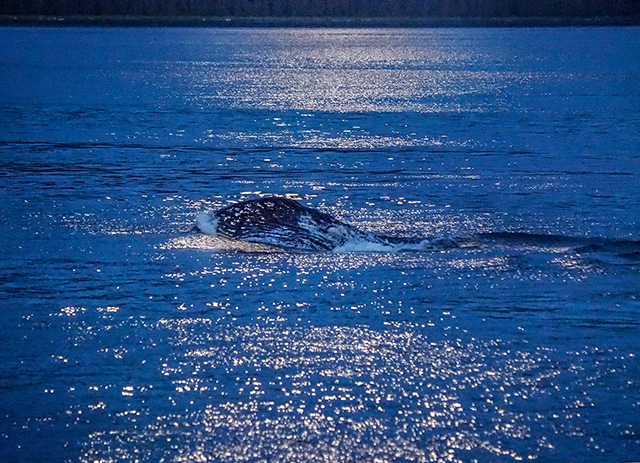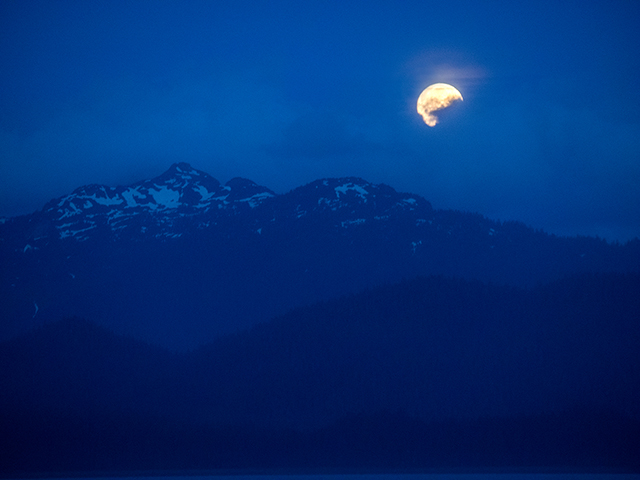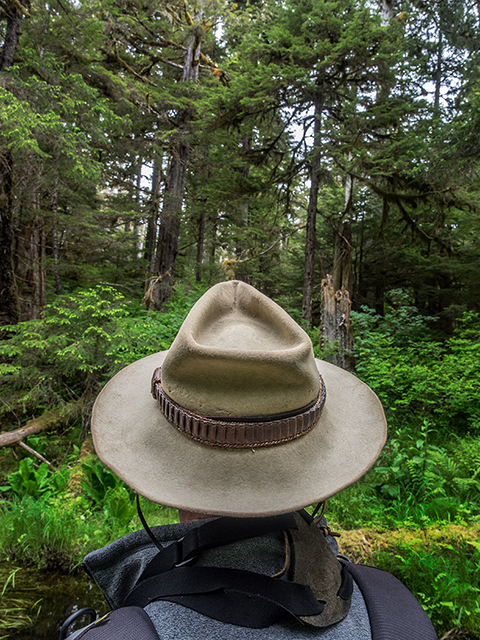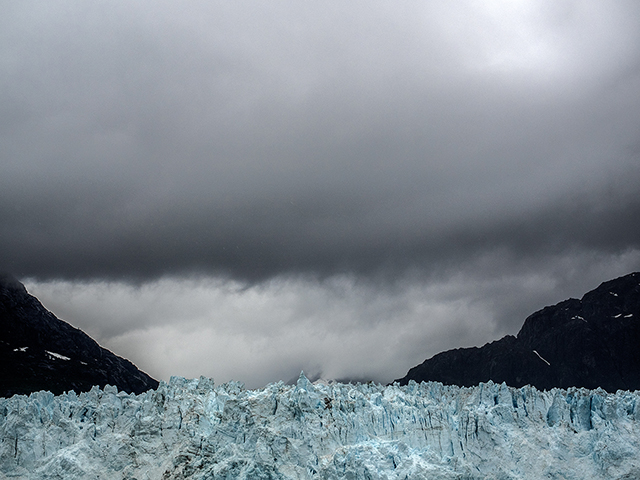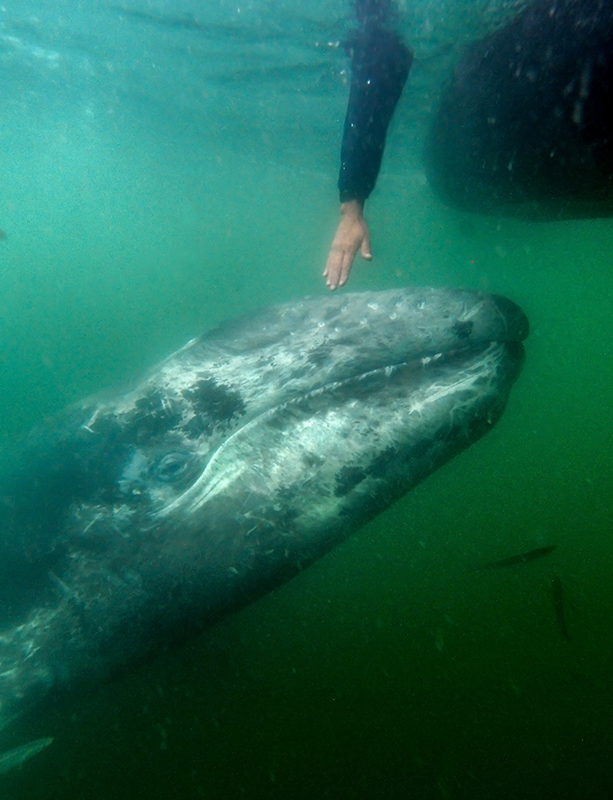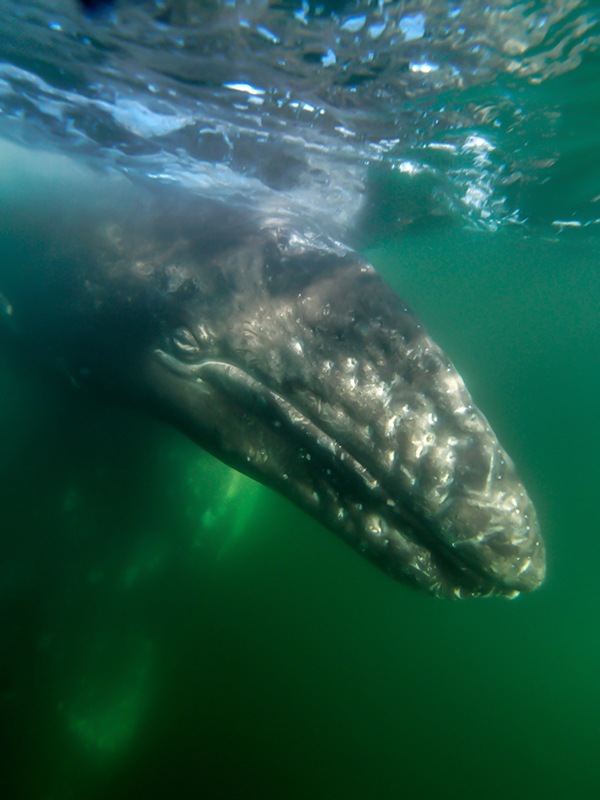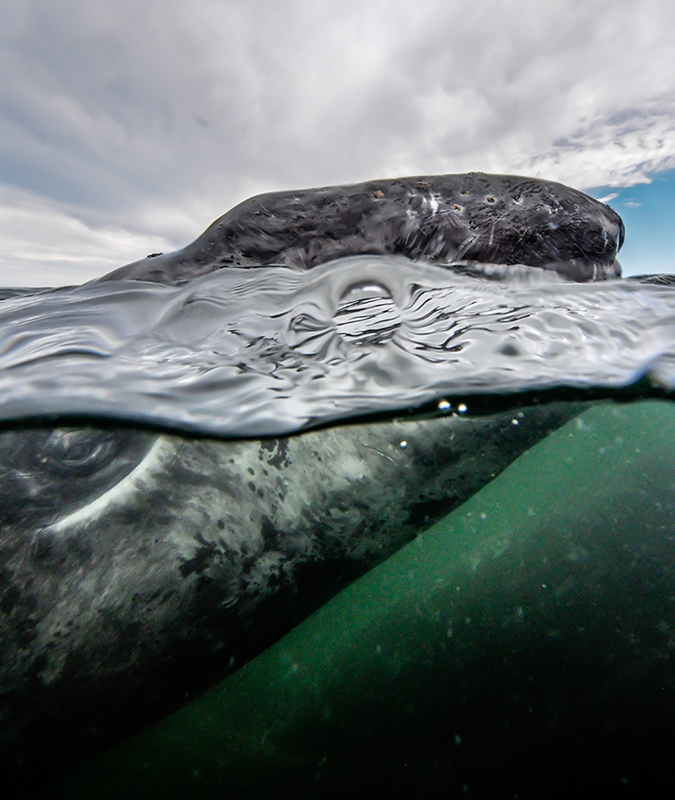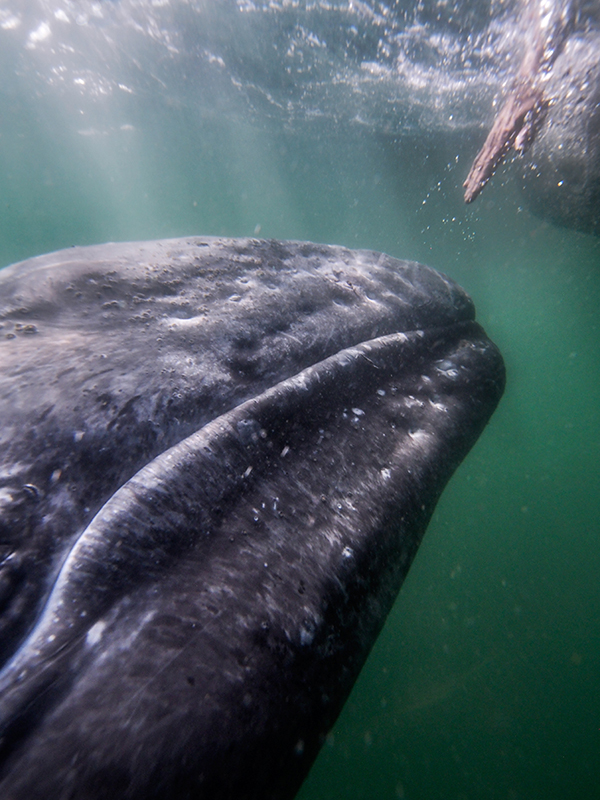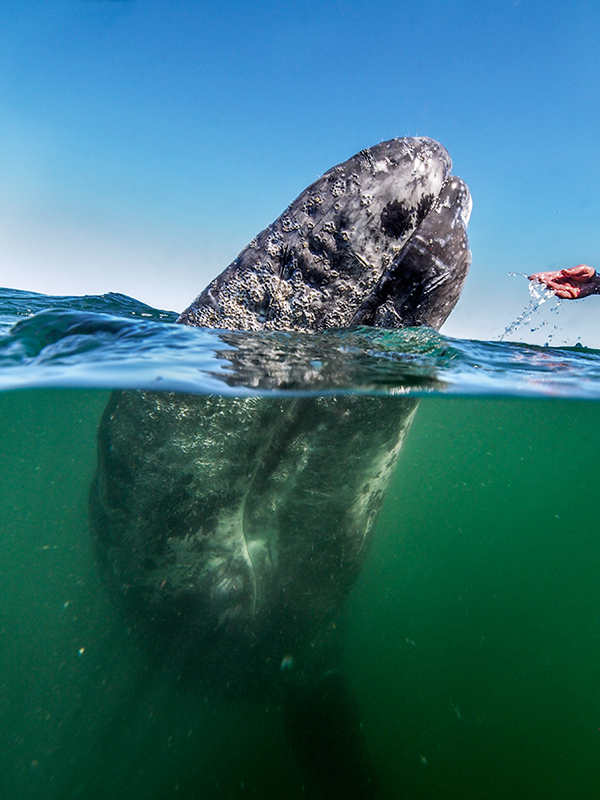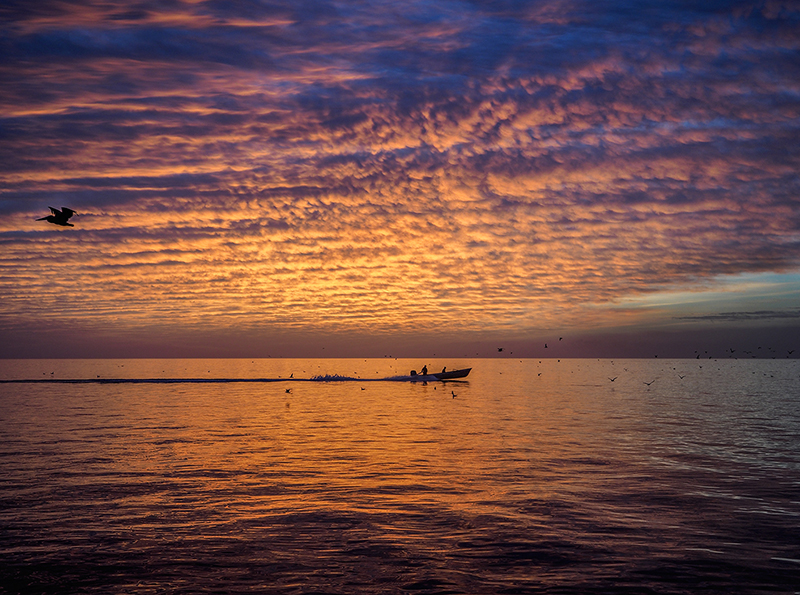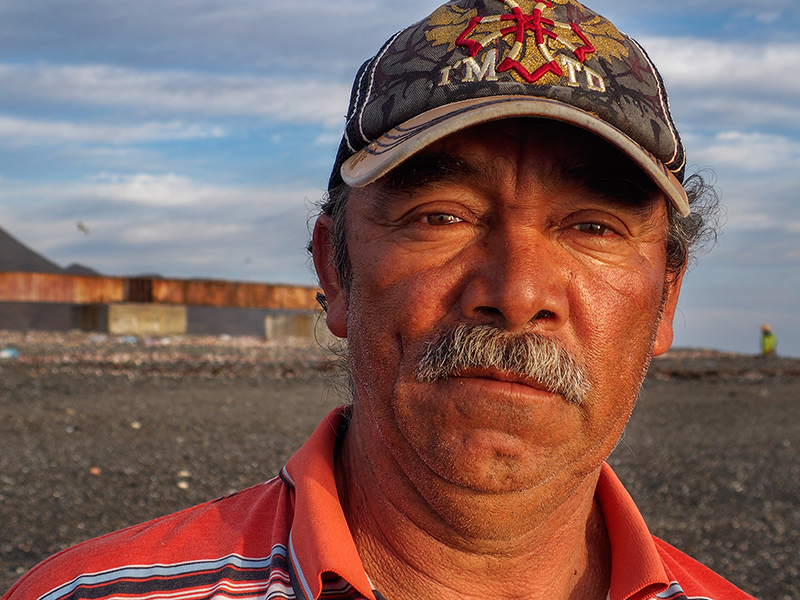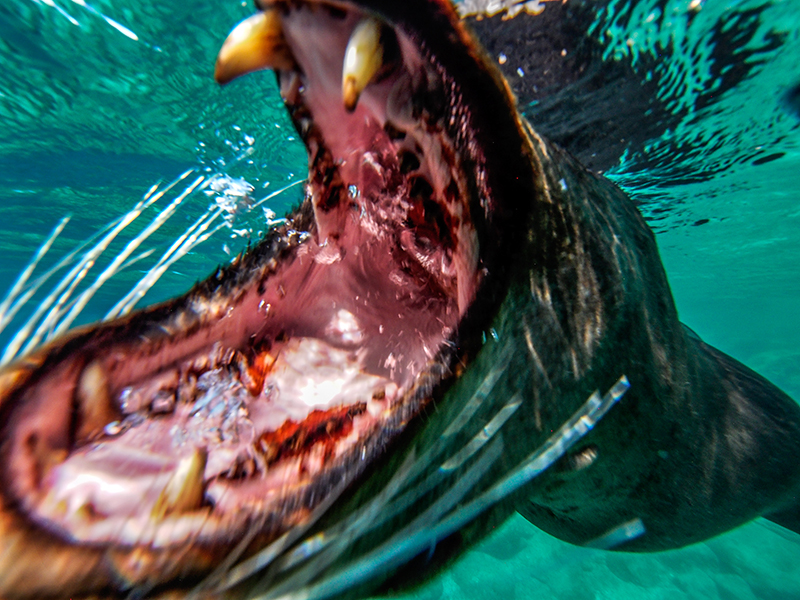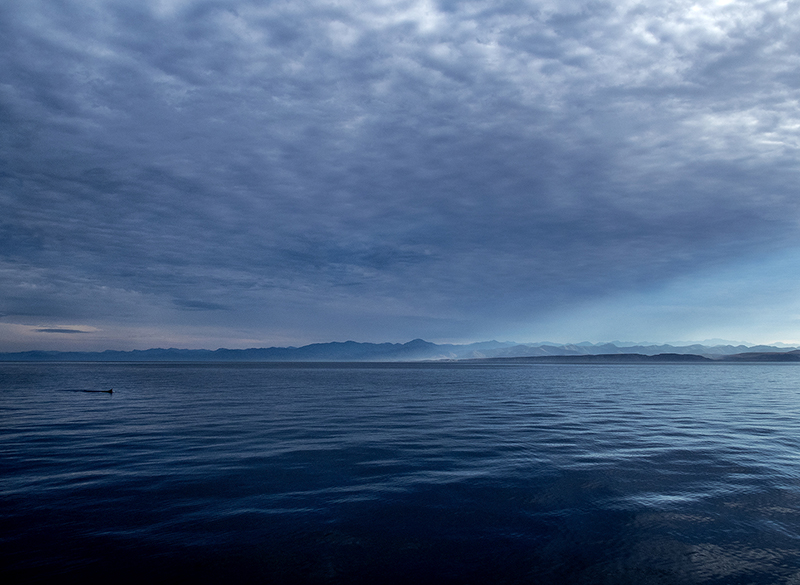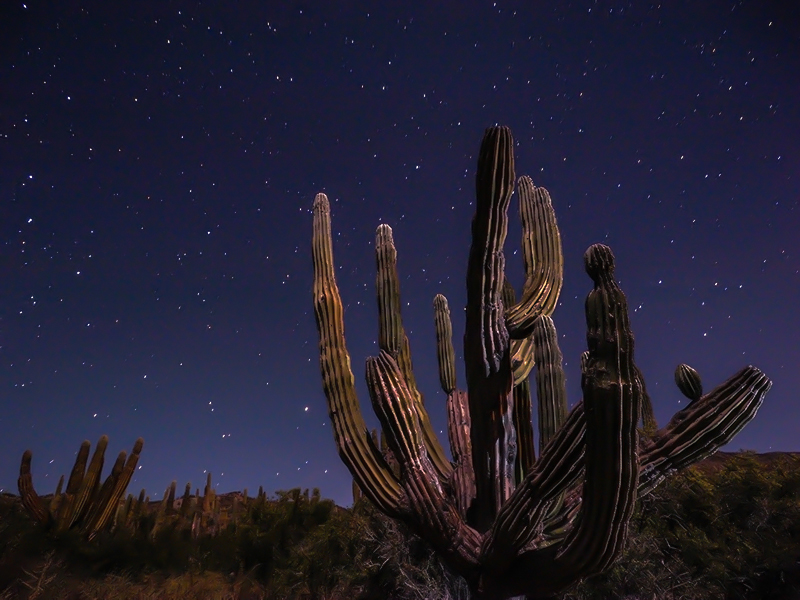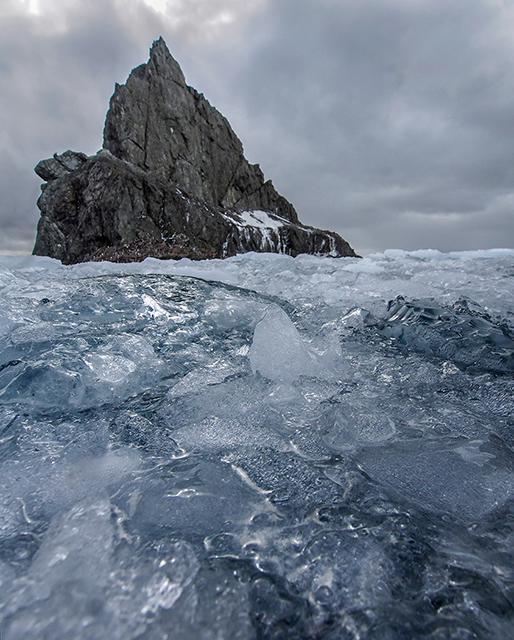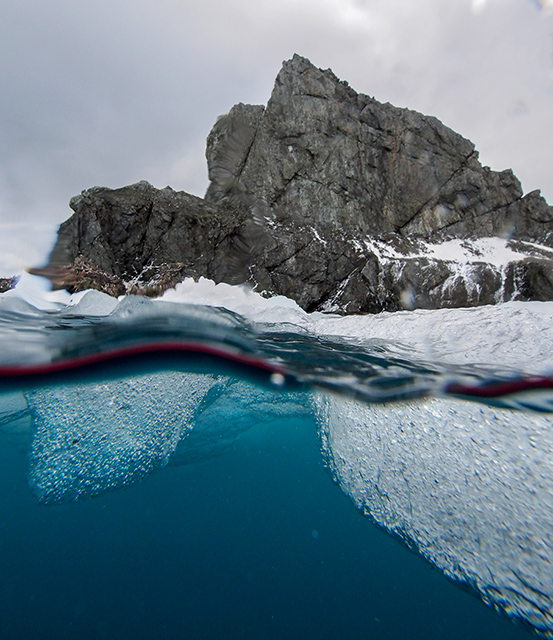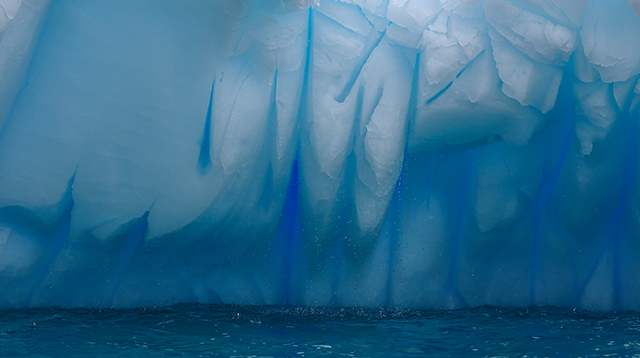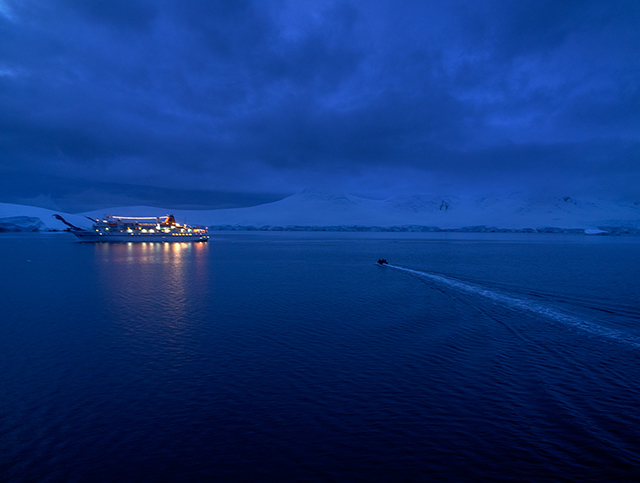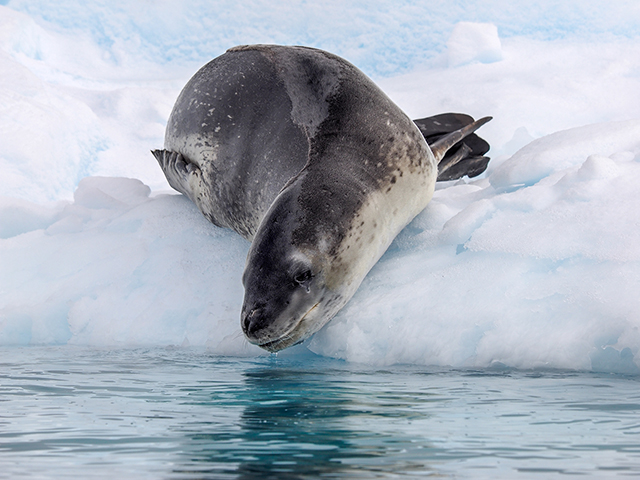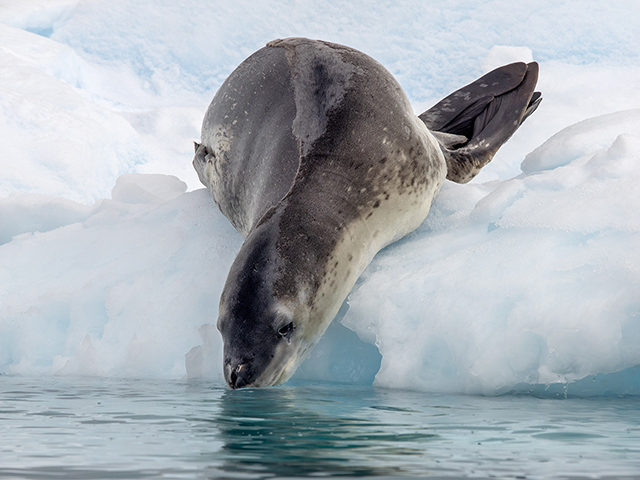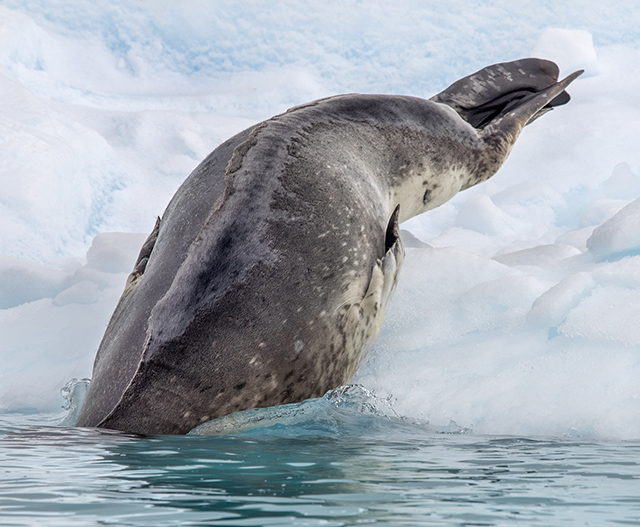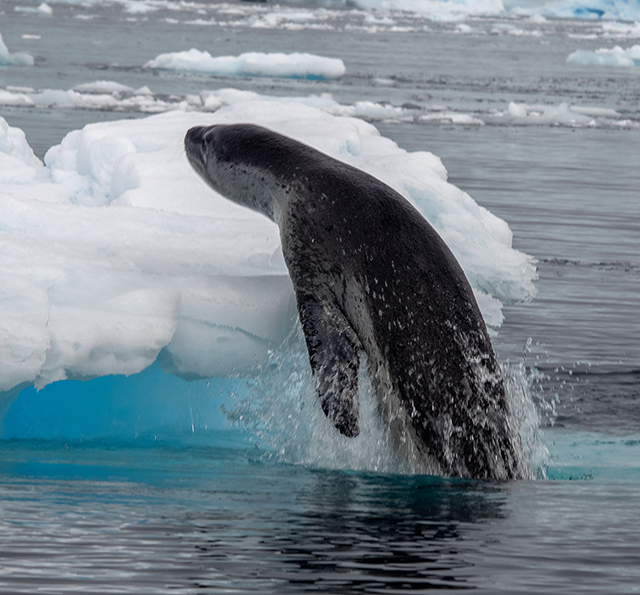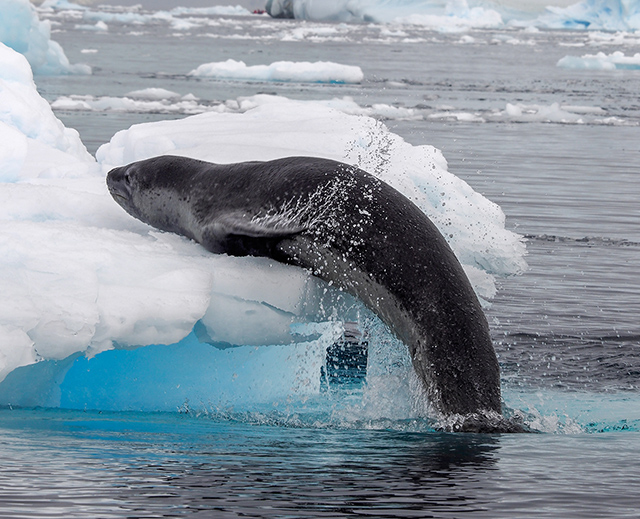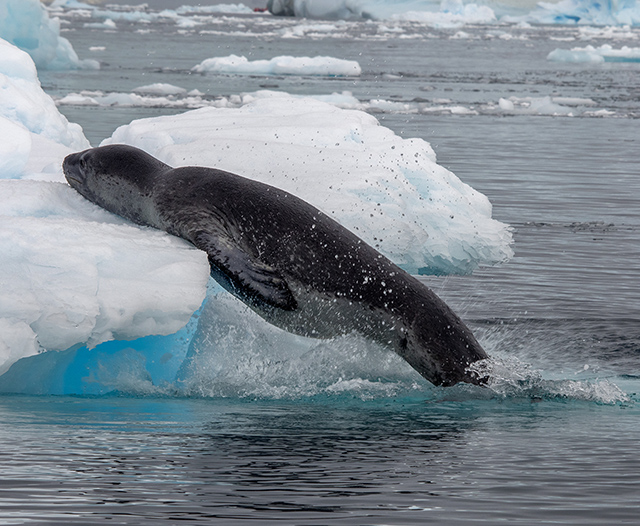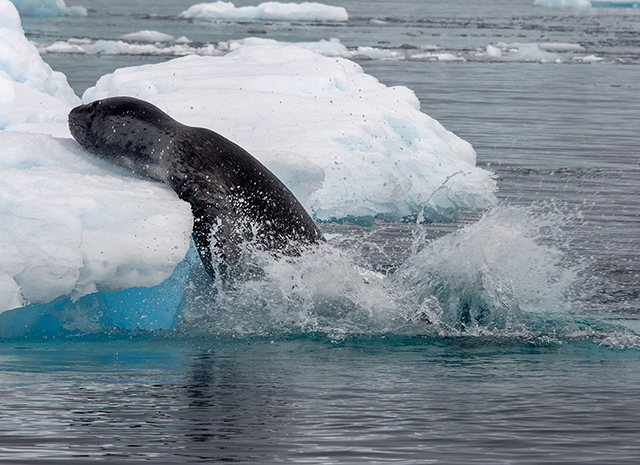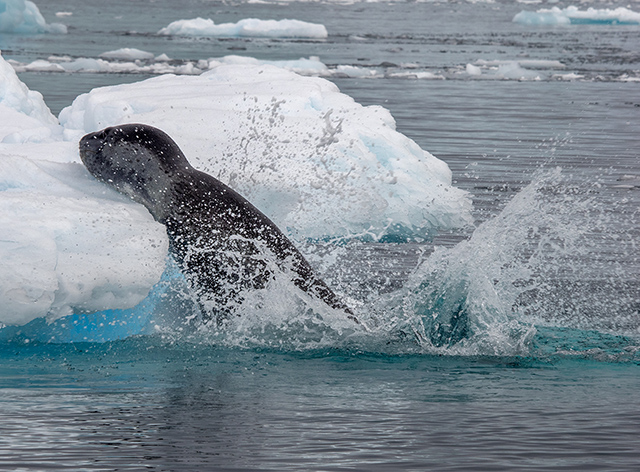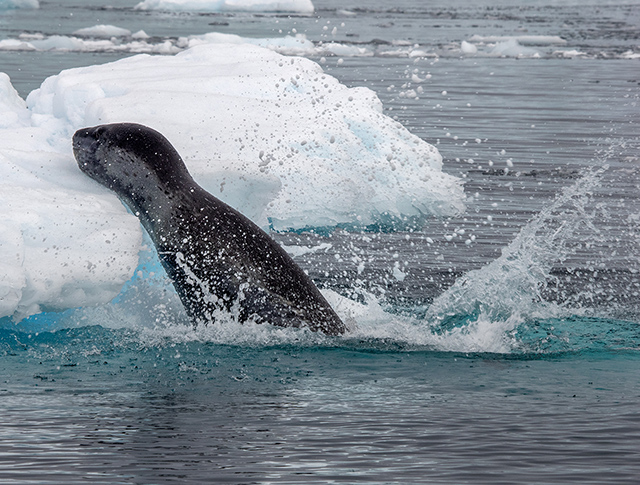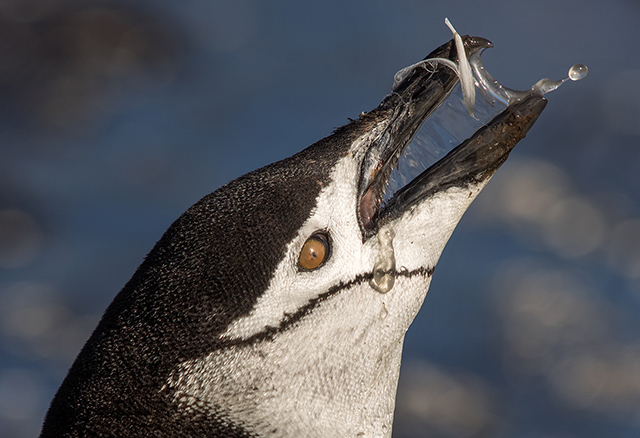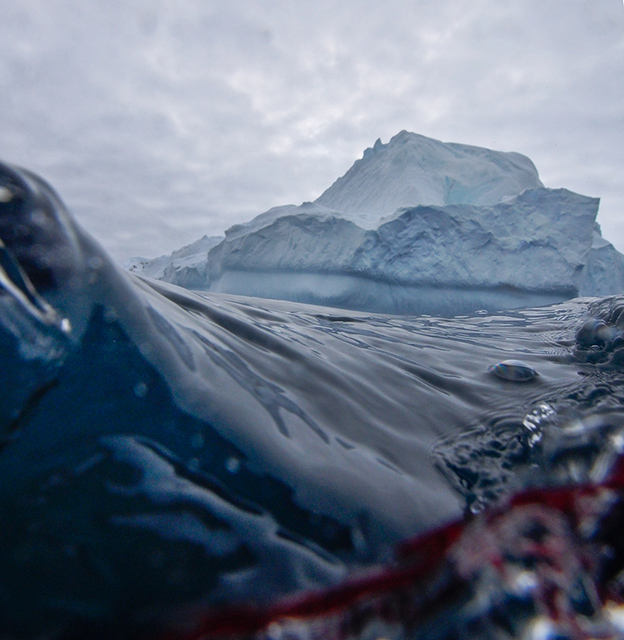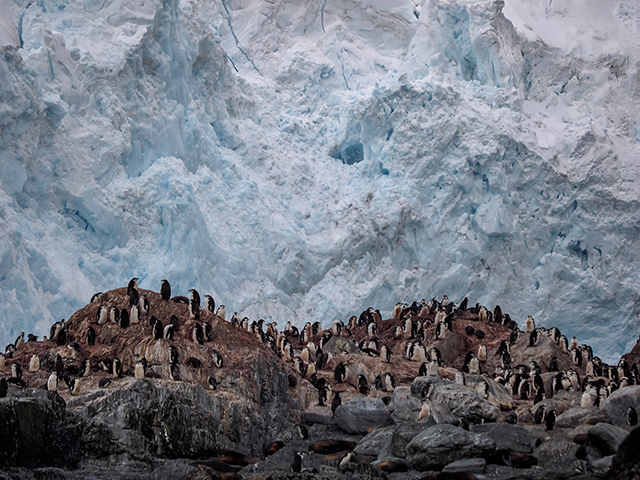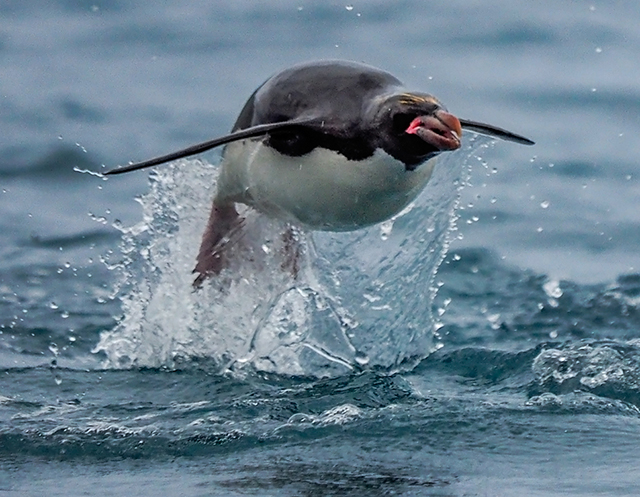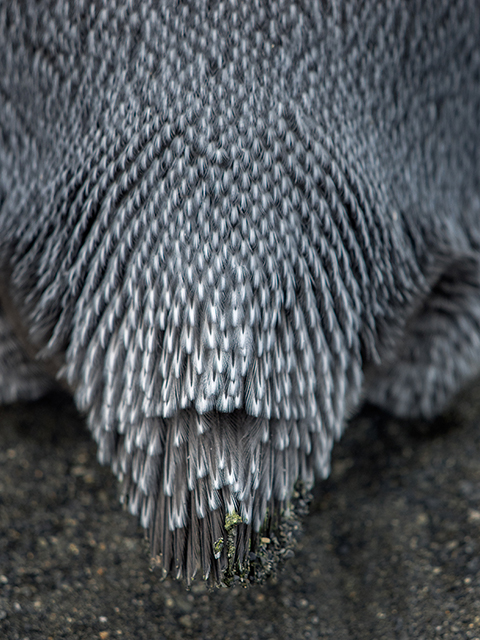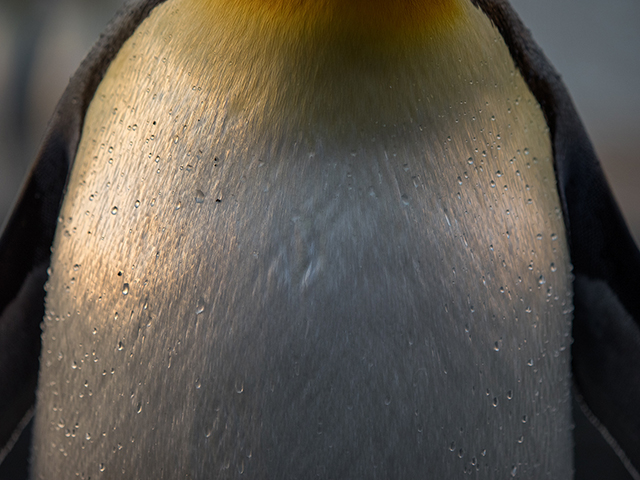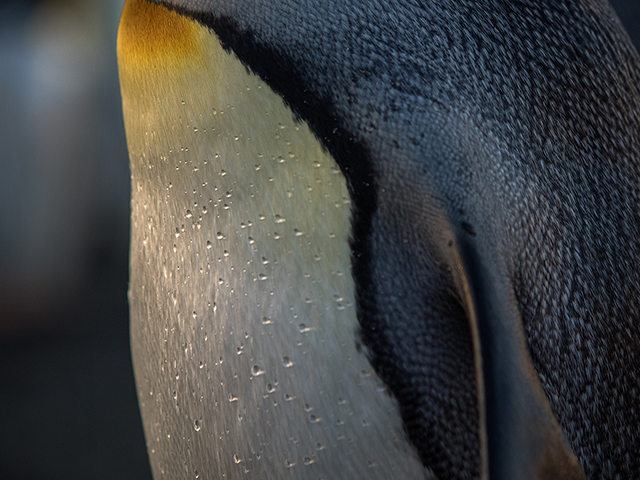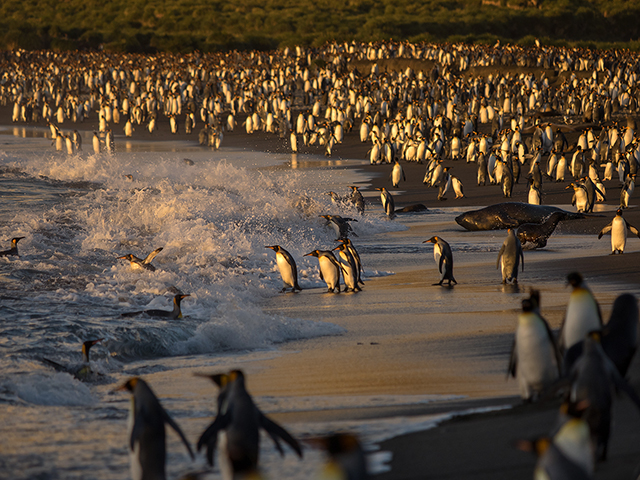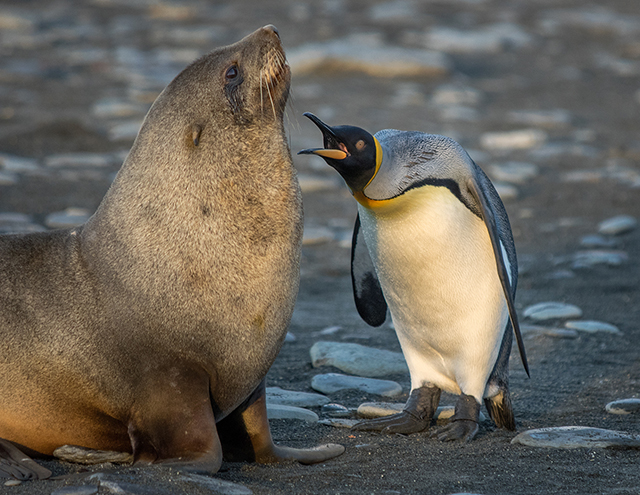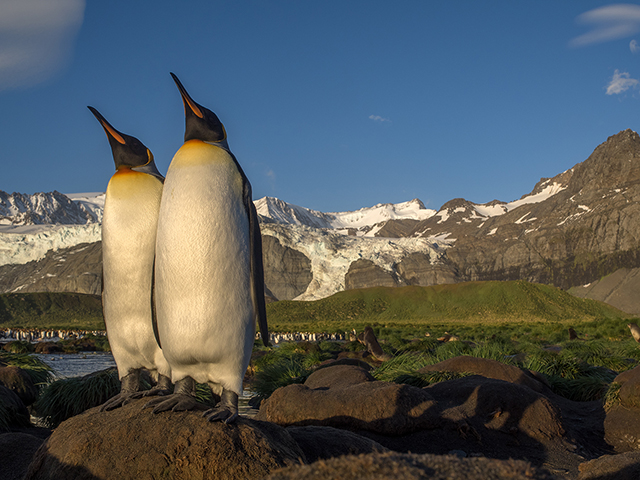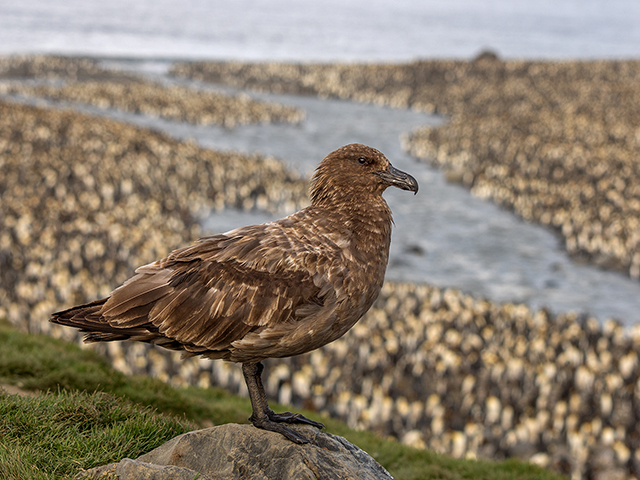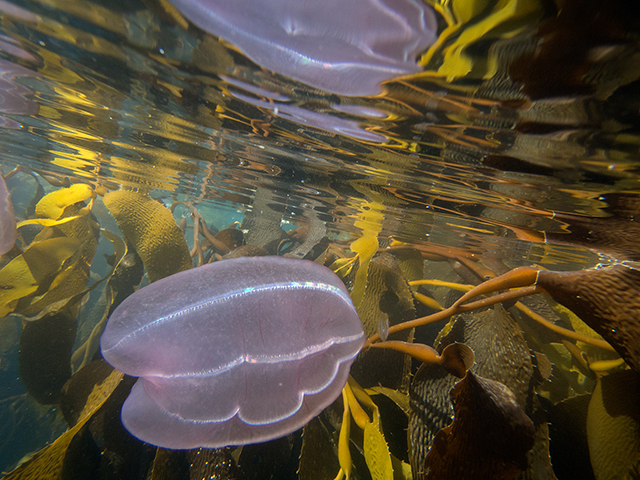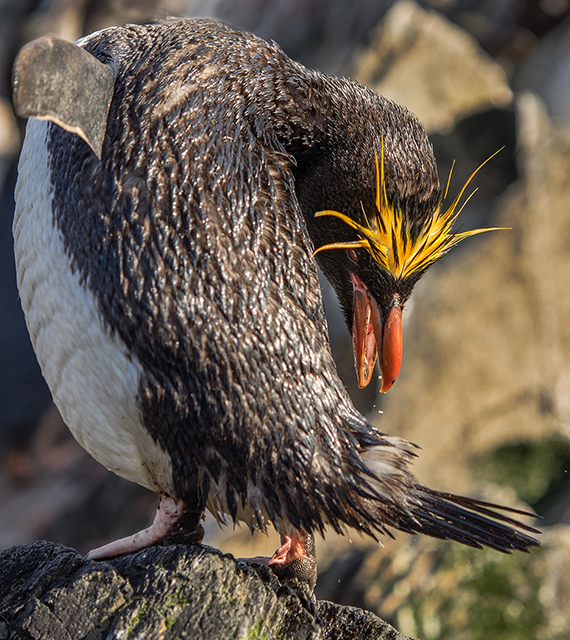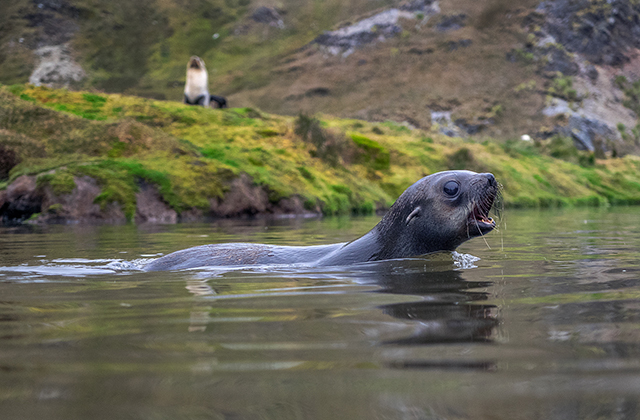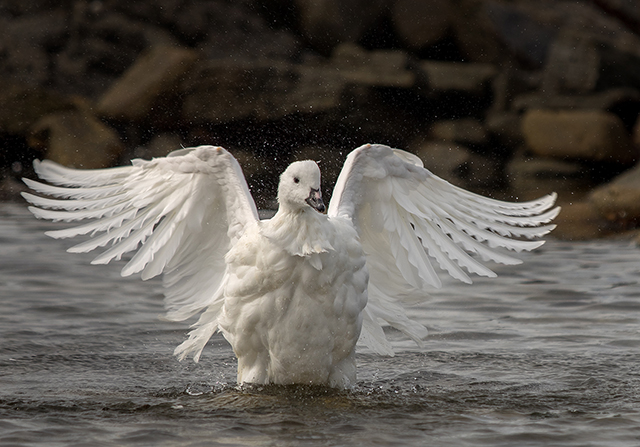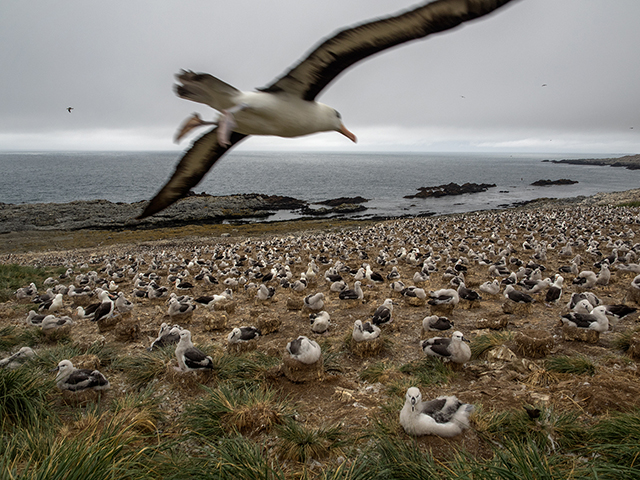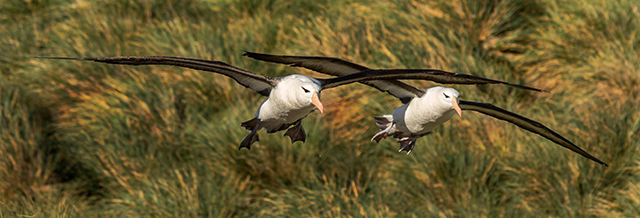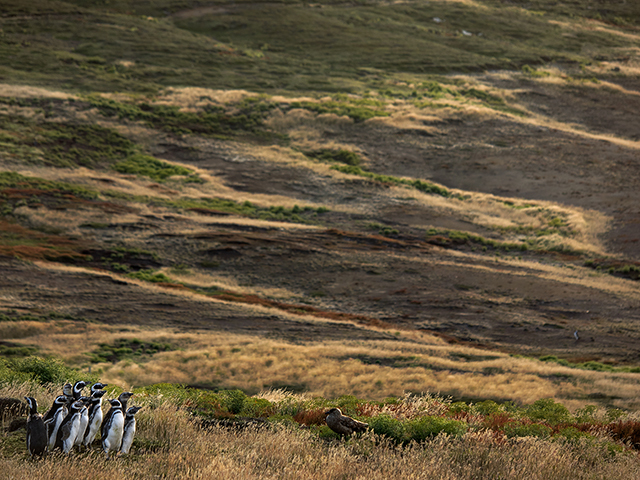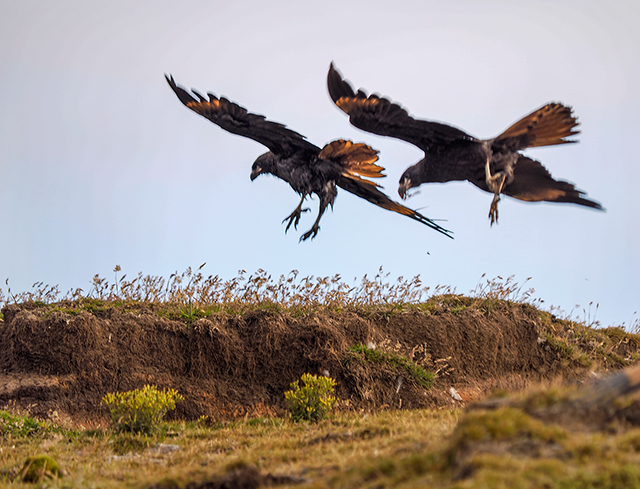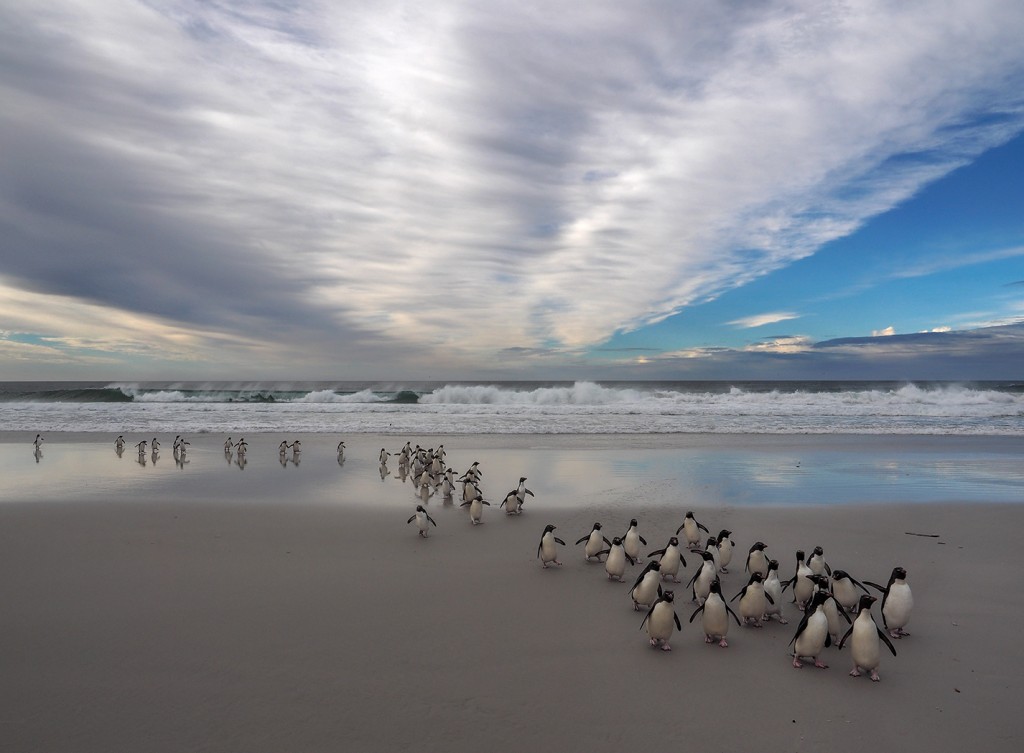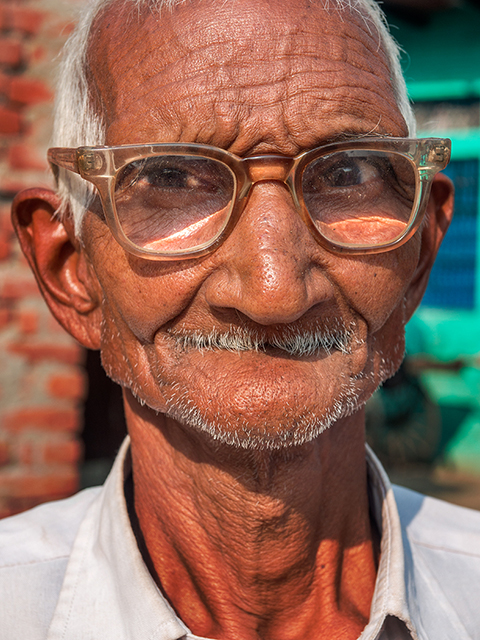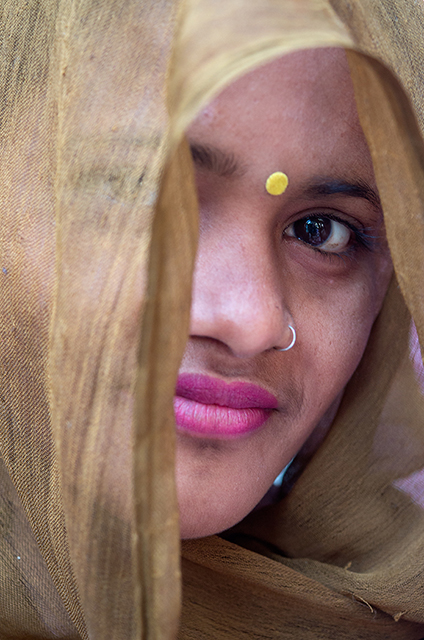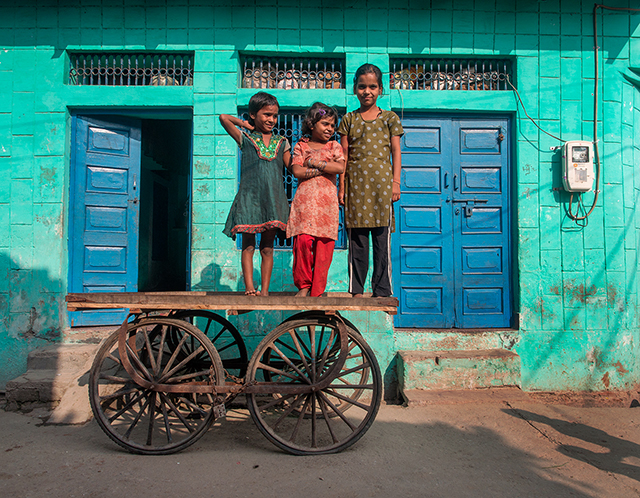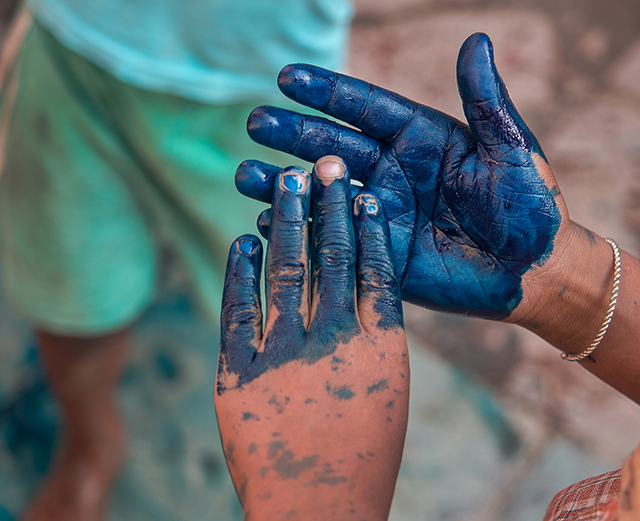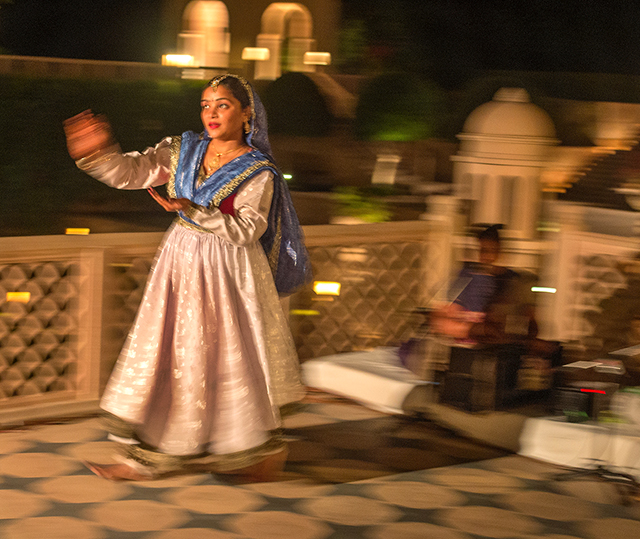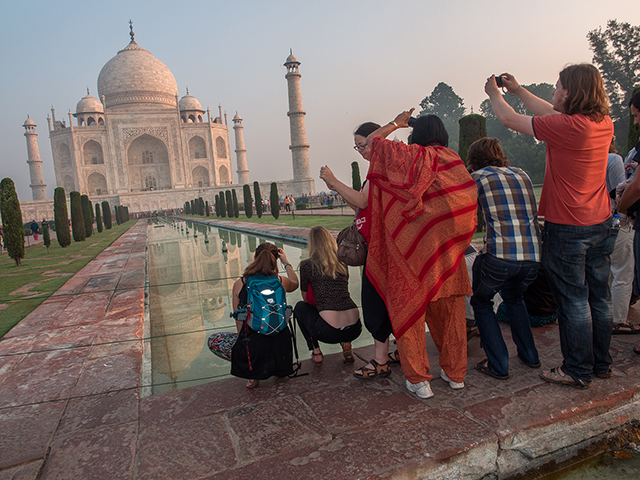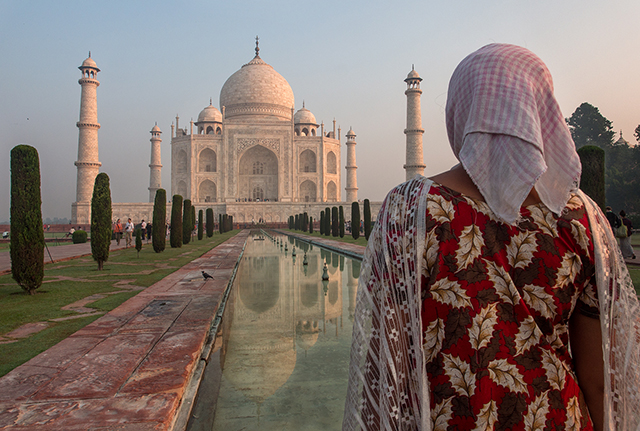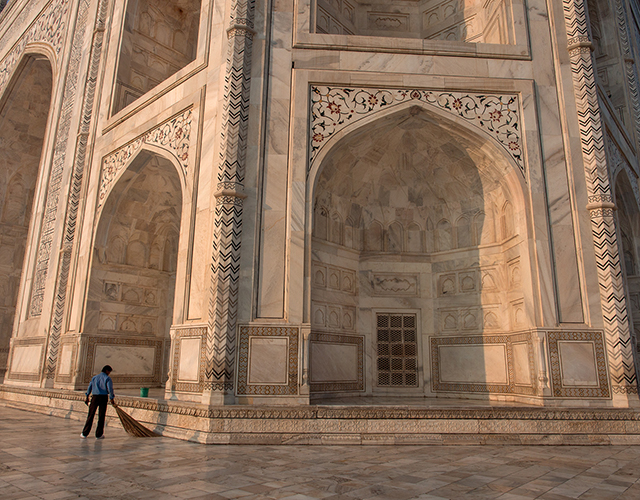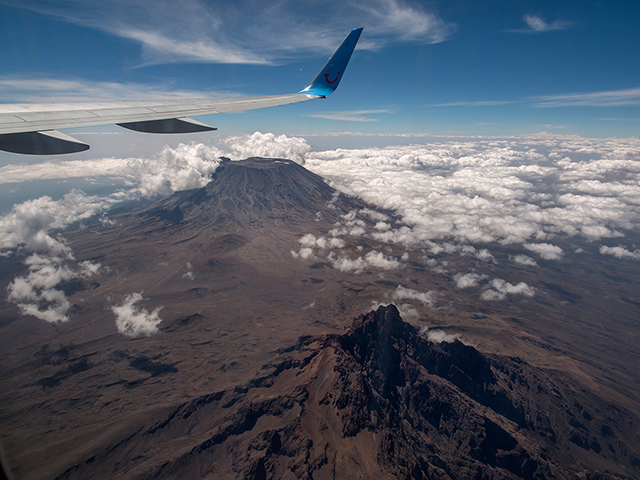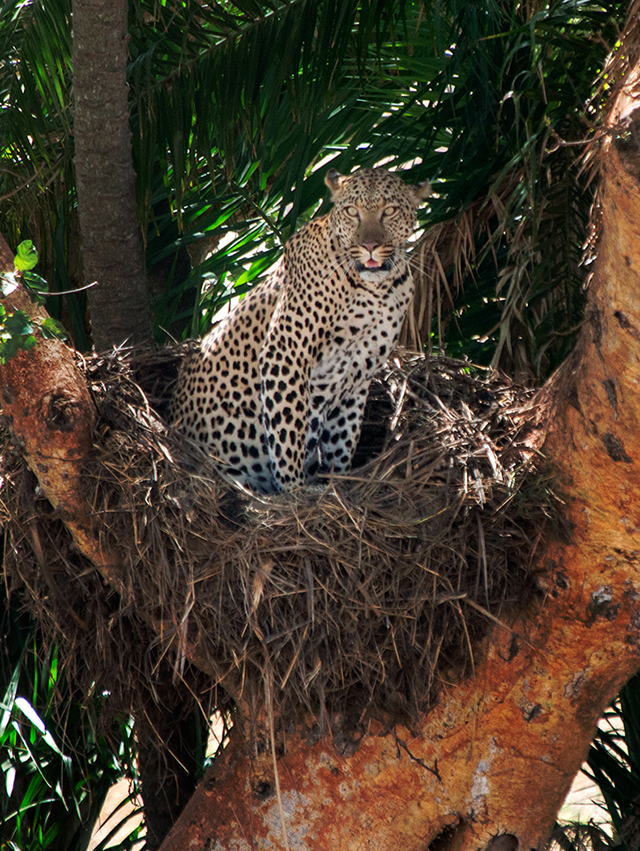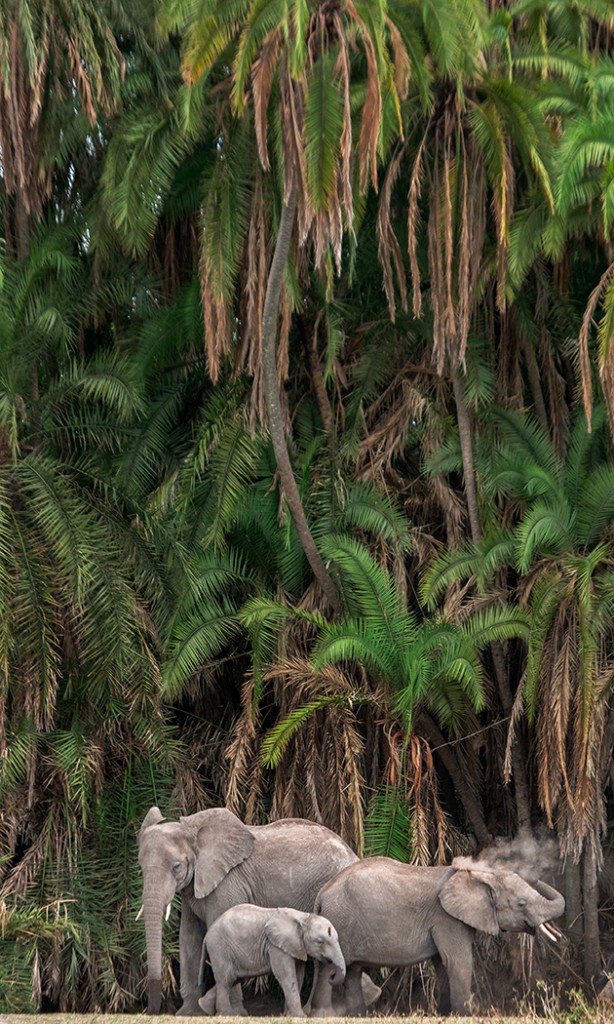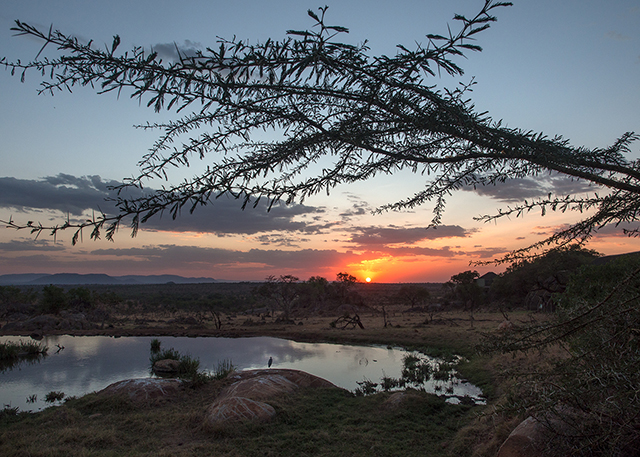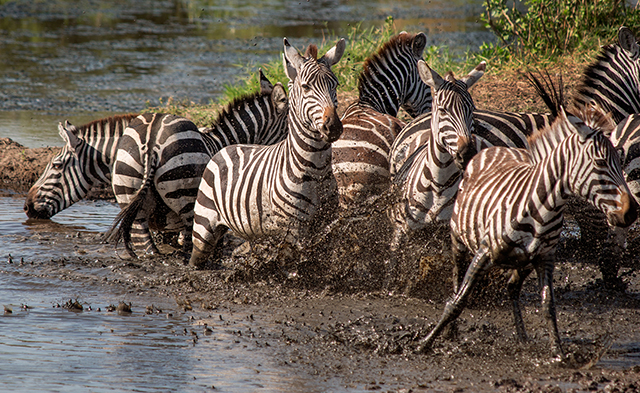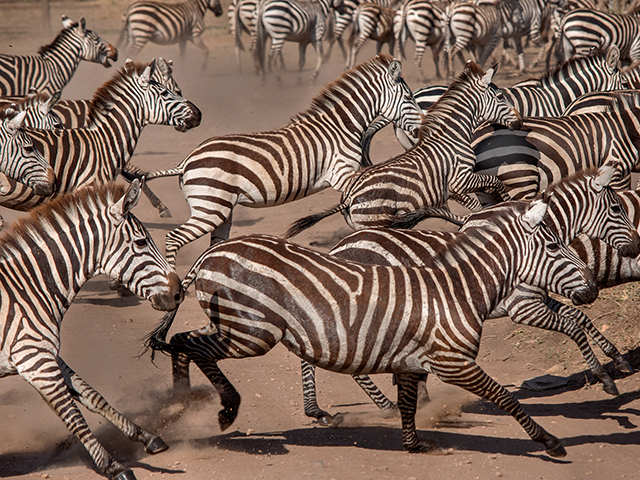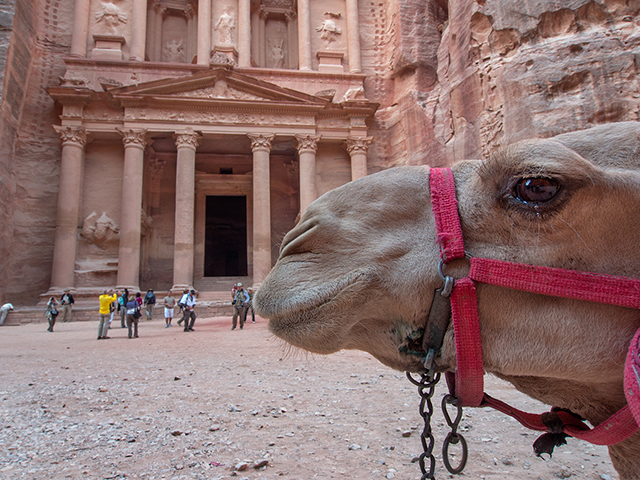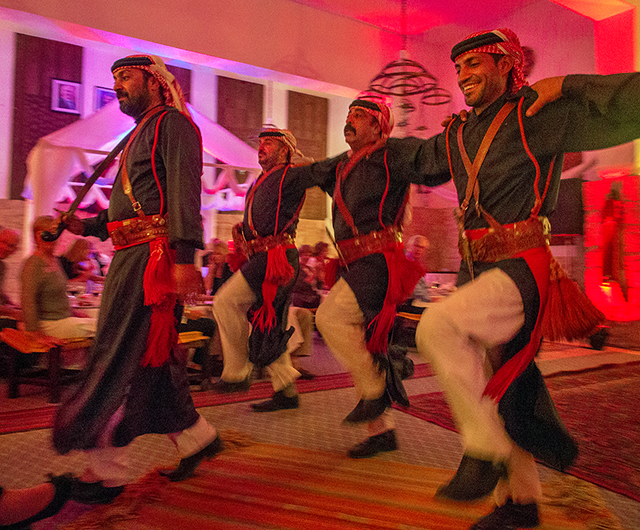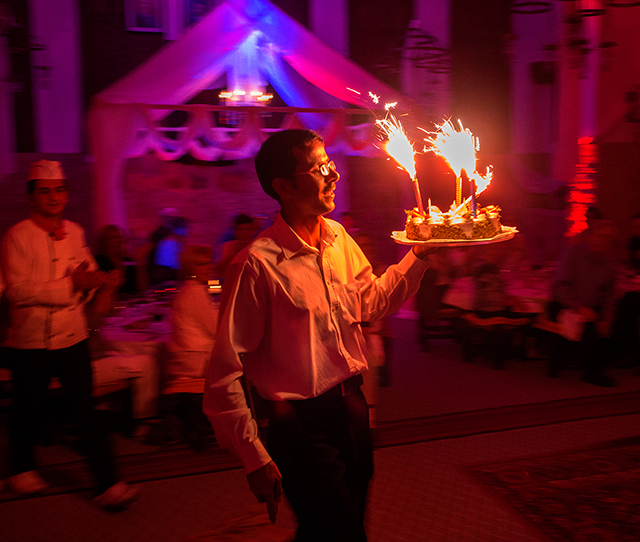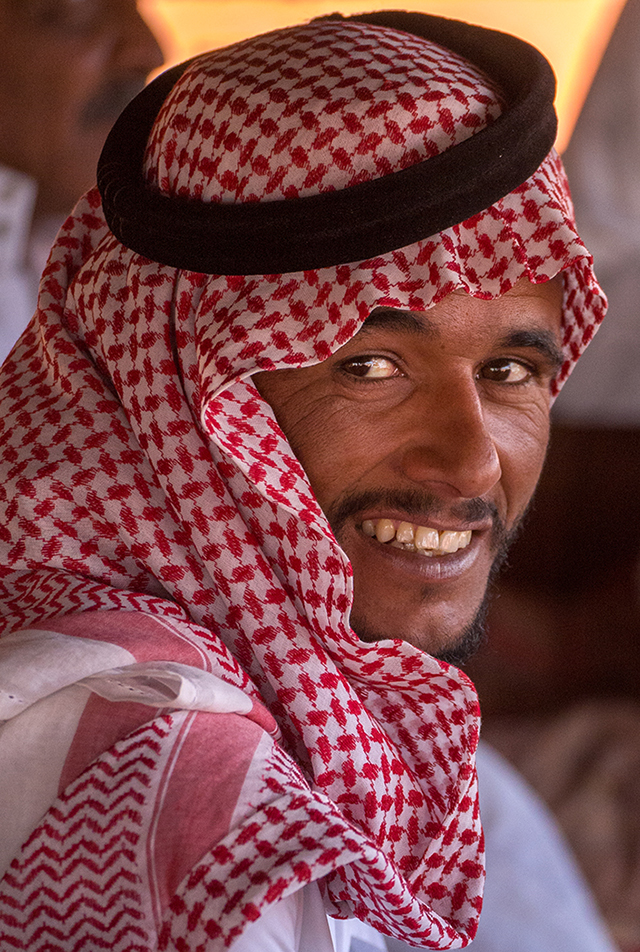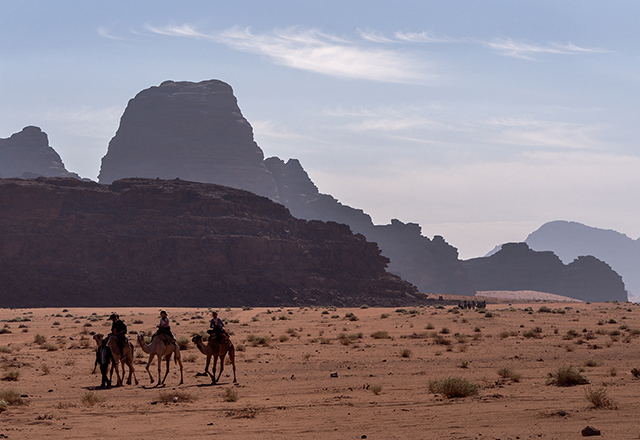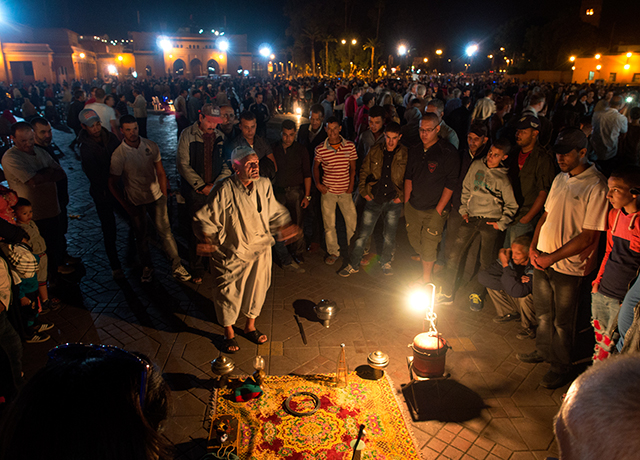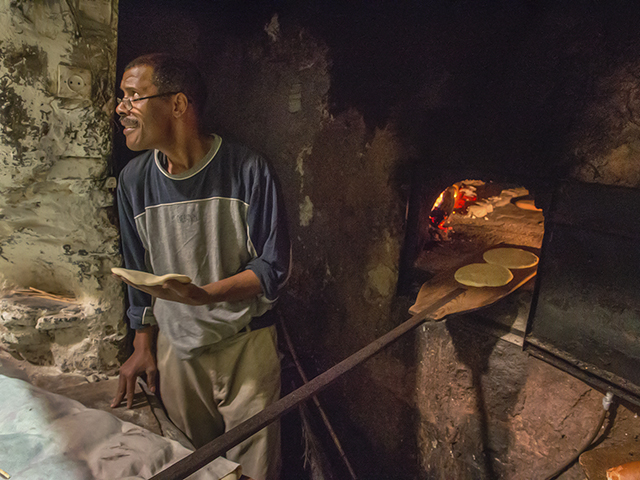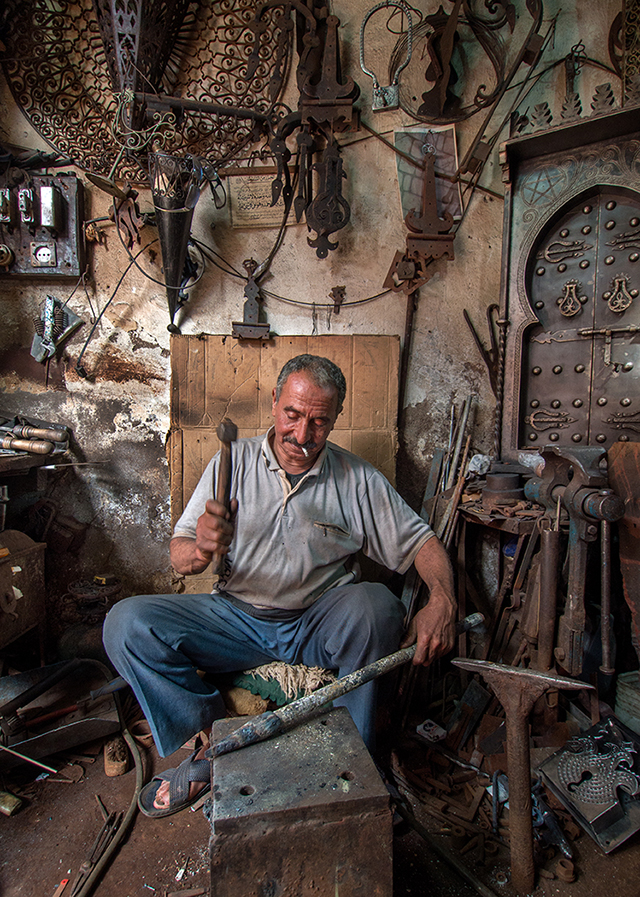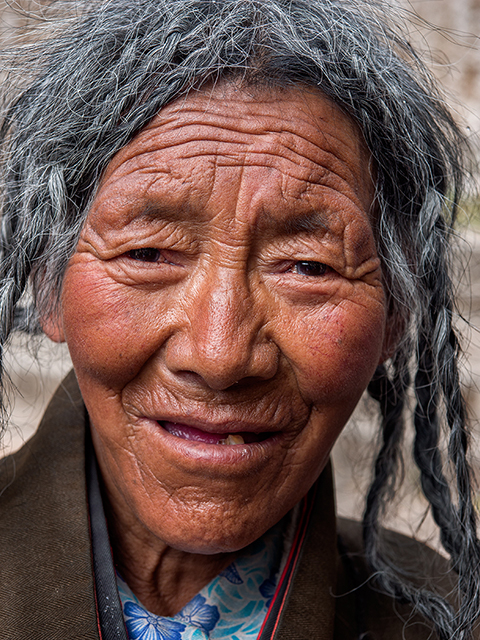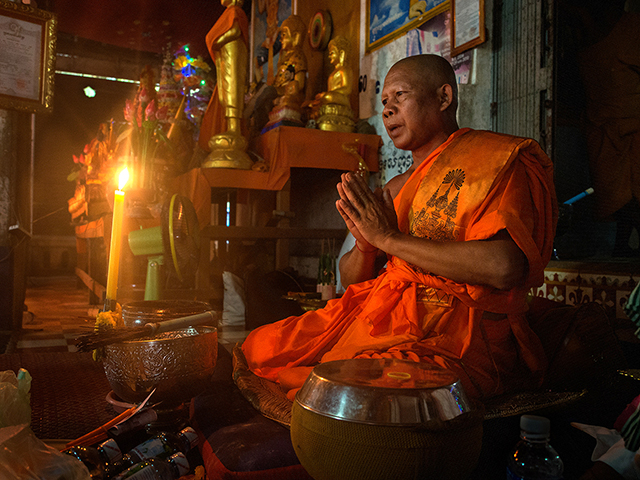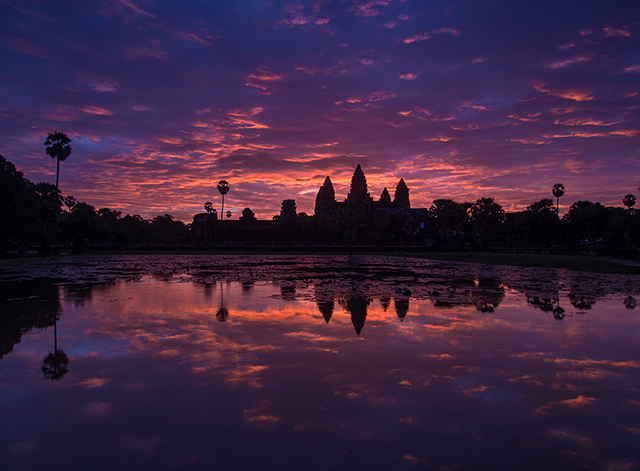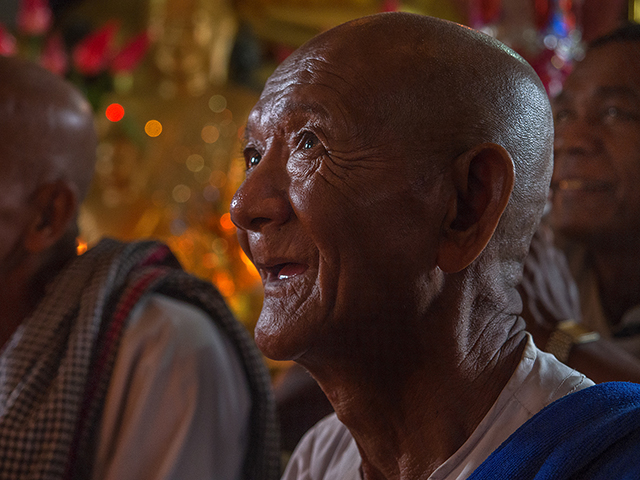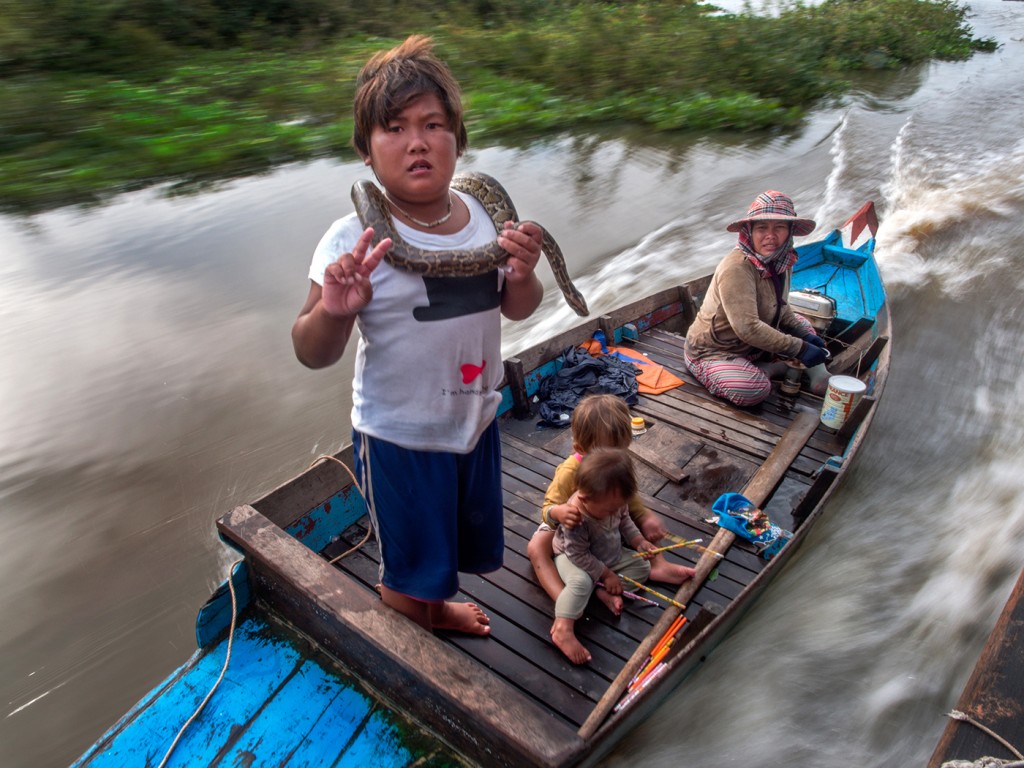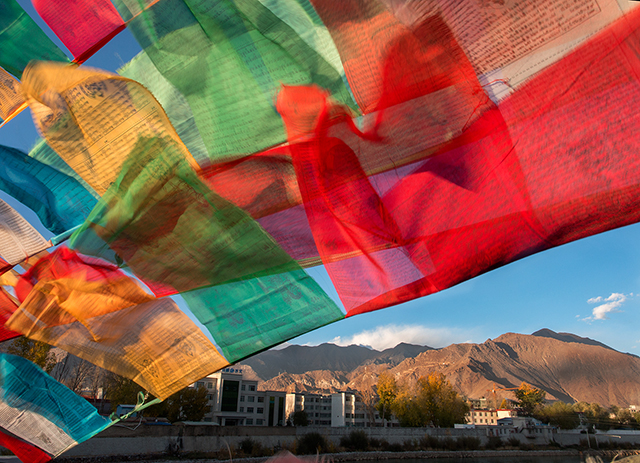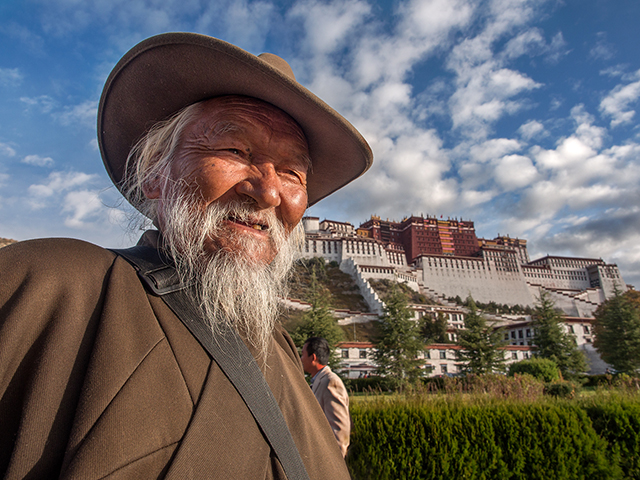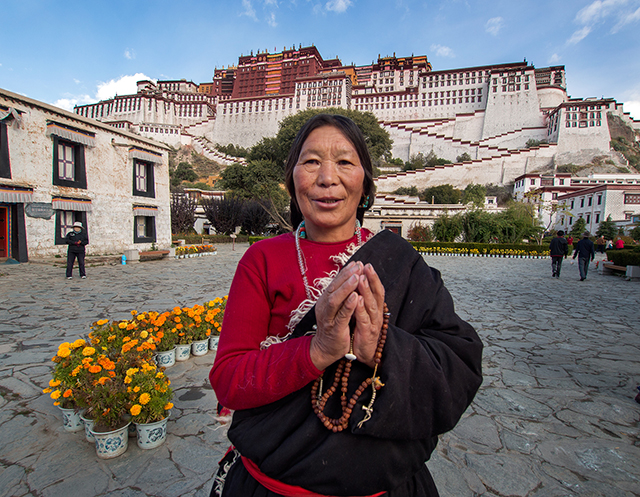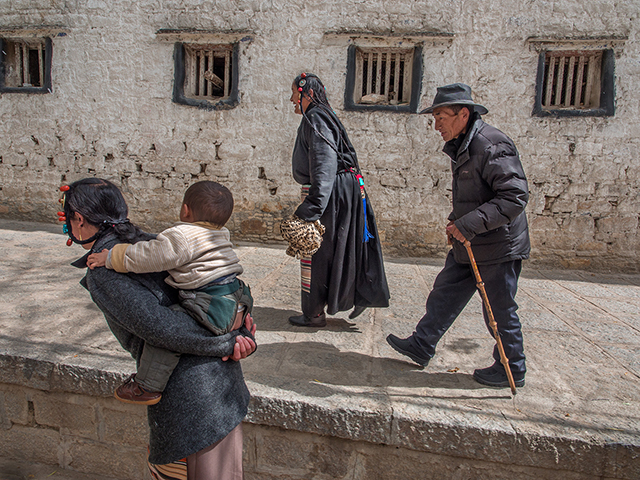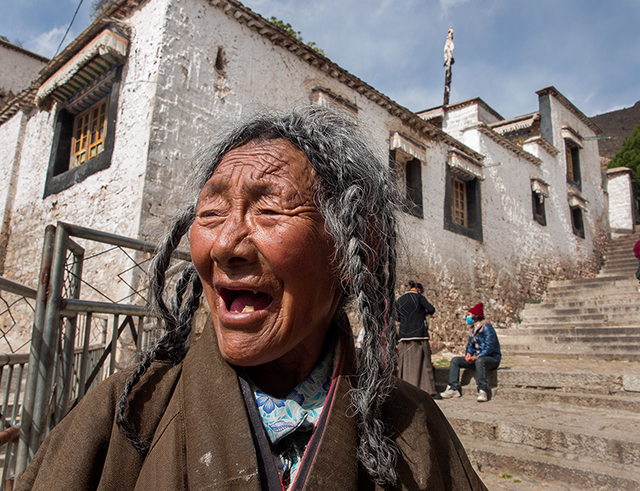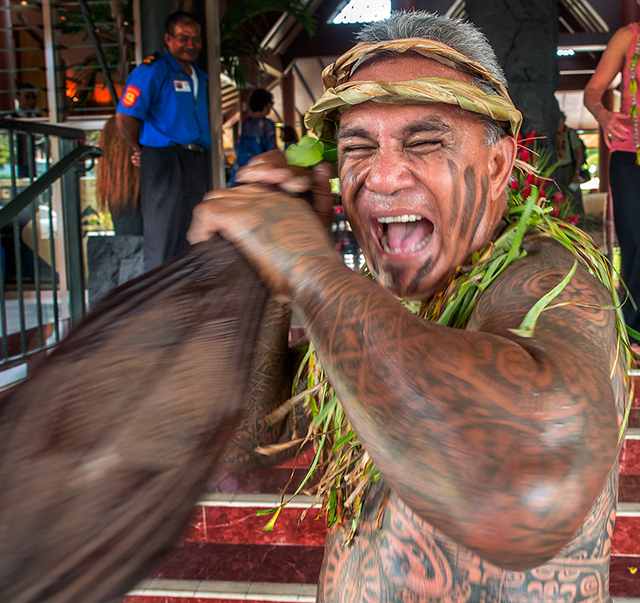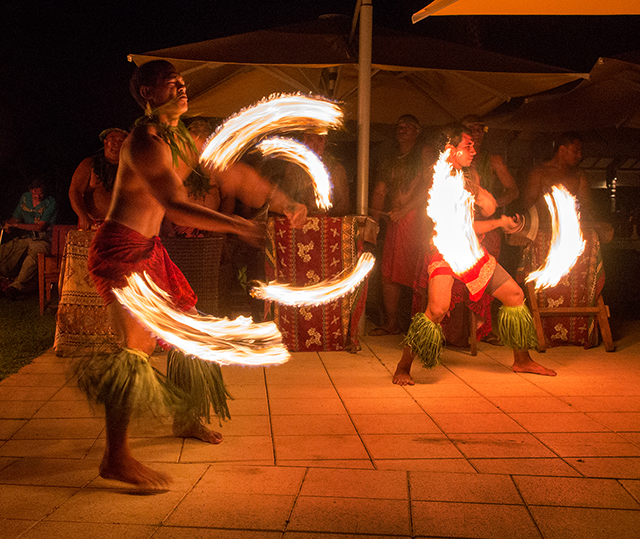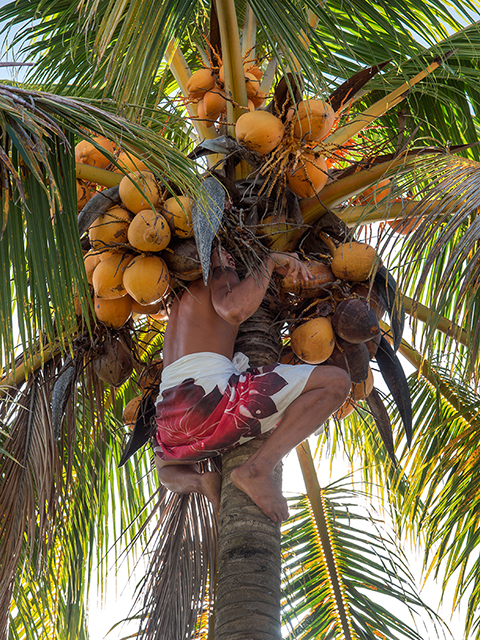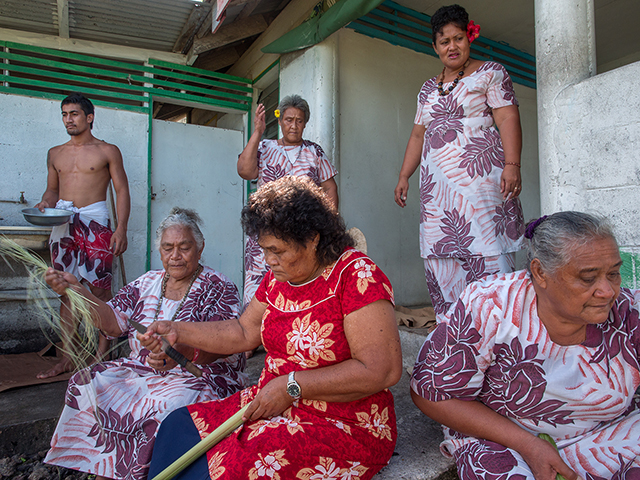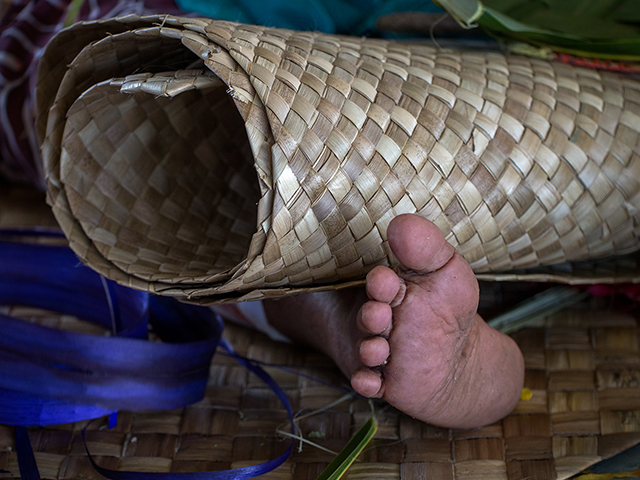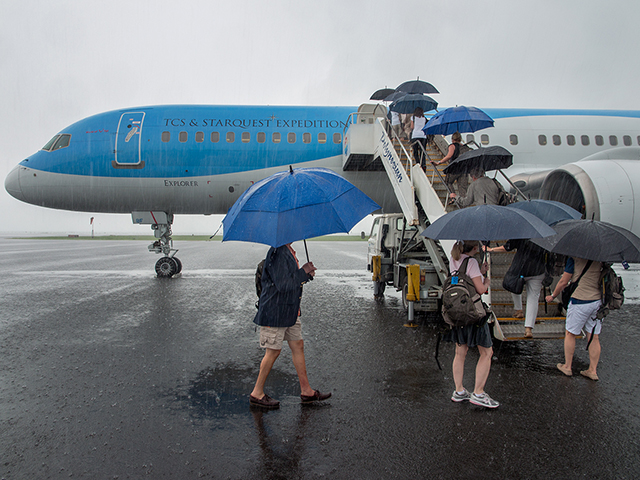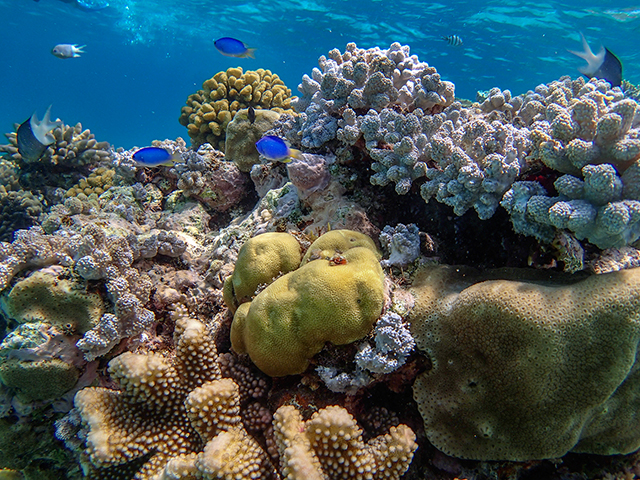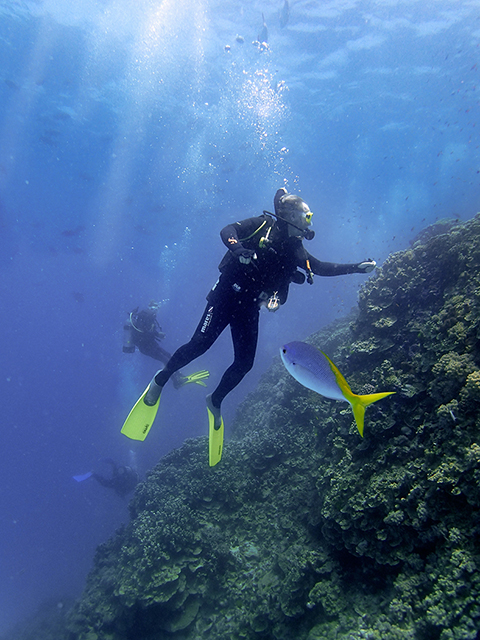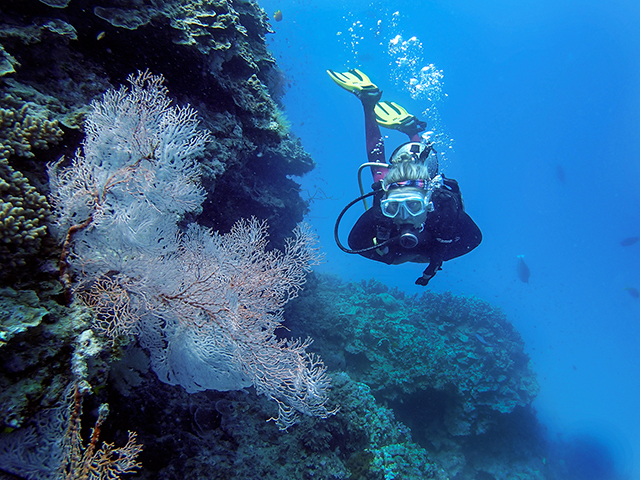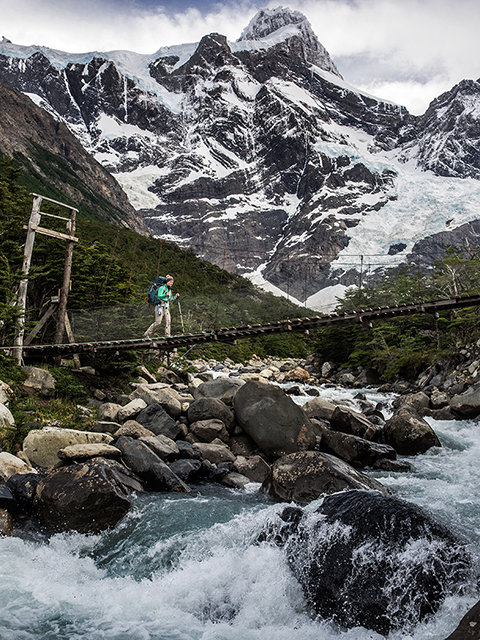
Torres del Paine, Chile, Valle del France
Olympus E-M1 12-40mm f.8
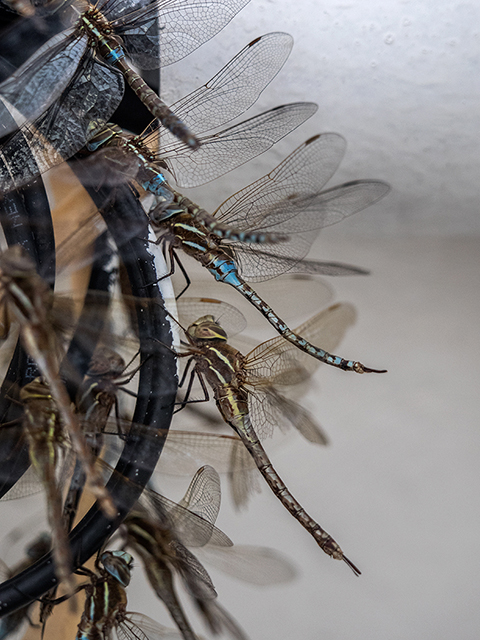
A swarm of Dragonfly we encountered on the Explorer, off of the coast of Argentina
Olympus E-M1 40-150mm f2.8
What an intense past couple of months. In late October I left on a National Geographic Expedition to Patagonia with our daughter Maggie, who was also hoping to add a long hike (80+ miles) in Torres del Paine (TdP) National Park (southern Chile) on to the end of the trip. This hike is considered one of the 5 most scenic hikes in the world (also considered not overly difficult — not true!) Maggie asked if I’d be interested in doing the hike with her and I cheerfully agreed.
We began our adventures onboard the National Geographic Explorer — a fantastic three-week trip that took us from Buenos Aires, down the eastern coast of Argentina, through the Straits of Magellan, to the western coast of lower Chile. Throughout, we were provided with incredible sightings of Magellanic penguins, killer whales, great bird life, and icebergs. We even visited Torres del Paine on what we later discovered was a stellar day. (All the NG group assumed that the weather there was always sunny, calm and capped by deep blue skies; not remotely true!) At the end of the Geographic trip we began our 2-week addendum…….
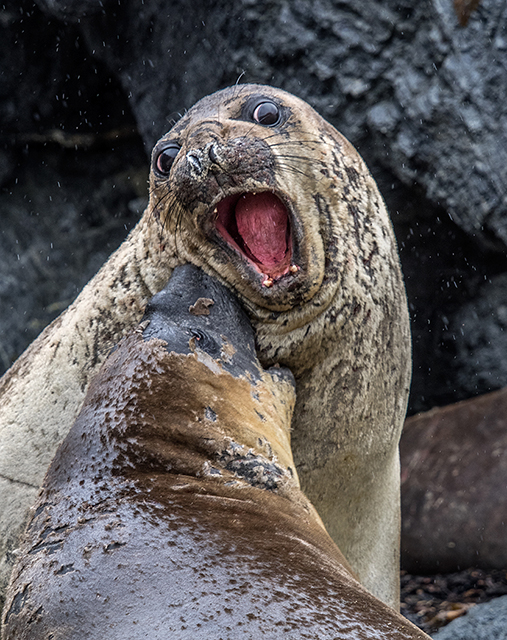
Elephant Seal pups playing, Karukinka Park, Argentina
Olympus E-M1 40-150mm f2.8

An owl hiding in rock crevasse
Olympus E-M1 40-150mm f2.8
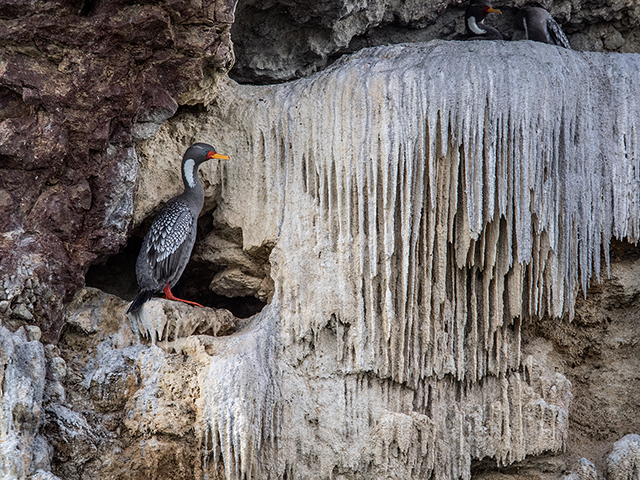
Cormorant near Puerto Deseado, Argentina
Oly E-M1 40-150mm f2.8 w/1.4
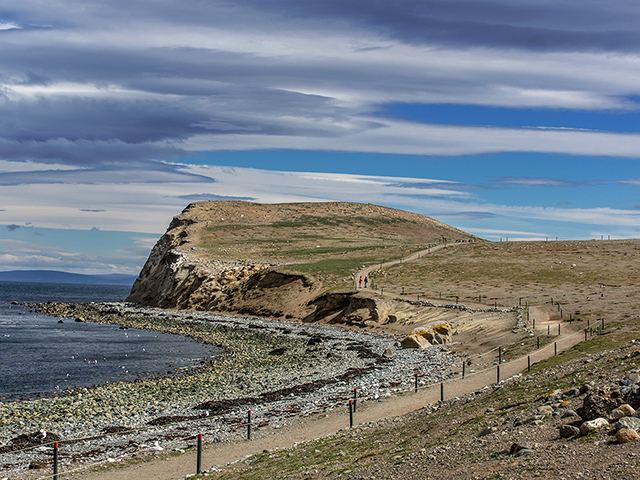
Isla Magdalena, Argentina
Oly E-M1 12-40mm f2.8
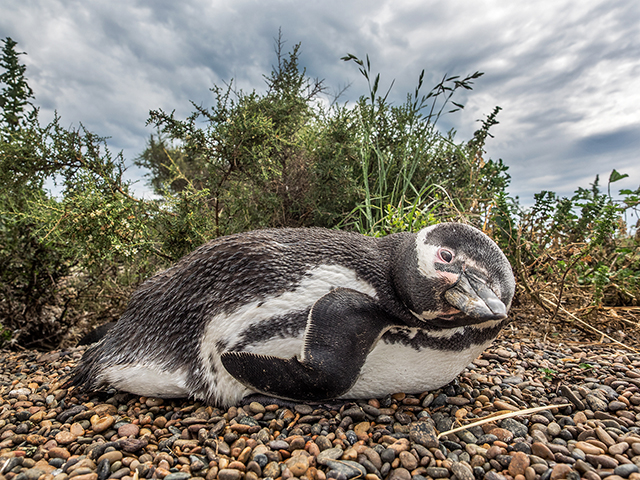
Magellanic penguin checking me out
Oly E-M1 12-40mm f2.8
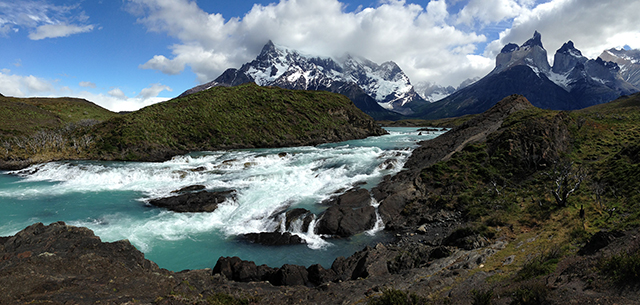
Torres del Paine
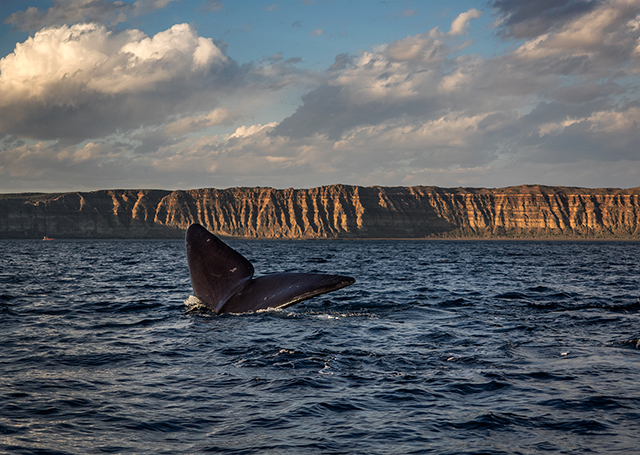
Along Valdes Peninsula in Argentina
Olympus E-M1 40-150mm f2.8
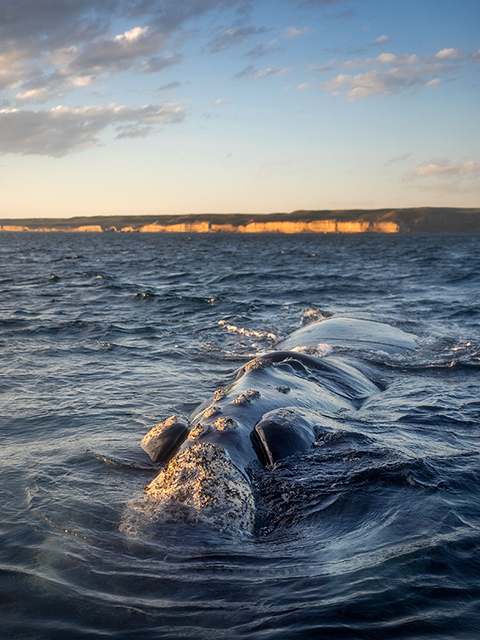
Off of the Valdes Peninsula, Argentina
Olympus E-M1 12-40mm f2.8
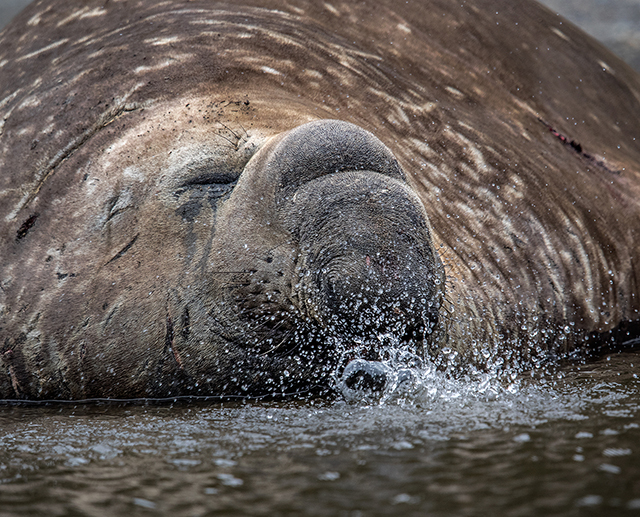
- Snoring Elephant seal, Karukinka Park
Oly E-M1 40-150mm f2.8 w/ MC-14 extender
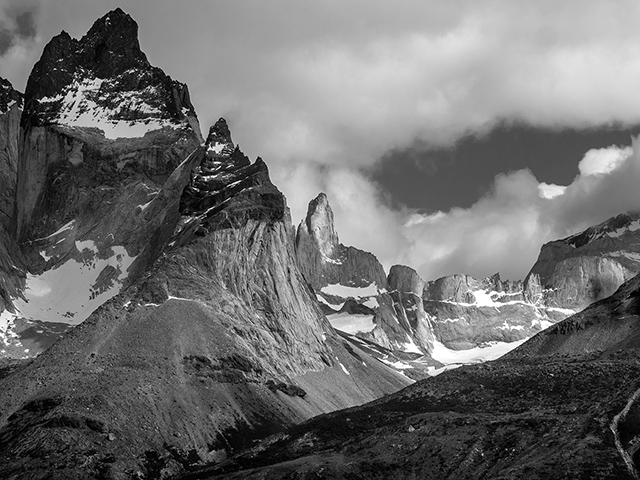
Torres del Paine
Oly E-M1 40-150mm f2.8
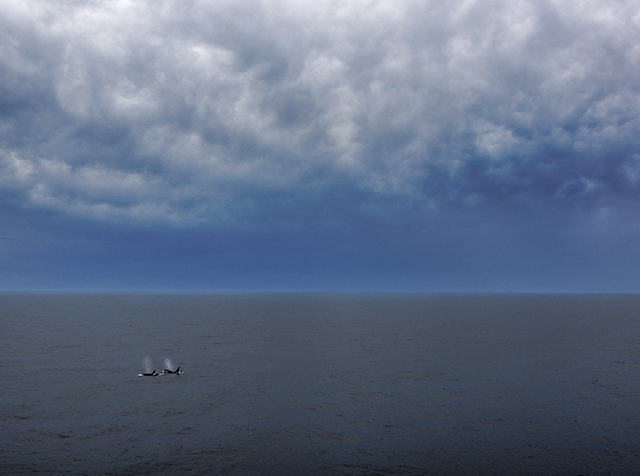
Killer whales off of Argentinian coast
Olympus E-M1 12-40mm f2.8
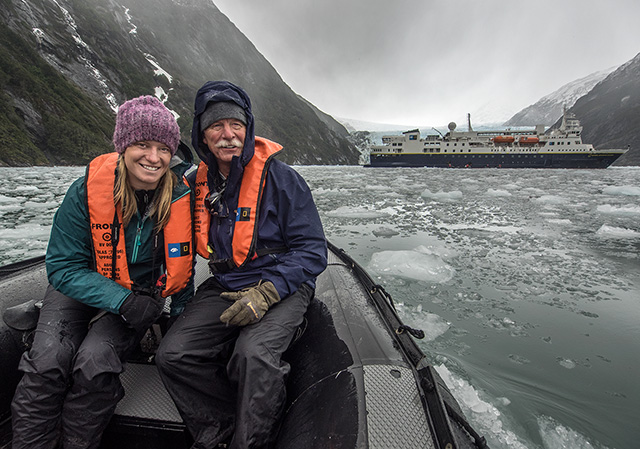
In Girabaldi Fjord, Maggie and Jay
Olympus E-M1 12-40mm f2.8
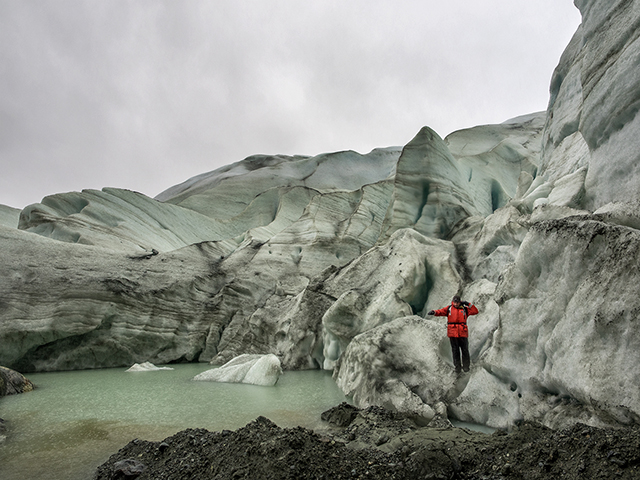
Bernal Glacier, Patagonia
Oly E-M1 12-40mm f2.8
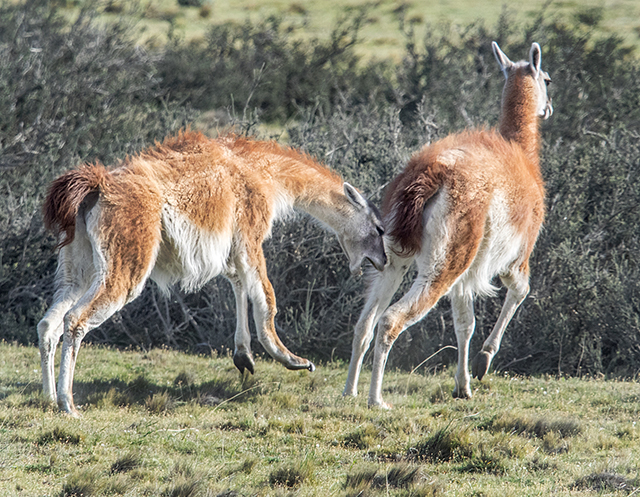
Male Guanacos fighting, Torres del Paine
Oly E-M1 40-150mm f2.8
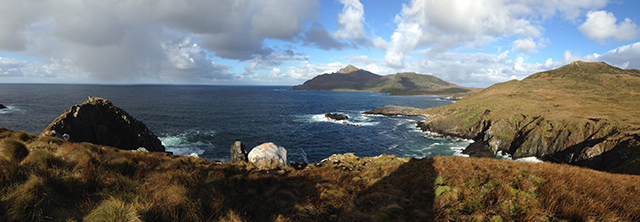
Cape Horn
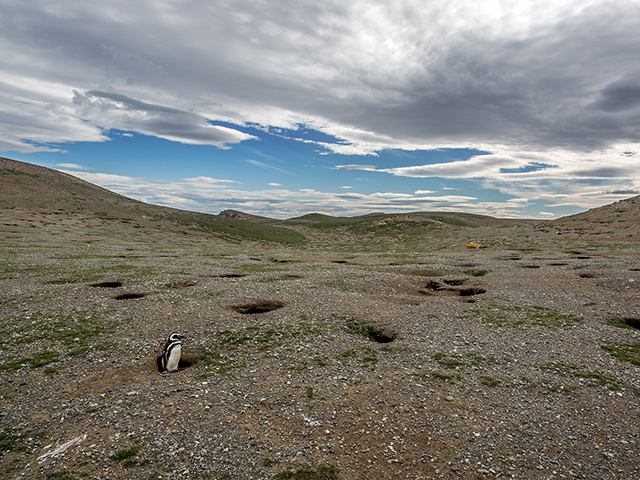
Magellanic penguin guarding nest, Isla Magdalena
Oly E-M1 12-40mm f2.8
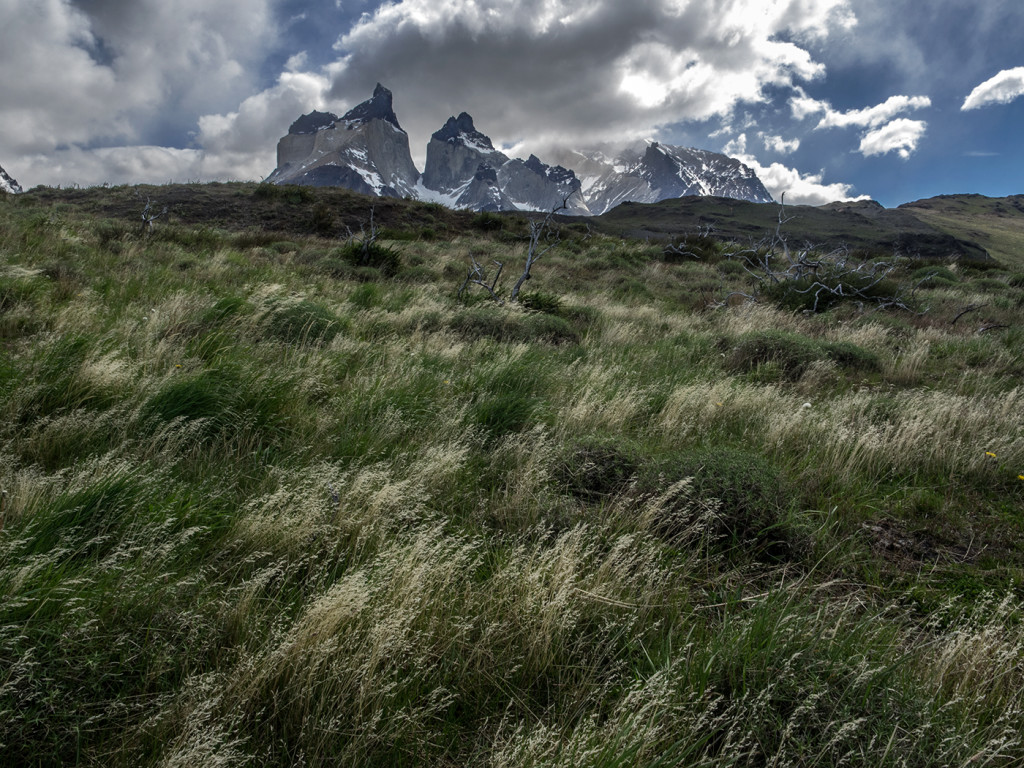
Torres del Paine
Oly E-M1 12-40mm f2.8
ON TO THE TREK
We had a very logical plan, flying back with the NG group from Ushuaia, Argentina to Buenos Aires — instead of taking a 12-14 hour bus trip from Ushuaia to Punto Arenas in Chile. Since we would be returning to US from Buenos Aires, we would be able to store some of our luggage at airport when we began second half of trip. We had to pack for two entirely different trips on this sojourn: the NG part aboard the Explorer, which called for nice clothes in addition to our hiking gear, and then for the TdP hike, which meant backpacks, tent, sleeping bags, pads, food, etc. After storing our first set of luggage at airport, we left on overnight flight back across the continent to Punto Arenas and then took the 3 hour bus ride up to Puerto Natales, the “gateway town” to the Torres del Paine National Park. Thankfully, we had a couple of nights there to decompress, prepare, and just enjoy that very cool town. Then unable to put it off any longer (was hard to leave an incredible pizza place!), we boarded another 2-hour bus north to the park and set off on our hike.
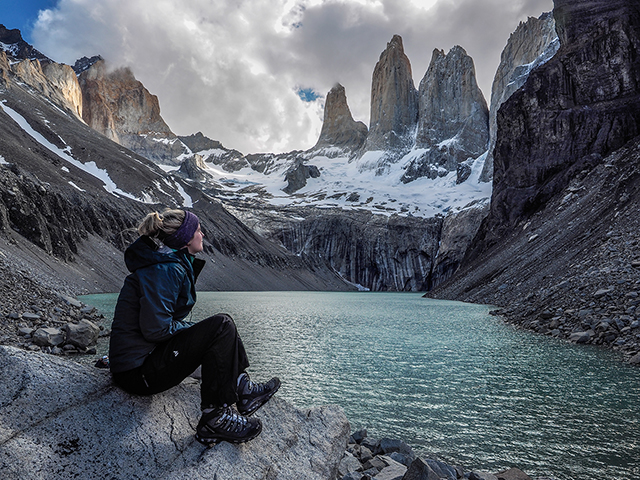
Maggie at Mirador Torres
Oly E-M1 9-18mm
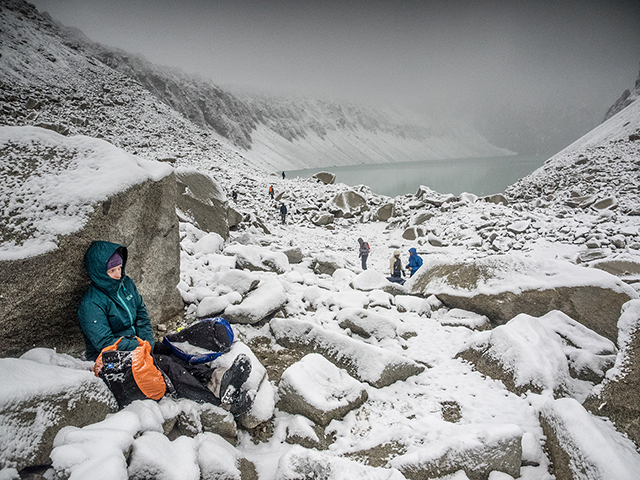
1st morning at Mirador Torres
Oly E-M1 12-40mm f 2.8
Our/Maggie’s plan was to do the famous “O” trail in the park. About 80 miles, this circumnavigates the incredible range of mountains which make up the heart of the park. Mistake one on my part: I convinced Maggie that we could take the 2pm bus from Puerto Natales to TdP instead of the logical earlier bus that would have given us plenty of time to do the 6 mile hike along the Rio Ascensio (means uphill river or something similar) to first campsite at Campiento Torres. (In addition to rivers flowing uphill, all the trails are uphill — a fact has been confirmed by me. Even when looping back on a trail, somehow the hiking gods had altered the geology of the place so it’s all uphill!) The earlier bus would have been so much better as it would have provided the window of time for me to hyperventilate my way up (did I mention it was uphill?) the trail that triathletes, donkeys, my daughter and other non-humans can accomplish in what the map optimistically and viciously suggested was a few hours. Also, a suggestion learned from experience on my part: do drink water, dehydration is not pleasant, but it does give one the stage to go slightly insane, fall a lot, and whimper about dying.
We finally made it, I took charge, and carefully chose the best campsite — which happened to be the same one I collapsed onto when seeing the sign designating the place. Maggie cooked dinner, which I really didn’t touch…and we both realized that I had allowed myself to become dehydrated. A couple of gallons of water later and I was feeling fine.
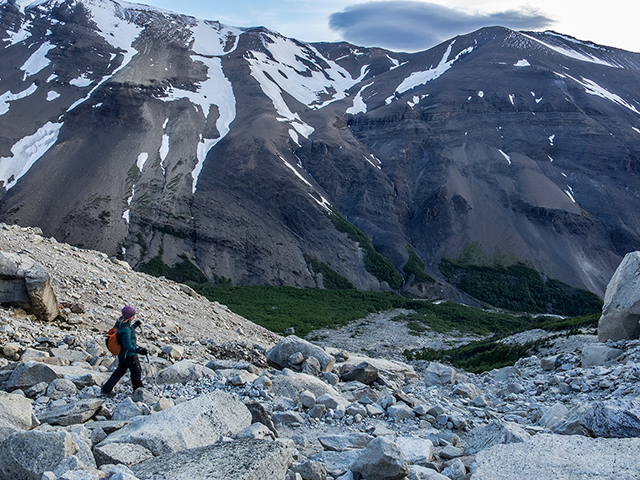
Descending from Mirador Torres
Oly E-M1 12-40mm f2.8
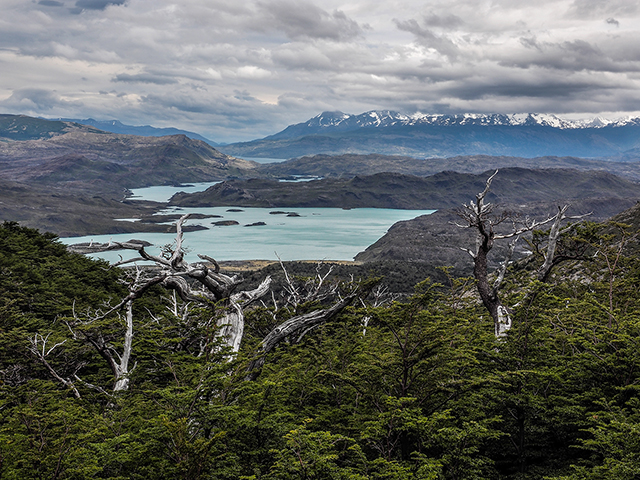
Descending from Mirador Torres
Olympus E-M1 40-150mm f2.8
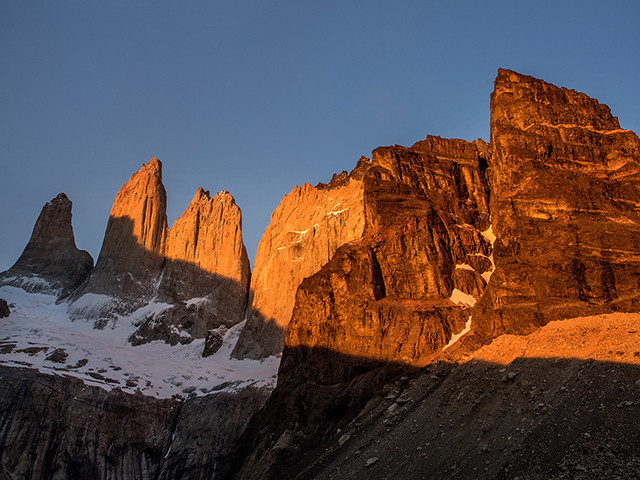
2nd morning, Mirador Torres
Oly E-M1 9-18mm
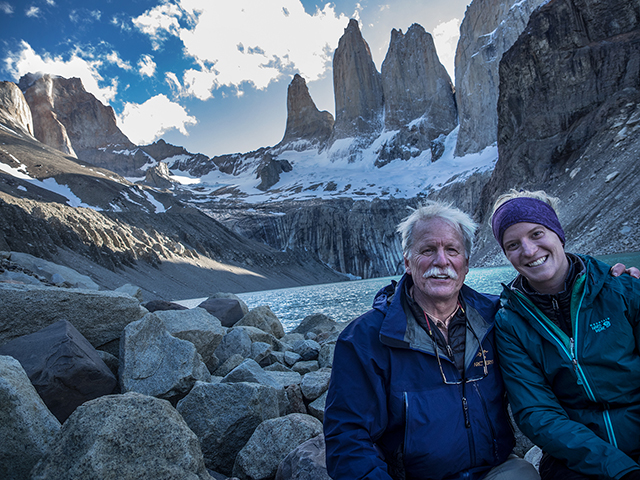
Jay and Maggie
Oly E-M1 12-40mm f2.8
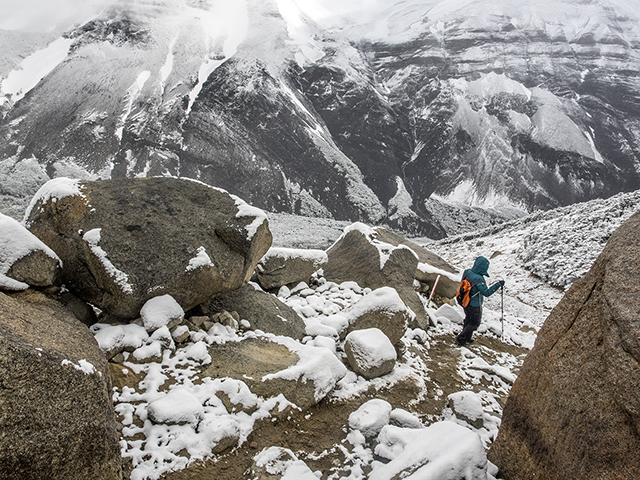
Trail in TdP
Oly E-M1 12-40mm f2.8
A slow and persistent rain started soon after our arrival, which was great to listen to, tapping on the tent as we dimmedd our flashlights and went to sleep. Waking a few hours later, I noticed that the cadence of raindrops on nylon had changed to that muffled lack of sound that indicates that rain has turned to snow. Our plan on this leg of the hike was to arise a couple of hours pre-dawn and make the hour-long hike to the famous Mirador Torres — the stunning overview of the “Towers” which are the three vertical granitic extrusions that stick up a couple of thousand feet into the Patagonia sky. We did head out at our desired time, but the snow was pretty steady and sticking to the talus slope as we started ascending towards the overview. Becasue I wanted to study the flora and fauna on the (vertical) path to the Mirador, I suggested that Maggie may want to hike ahead and break trail. This hike/climb took about an hour (Maggie claims 45 minutes, but she didn’t have a watch) for me to accomplish. Most of the hike is in rock fields above treeline — one finally arrives at a classic view, or lack of due to a complete whiteout, of the Towers. We tried to wait out the storm, gave up after a couple of hours of observing white on white, definitely not the classic view we were hoping for.
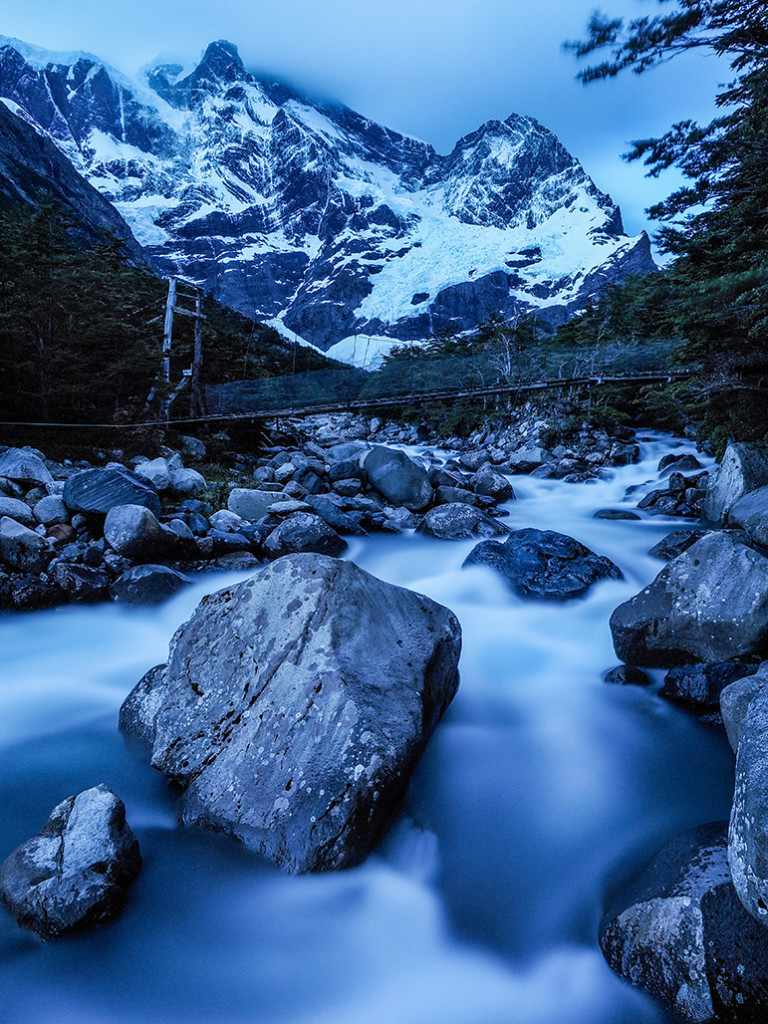
Rio Francis, Valle del France
Oly E-M1 9-18mm 3 minute exposure
The Park requests that hikers limit the stay at this site to one night, but we decided that this was such a classic view we needed to break the rules — that afternoon we hiked back up, the sun was out, and it was beautiful. We camped again in Campimento Torres and woke early the next morning to hike up the third time. At this point, Maggie had given up on my speed-hiking ability — kids today just don’t understand the charm of moving slowly, filling oneself with the beauty of the moment. Made it in time for a stunning sunrise, watching as the light moved over the face of the mountains.
We broke camp, made it back down (up??) the valley and headed out for the second leg of the hike — a 6 mile hike on the Sendero Paso Los Cuernos. This trail skirted the southern edge of Monte Alte Nieto and the other peaks in this group. Mountains to the north and the turquoise waters of Lago Nordenskjold to the south gave us a beautiful panorama as we hiked another uphill stretch. Maggie claims there were some downhill legs, but that simply isn’t true.
As we started nearing the terminus for today’s hike/climb, it started raining. A cold, steady rain that forced us to stop to put on rain gear. Did I mention that Patagonia is also known for its winds? We found those winds, which were a constant for most of our time in the park — winds in the 50-60 mph range were not uncommon. We’d heard horror stories from other TdP trekkers, one guy telling me that they were hiking one leg when winds hit them, not only ripping off glasses and sunglasses, but lifting a couple of hikers into the air, breaking some bones. The winds can be brutal.
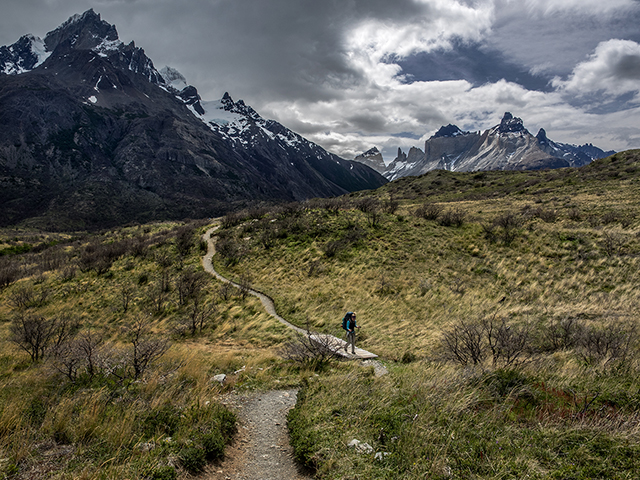
Trail in TdP
Oly E-M1 12-40mm f2.8
Ooops, forgot to mention that after that first day of hiking and dehydration, I made the executive decision that we should change our hiking intention from the 80-mile “O” to the shorter, 50+ mile “W” hike, which really takes you to the highlights of Torres del Paine. This decision was based on my concern that Maggie may get too far in front of me, possibly lapping me on this trail. I didn’t want her to get confused, seeing me in front when actually I was behind..or something like that. Anyway, I was thinking of her.
So, we made day three of the hike, arriving in that driving rain mentioned earlier to the campsite at Refugio Los Cuernos. A campsite and small lodge, this place was crammed with other hikers trying to get out of the rain. The lodge had a restaurant, a warming room, and showers…we signed up for dinner at the lodge and hung out in the warming room, which was filled primarily with kids — meaning hikers under 50. Standing in this room, beer in hand, it struck me that I was kind of unusual here…very few mature hikers in this place…however, Maggie looked right at home.
Tent finally set up, we made our way up to dinner, a luxury after several meals cooked at the tent. Also, made our way back to utilize the showers. We realized pretty quickly that we were using the bathroom facilities meant for guests of the lodge — we were supposed to be using the “showers” a short distance away — which were small, dark, crowded, dirty cubicles unfit for man or daughter. So, we took advantage of those nicer facilities of the lodge.
Next morning: pack the tent, fill the backpacks, head out for the next uphill trek to Campimento Italiano. Now, anyplace named for anything Italian, in my eyes, should include access to great Italian cuisine. Instead, it was a “Mountain House” freeze-dried dinner of Jamaican Jerk Chicken. Good, but no Bolognese. Camped there for two nights, along the Rio Francis that flows near the entrance to the Valle Del Frances.
We hiked up the valley to an incredible overview of the peaks…then headed back to Campimento Italiano. Overnighted and headed out the next morning for Refugio Paine Grande. Set up our tent in time to enjoy a great dinner, followed by unbelievable winds that tore down a couple of tents around us, keeping us awake all night. Next morning, headed up to Refugio Grey, about a 4-5 hour hike. Stunning views of the Grey Glacier and lakes below that icefield. Stayed overnight at that campground, nice meal in Refugio…hiked back down the following day to our final night at the Paine Grande campsite. And, out the next morning.
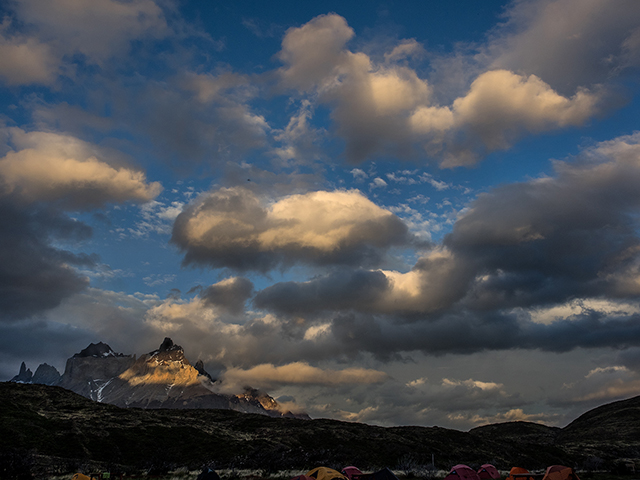
View from tent
Oly E-M1 12-40mm f2.8
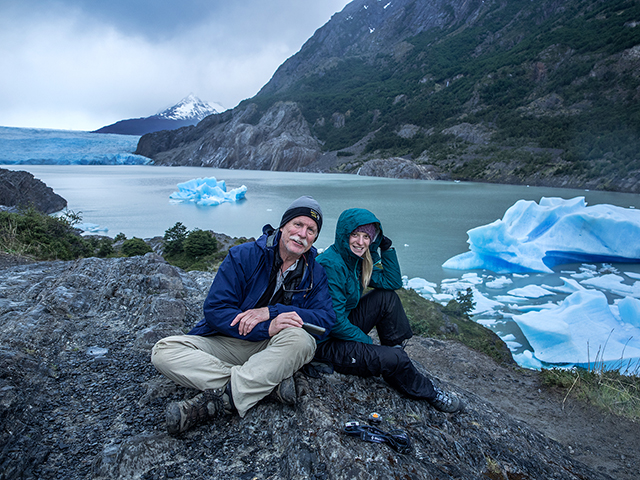
Jay and Maggie, Grey Glacier
Oly E-M1 12-40mm f2.8
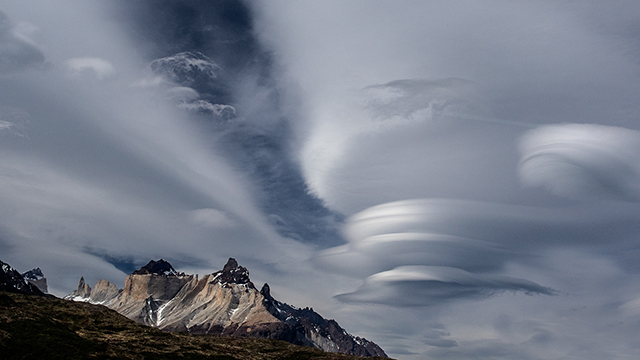
- Amazing clouds above TdP
Oly E-M1 12-40mm f2.8
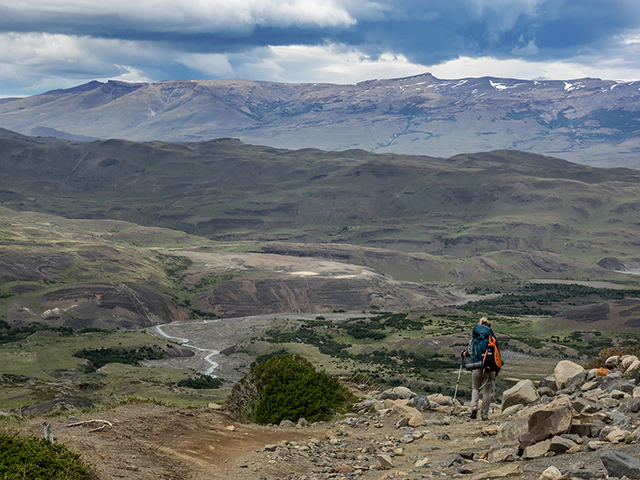
Patagonia
Oly E-M1 40-150mm f2.8
We had an incredible time and an amazing adventure. Plus, getting to spend this much time with Maggie, not that many opportunities with our busy schedules…priceless, as the saying goes.
We flew home on Thanksgiving morning and made it to the house in time for Thanksgiving dinner … and 5 days later I headed out for Namibia, Africa, for a National Geographic Adventure.
Next stop – Namibia
I’ve been to Namibia before, it’s one of those places that come to mind immediately when asked to list your favorite places. Primarily landscape and culture, the visual possibilities are tremendous. This was a relatively small group, 6 travelers plus the guide and myself — an intense trip that took us to several Namibian highlights.
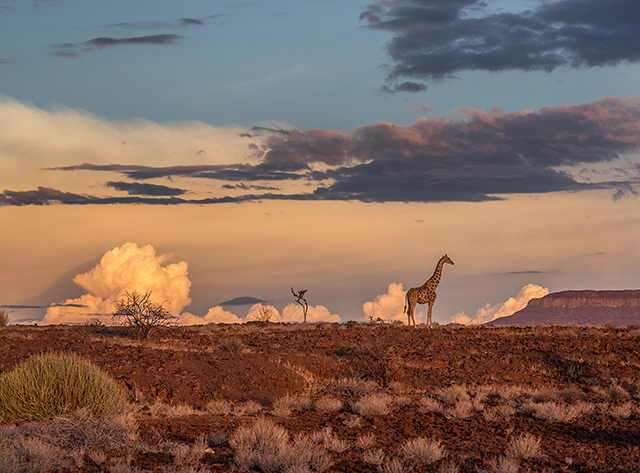
Near Rhino Camp, Namibia
Oly E-M1 40-150mm f2.8
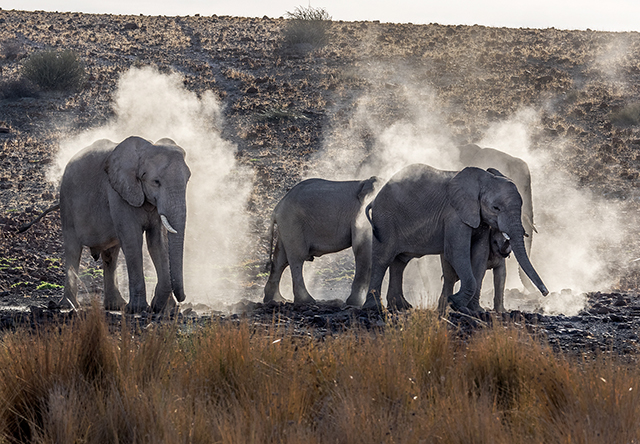
Rhino Camp, elephants dusting
Oly E-M1 40-150mm f2.8
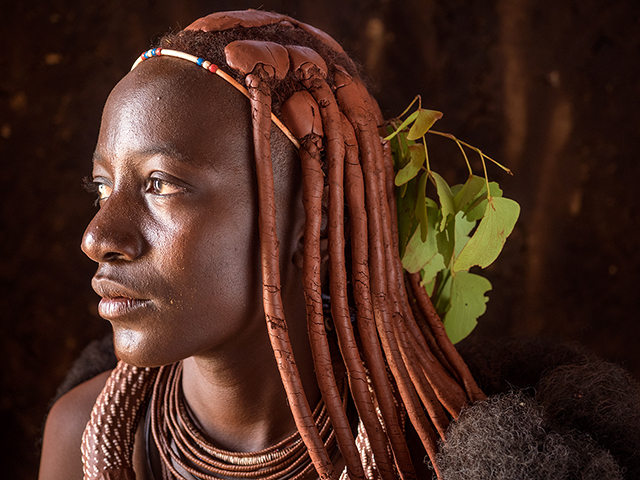
Himba woman
Oly E-M1 12-40mm f2.8

Himba women with child
Oly E-M1 12-40mm f2.8
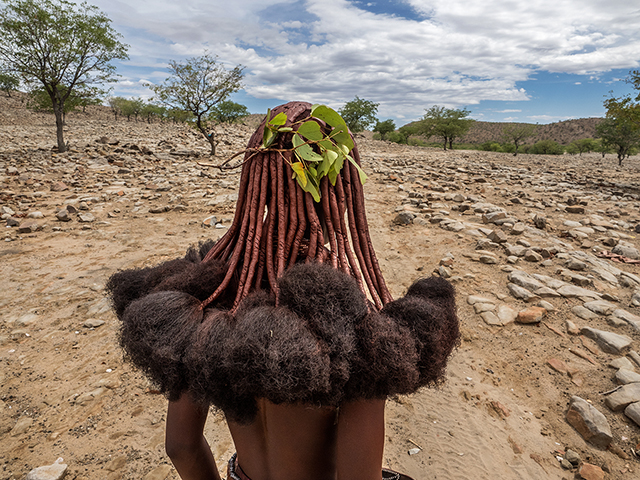
Himba woman in village
Oly E-M1 12-40mm f2.8
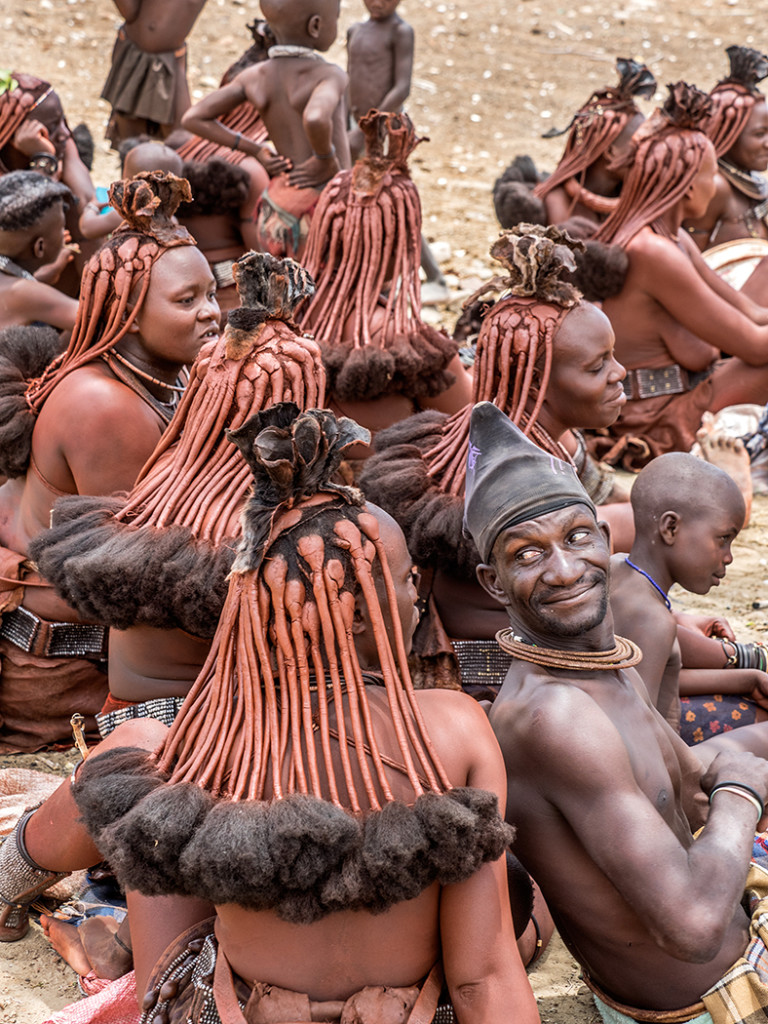
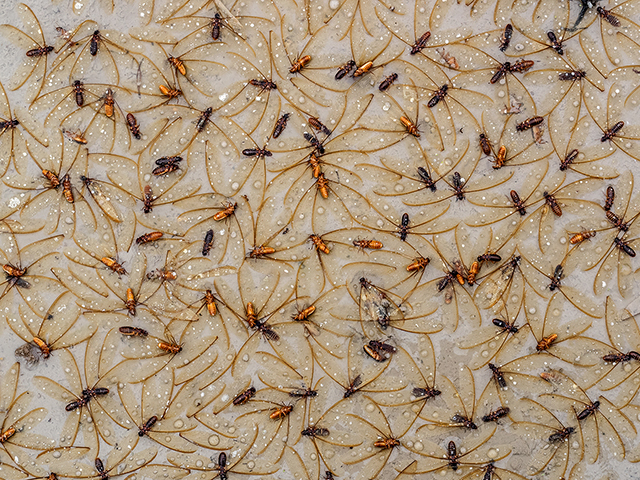
Termites caught in puddle
Oly E-M1 12-40mm f2.8
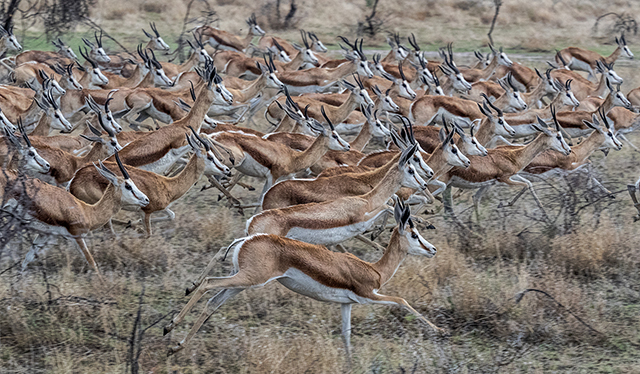
Wildlife, Etosha
Oly E-M1 40-150mm f2.8 MC-14 extender
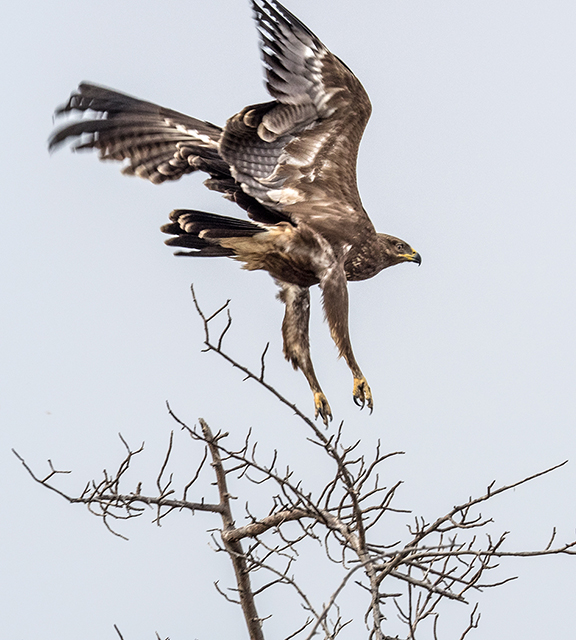
Hawk landing
Oly E-M1 40-150mm f2.8
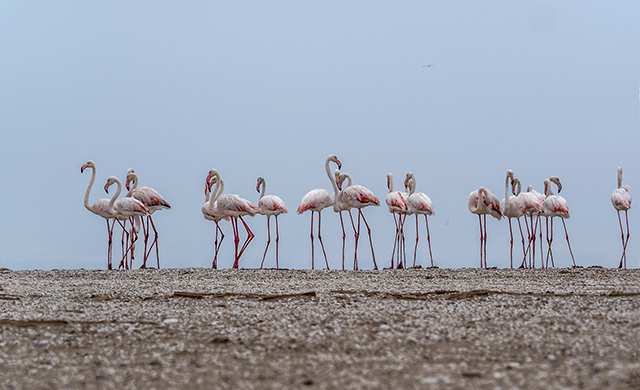
Flamingos, Walvis Bay
Oly E-M1 40-150mm f2.8
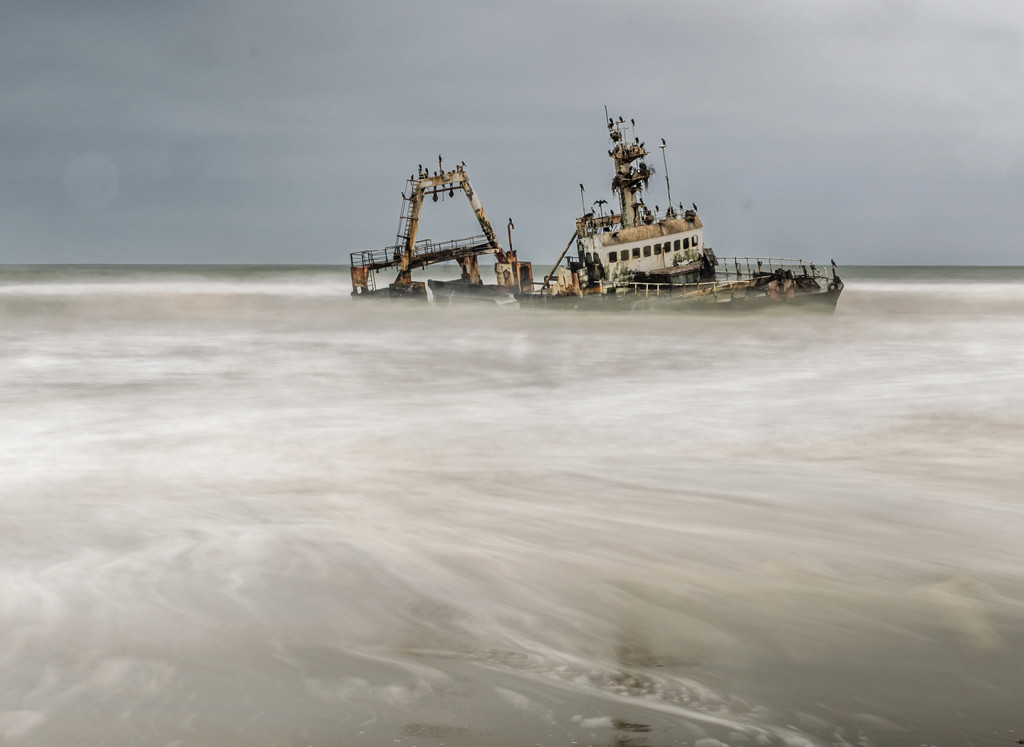
Shipwreck, Swakopmund
Oly E-M1 12-40mm f2.8 30 second exposure, Singh Ray Vari ND filter
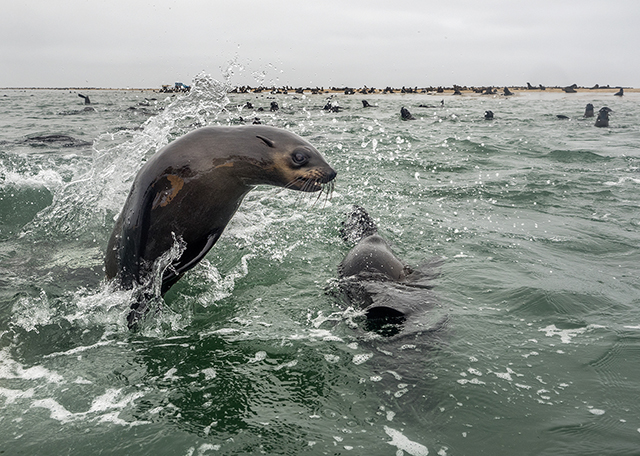
Sea lions, Walvis Bay
Oly E-M1 12-40mm f2.8
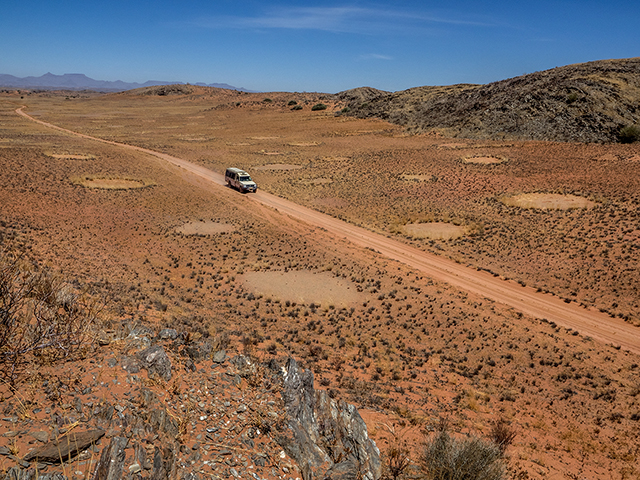
“Fairy Circles,” Namibia
Oly E-M1 12-40mm f2.8
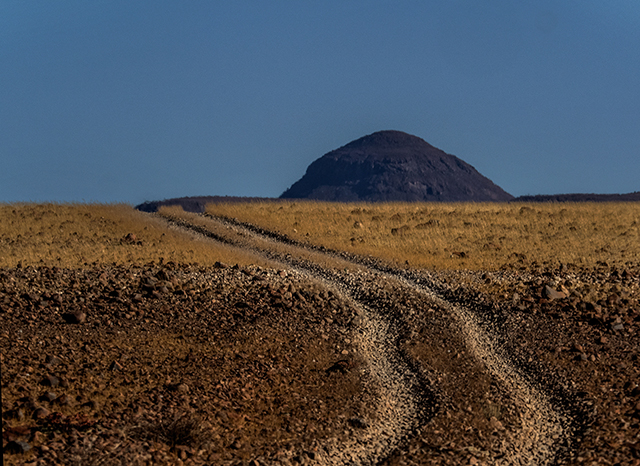
Rhino Camp
Oly E-M1 40-150mm f2.8
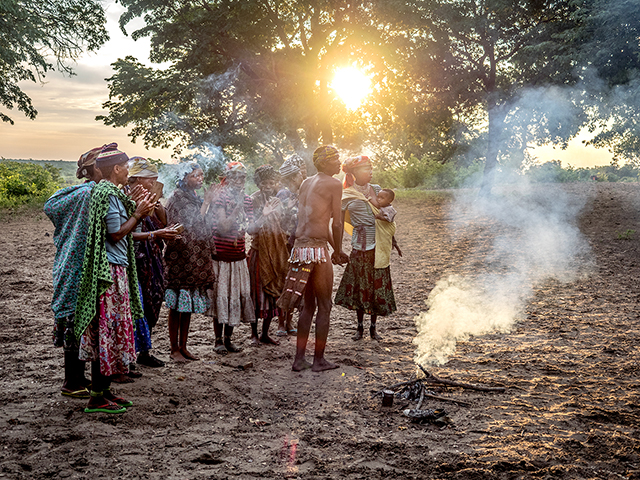
Healing ceremony, Bushmen camp
Oly E-M1 12-40mm f2.8
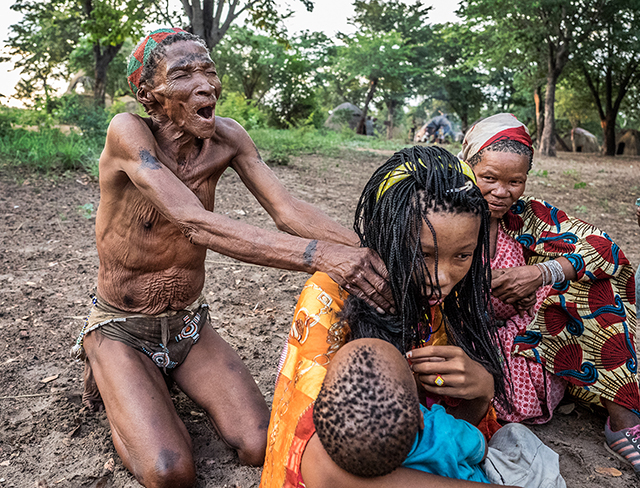
Healing ceremony, Bushmen camp
Oly E-M1 12-40mm f2.8
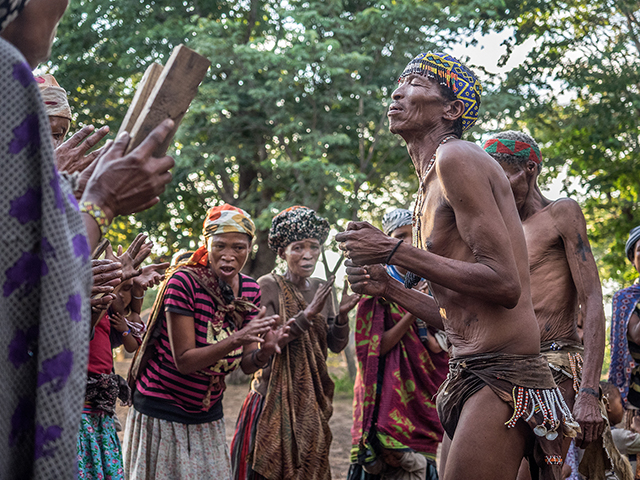
Healing ceremony, Bushmen camp
Oly E-M1 12-40mm f2.8
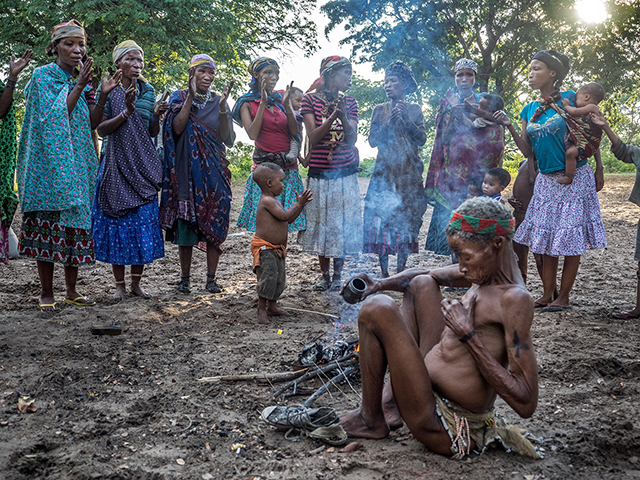
Healing ceremony, Bushmen camp
Oly E-M1 12-40mm f2.8
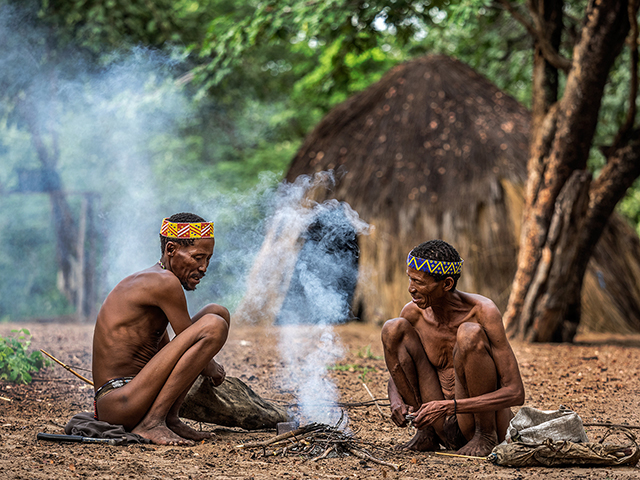
Ju-hoans Bushman village
Oly E-M 40-150mm f2.8
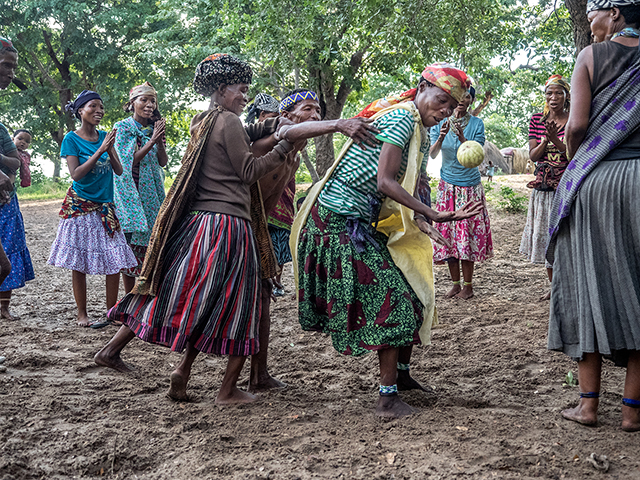
Women’s game in Ju-hoans Bushmen village
Oly E-M1 12-40mm f2.8
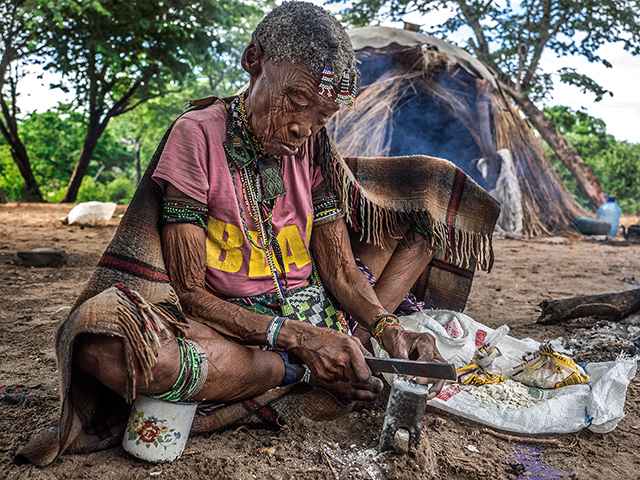
Woman villager- Ju-hoans Bushmen village
Oly E-M1 12-40mm f2.8

Ju-hoan hunter gatherer drinking from root vegetable
Oly E-M1 40-150mm f2.8
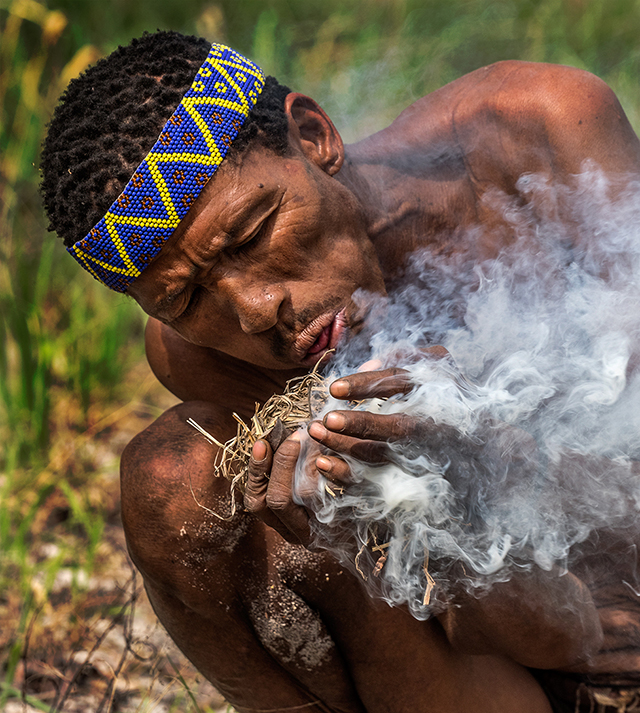
Ju-hoan hunter gatherer starting fire
Oly E-M1 40-150mm f2.8
The Namibia trip presented a great opportunity to work with new Olympus 40-150mm f2.8. Along with the new 1.4 teleconverter, this combination provides the photographer a tremendous wildlife setup-a very lightweight and extremely high quality lens that provides a range of 80mm to 420mm (with teleconverter-in 35mm field of view). I’ve spoken at length at the benefits of the Micro Four Thirds system, and it was proven out once again. Africa creates it’s own set of demands for the photographer: often limited space and weight requirements, long hours of shooting from safari vehicles with camera “at ready,” and long treks carrying your “real world” equipment.
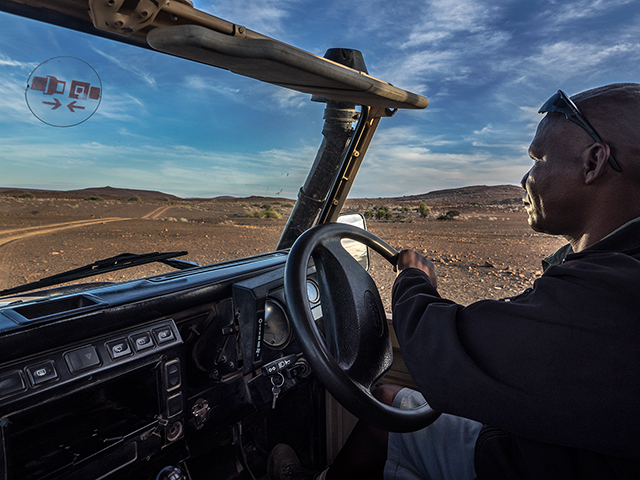
Our guide, Ally, driving in Rhino Camp
Oly E-M1 9-18mm
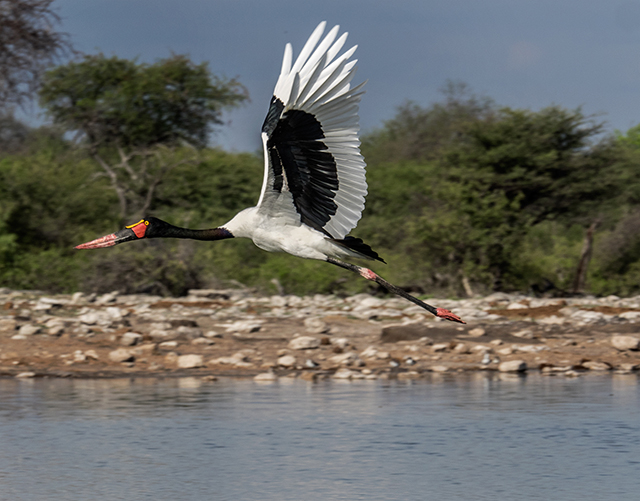
Near the Etosha Pan
Oly E-M1 40-150mm f2.8 w/MC-14 extender
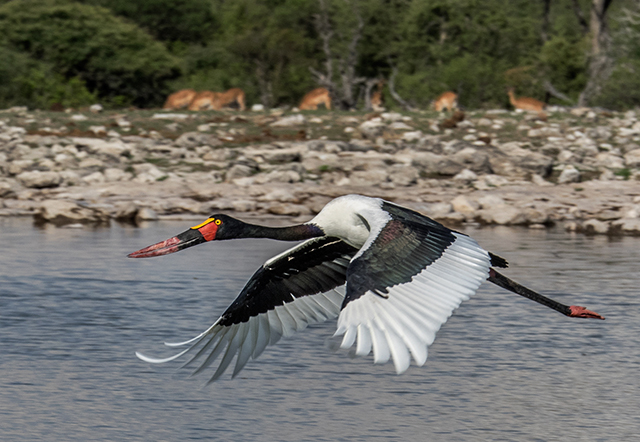
Near the Etosha Pan
Oly E-M1 40-150mm f2.8 w/MC-14 extender
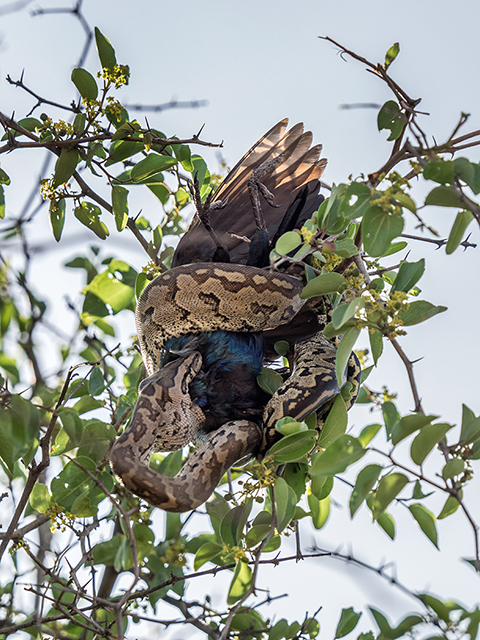
Rock python swallowing Starling
Oly E-M1 40-150mm f2.8 w/MC-14 extender
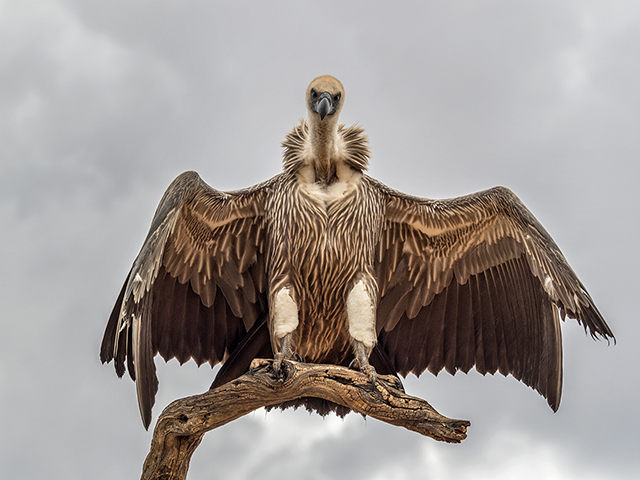
Vulture chick
Oly E-M1 40-150mm f2.8
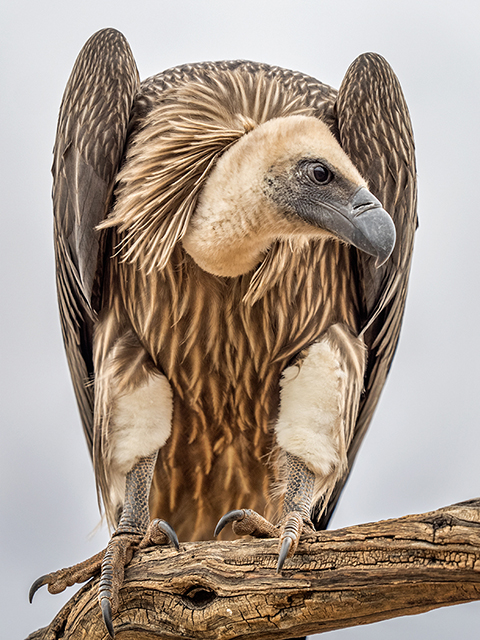
Vulture chick
Oly E-M1 40-150mm f2.8
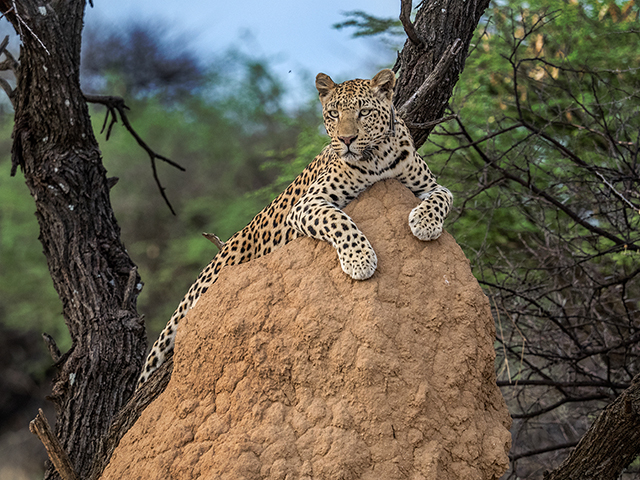
Leopard on termite mound
Oly E-M1 40-150mm f2.8
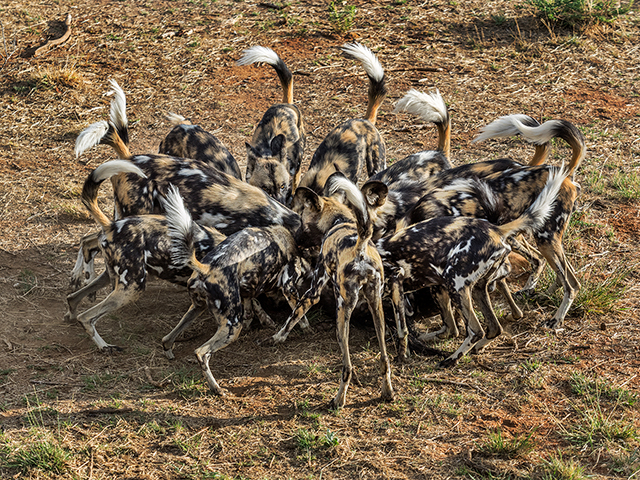
Wild dogs of N/a’an ku sê
Oly E-M1 40-150mm f2.8
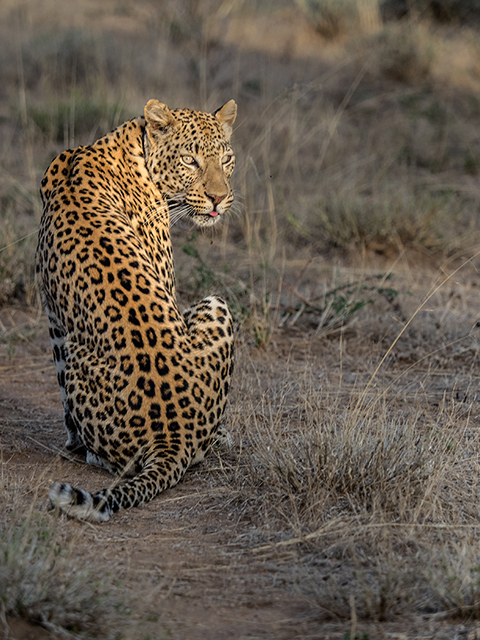
Leopard at dusk
Oly E-M1 40-150mm f2.8
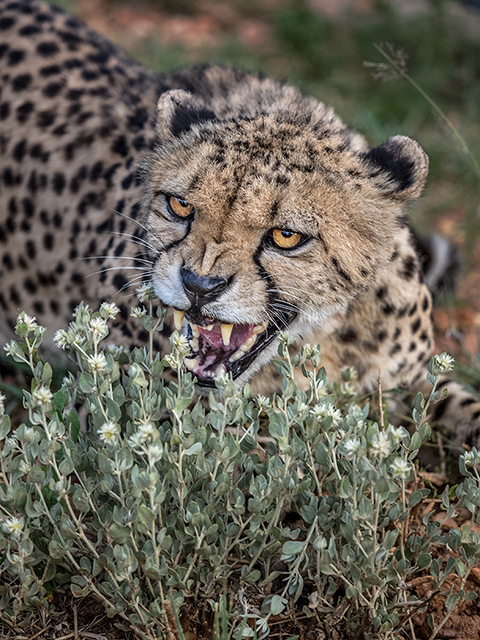
Cheetah at N/a’an ku sê
Oly E-M1 40-150mm f2.8
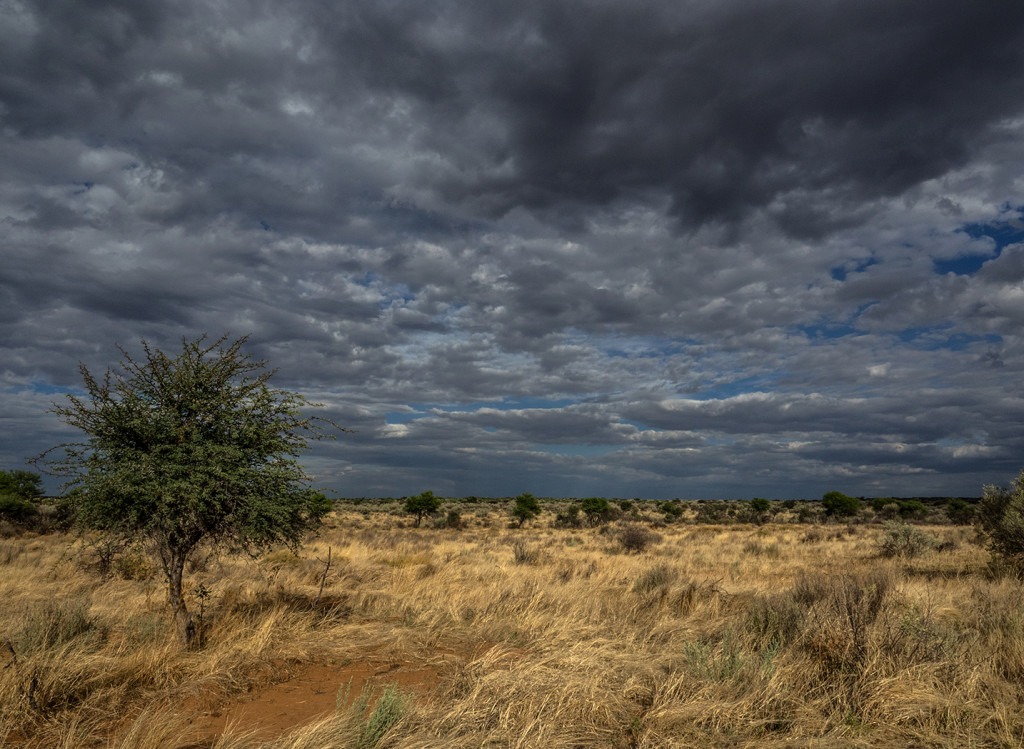
N/a’an ku sê
Oly E-M1 12-40mm f2.8
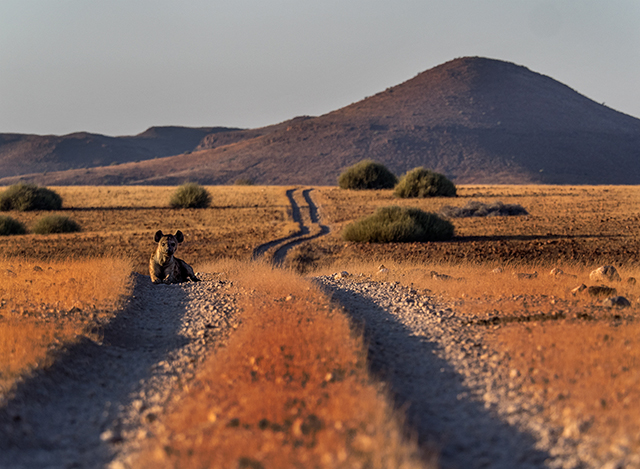
Hyena in road, Rhino Camp
Olympus E-M1 40-150mm f2.8
Looking back over this post, I am struck at incredibly fortunate I am to get to do this “job.” At times, I get so tired of traveling, I don’t want to leave our home, I don’t want to leave Becky..I’m ready to do anything if it doesn’t entail leaving my home…at that point, I always go through the same drill…I’ll pick up my camera out of the bag, and it’s still an electricity that goes through me..the fact that I get to do this is astounding..if that feeling ever leaves, it’s time to get a real job….
